- Search Please fill out this field.
- Manage Your Subscription
- Give a Gift Subscription
- Newsletters
- Sweepstakes
- Destinations

These Are the Best and Worst Times to Visit Ireland
Whether you want small crowds, sunshine, or affordable rates, here are the ideal times to go to Ireland.
:max_bytes(150000):strip_icc():format(webp)/Jillian-Dara-2000-bdb4477b08f543a88d386977814c55b4.jpg)
Somehow even greener than the pictures promise, Ireland is a land of fairy tales and political revolutions, poetry and pubs, rainbows and, well, quite a bit of rain. Millions of tourists flock to the Emerald Isle each year, seeking its quaint villages, lush green landscapes, stunning coastline, historic castles, and more.
While there is no one "perfect" time to visit Ireland, different seasons offer different experiences, from the quiet and drizzly winter to the sunny (but crowded) summer. Here's a basic breakdown of what you can expect.
- High Season: June to August, plus the month of March
- Shoulder Seasons: April to May and September to November
- Low Season: December to February
The best time to visit Ireland is, ultimately, up to you — and the items on your to-do list.
Best Times to Visit Ireland for Smaller Crowds
Since Ireland's rainy climate can be a deterrent for some travelers, the country sees its largest influx of tourists in summer when the odds of a warm, sunny day are at their highest. If you value smaller crowds over perfect weather, you'll want to visit outside of this busy season.
Winter is the least crowded time of year in Ireland, and it offers a great chance to enjoy indoor attractions, from the historic Trinity College Library to the thousands of pubs scattered across the island. Spring and fall are also less busy than the summer months, but the crowd-averse should avoid March, when St. Patrick's Day draws hundreds of thousands of tourists.
Visitors may also want to keep an eye on the Gaelic sports schedule. Many Irish people who don't live in Dublin stream into the city for major tournaments, so game days can be crowded in the capital but peaceful in the emptied-out countryside.
Best Times to Visit Ireland for Good Weather
Ireland's weather is changeable, but it's not extreme. The temperature rarely falls below freezing in the winter or rises above 70 degrees Fahrenheit during the summer. It's not uncommon to see bright sun and cloudy skies in quick succession, regardless of the time of year.
And let's get this out of the way: It will rain, so be ready for it and pack your bags accordingly . Trip timing, though, can affect just how much rain (or sun) you are likely to see. Summer is sunniest, with daylight stretching late into the evening, especially in late June and July. Between November and February, meanwhile, Ireland is dark, cold, and wet — but it can also feel quieter and cozier. Keep in mind, though, that your trip is unlikely to be a total rain-out no matter when you visit. Short, isolated showers are more common here than full-day lashings.
If you want to hike through the countryside, play on one of Ireland's famous golf courses, or take in the country's natural beauty with a scenic road trip , aim to visit between April and September. That way, you can take advantage of longer daylight hours and more pleasant weather.
Best Times to Visit Ireland for Festivals and Events
Ireland celebrates a lot more than just St. Patrick's Day (a holiday that, before its more raucous iteration, was historically a religious celebration). On June 16, for example, Dublin's streets swell with James Joyce devotees observing Bloomsday — the anniversary of the date when the writer's groundbreaking novel, "Ulysses," takes place.
Each August, the County Kerry town of Killorglin organizes Ireland's oldest festival, the Puck Fair , where a wild goat is crowned "King Puck" for the duration of the event. September draws legions of oyster lovers to Galway for the Galway International Oyster and Seafood Festival , while summer is busy with events across the countryside, like the SeaSessions music and surfing festival held each June in County Donegal.
But you don't have to wait for a festival to enjoy live music in Ireland. Tons of pubs across the country offer live tunes throughout the year, so you can sing along to classic Irish songs and enjoy the festive atmosphere whenever you visit.
Tessa Desjardins/Travel + Leisure
Most Affordable Times to Visit Ireland
Ireland's drizzly and dark winter is the least expensive time to visit, as long as you avoid the weeks around Christmas and St. Patrick's Day. Some high-end hotels, like County Limerick's Adare Manor , offer enticing off-season rates in the winter months, but watch where you book — some smaller bed-and-breakfasts take the whole winter off, especially in summer tourist hot spots like the Dingle peninsula .
Airfare costs also tend to be at their lowest in the winter. Spring and fall, though, can also be affordable times to fly, especially if you catch one of the frequent shoulder-season sales from the Irish national airline, Aer Lingus .
The best overall tip for budget-conscious travelers is simply to avoid the summer. Flight and hotel costs are both at their highest in June, July, and August, so those busy months are the toughest time of year to snag a discount.
Worst Times to Visit Ireland
Summer's peak popularity corresponds with a rise in airfare and accommodation rates, making it a less-than-ideal time for visitors in search of good deals or small crowds. That said, though, summer does offer the best chance that even the smallest B&Bs and rural attractions will be open, so it's not without its perks.
St. Patrick's Day follows closely behind the high summer with regard to both crowds and costs. Unless you are determined to spend the holiday in Dublin's Temple Bar district, it's best to avoid traveling to or from the country around March 17.
While winter is the least busy time to visit Ireland, it's also when the weather is at its worst. For a nice compromise between weather and crowds, visit in the shoulder seasons of either spring or fall.
Related Articles
Change location
- UK / International
- Call toll-free from 9am EDT
- 617-223-4521 617-223-4757 or
- REQUEST A QUOTE
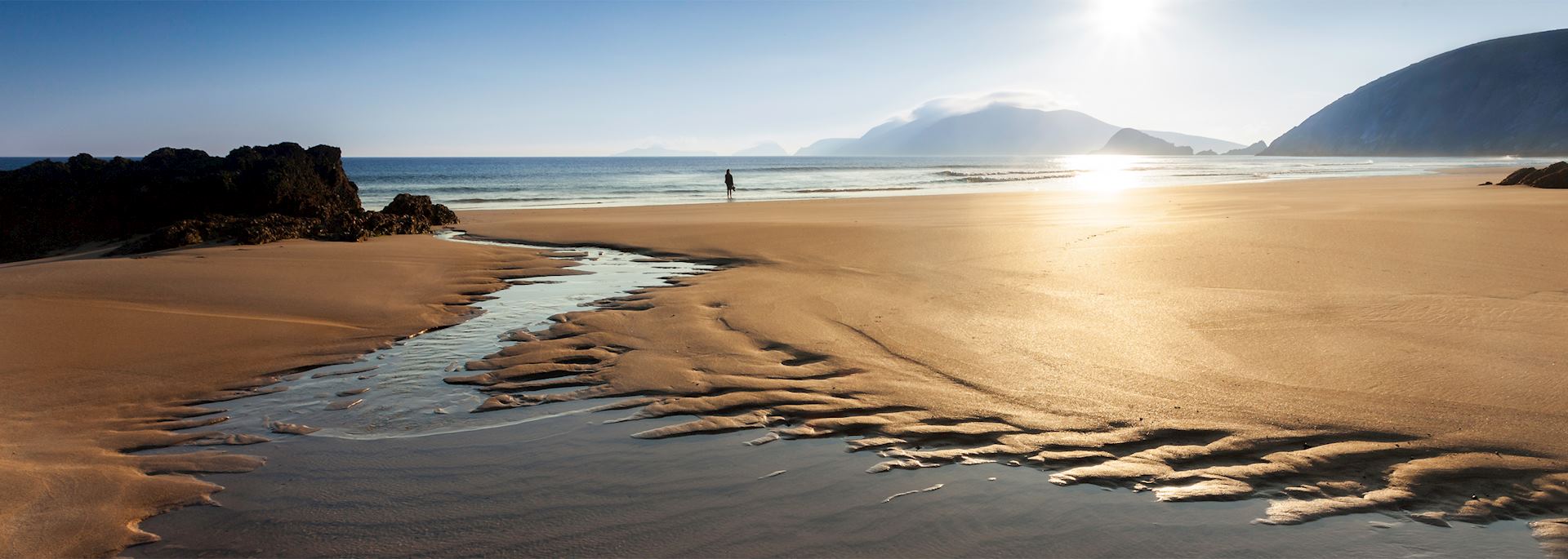
When is the best time to visit Ireland?
- Dingle Peninsula
- Month-by-month
The best time to visit Ireland is between March and May, and September to November, when it’s not as crowded as it is in summer, or as cold as it is in winter. That said, Ireland has a mild, temperate climate and although it’s rainy at times, you can visit all year round. The changes in weather are not normally extreme.
Summer (June, July and August) is the warmest time of year, when Ireland’s landscapes are at their most vibrant and the days are at their longest. However, it’s also crowded and prices are at a premium.
Some sites close from late October, and temperatures drop, but on average, they remain above freezing even in winter. This can be a wonderful time to see Ireland at its most calm.
- Make an inquiry
- Request a brochure
Month-by-month guide for traveling in Ireland
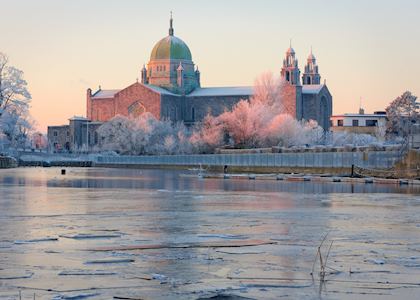
Visiting Ireland in January - February
Temperatures are at their lowest but still hover around 42°F. Many hotels in rural areas will be closed but it’s still possible to base yourself in large towns or cities and explore from here. Toward the end of January, a traditional music and culture festival is held in the Temple Bar district of Dublin .
Events & Festivals
- TradFest music festival celebrates traditional Irish music. One of the highlights of the festival is the historic venues, from St Patrick’s Cathedral to Dublin’s City Hall.
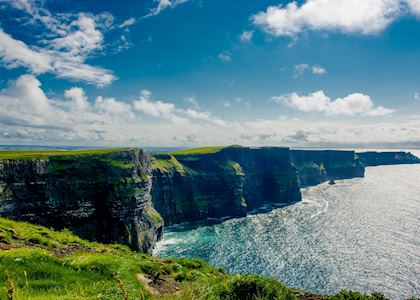
Visiting Ireland in March
Saint Patrick's Day is on March 17 and is a national holiday for the Irish. Expect crowds in all the cities and a party-like atmosphere over the whole weekend, with live music and dancing, and the streets awash with people in green.
- On the 17th March Ireland erupts in festivities to celebrate St Patrick, the patron saint of Ireland.
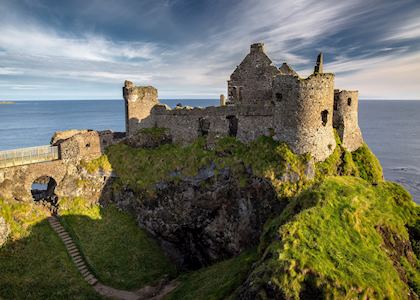
Visiting Ireland in April - May
Temperatures get warmer and spring flowers reach their peak. Vivid fuchsias lining the roads along the west coast, particularly around Kerry, begin to flower. In May, summer visitors start to flock to Ireland and prices rise accordingly.

Visiting Ireland in June
Gardens throughout Ireland sing with vibrant hues and temperatures are pleasantly warm, averaging at around 56°F. In mid-June, Bloomsday is celebrated in Dublin , focused on the life of poet and novelist James Joyce.
- Bloomsday is a cultural festival with performances and readings marking the day when Ulysses, a novel by James Joyce, was completed.

Visiting Ireland in July - August
This is the busiest time of year for visitors, coinciding with the schools finishing for the summer. Temperatures are at their warmest and, in theory, these are the driest months, although visitors to Ireland should really expect rain at any time of year. Galway International Arts Festival is held during mid to late July, while the Dingle Regatta (a water festival of boat races), is held in early August.
- At the Dingle Regatta spectators gaze at the rowers as they navigate their way around the course in traditional Namhóg canoes, jostling for first position.
- From July 17-30, the small Irish town of Galway hosts an international arts festival. Expect live music, theater and art.

Visiting Ireland in September
This is the last month possible to visit the Skellig Islands, as between October and April the weather is deemed too unpredictable. This also tends to be the last month most wildlife boat tours operate as beyond September a lot of marine wildlife journeys to warmer climes. The deepening foliage of the season spreads from mid-to late-September and the hillsides turn purple as the heather flowers. A number of food festivals are held in September, including the Galway International Oyster and Seafood Festival.
- Feast on fresh, native Galway Oysters in the longest standing oyster festival in the world.

Visiting Ireland in October
The changing hues of the season reach their peak in October, and the mountains take on russet shades as the bracken dies. Some sites close toward the end of October as visitor numbers and temperatures decrease. The Kinsale Gourmet Festival is held in early October, a celebration of local produce, and Cork's International Jazz Festival is usually held toward the end of the month.
- Jazz lovers flock to Cork in late October, and with good reason. This international festival boasts an impressive list of past performers, with Ella Fitzgerald and Herbie Hancock topping the list.
- Kinsale Gourmet Festival celebrates local, fresh food in ten restaurants around the seaside town.

Visiting Ireland in November
This is when Ireland truly begins to quieten, and some hotels outside the cities may close for annual renovations. It’s also typically the wettest month and temperatures average around 50°F in the south and 45°F in the east and north.
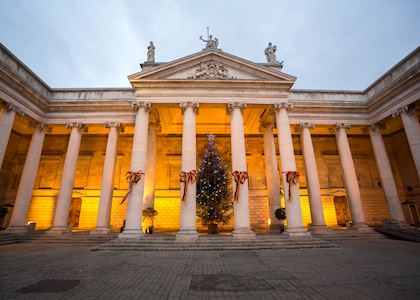
Visiting Ireland in December
Christmas festivities start at the beginning of the month, with decorative lights in towns and cities, plays and Christmas markets. December is a fairly cold month, but this can result in beautifully picturesque landscapes of frost-covered hills and trees. It's fairly windy along the coast, but those hotels that remain open often welcome guests with roaring log fires and hearty food.
Ireland Climate Guide
Why travel with audley.
- 100% tailor-made tours
- Fully protected travel
- Established for over 25 years
- 98% of our clients would recommend us

Travel advice
Practical tips for traveling to Ireland, from social protocols to guidance on money matters, with a link to the latest US State Department travel advice.

Request our brochure
Covering all seven continents, The World Your Way shows you how you can see the world with us. It features trip ideas from our specialists alongside hand-picked stays and experiences, and introduces our approach to creating meaningful travel experiences.
Trip ideas and travel guides for exploring Ireland
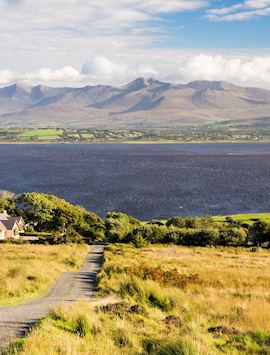
Family self-drive tour of Ireland
8 days from $5,105pp
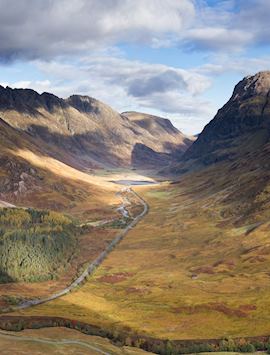
Self-drive wild Scotland & Ireland
10 days from $7,230pp
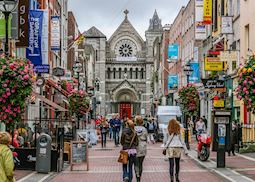
What to do in Dublin: a first-hand guide
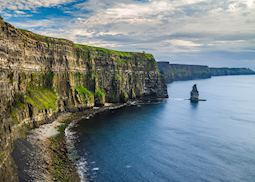
Natural Ireland: the coast, cliffs and countryside
11 min read


Best Time to Visit Ireland: Month by Month Breakdown
Ireland is well known for its cold and rainy weather, but don’t let that put you off visiting the Emerald Isle, because this is truly a beautiful country to explore.
Ireland though is one of the wettest places in Europe and it’s rare to go too long without at least a light shower.
It goes without saying to always pack a raincoat, even in the midst of summer, because you never know when the clouds will burst.
Summer is when you have the best weather though of course, and June to August is always peak season in Ireland. This is when the hiking is best and the cities are at their liveliest.
Winter is long, cold and dreary, and you can expect unpleasant weather from September through to May, but there’s still plenty to do across the country.
The cities, such as Dublin or Cork are year-round destinations, while during the autumn the countryside is wonderfully resplendent in a myriad of shades and colors.
There’s a lot to do across the country, so to help you decide when the best time to visit Ireland is, here’s our month by month guide.
Don’t leave home without: Lonely Planet Ireland (Travel Guide)
Table of Contents
January in Ireland

January isn’t traditionally seen as the best time to visit Ireland, but actually, it’s the perfect time to escape the tourists.
Aside from the New Year celebrations, Ireland is usually quiet in January. Flights are cheap and accommodation can be a bargain, but best of all, you won’t be queuing for hours at a time to see the most popular tourist attractions.
The weather is decidedly bad in January though, which is why things are so quiet. There’s rain and snow and the days are incredibly short.
It’s not a good time for outdoor activities but take the chance to explore cities without the crowds or to visit famous sites such as Blarney Castle or the Guinness Brewery, and to have the attractions to yourself.
February in Ireland
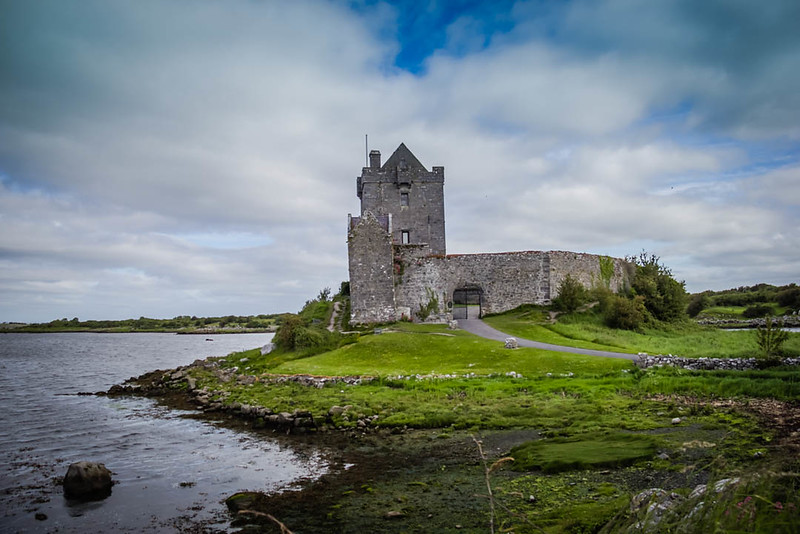
In February, things are still incredibly quiet across Ireland, and you can still enjoy the most popular tourist attractions without the crowds.
Just like in January, the weather is still notoriously bad in February, and this is usually one of the rainiest months of the year, with snow falling too, and usually turning the streets to slush.
The weather is undeniably miserable, so this is not the best time to visit Ireland if you’re looking to enjoy the Irish countryside or the coastline.
Instead, stick to the cities. Visit Dublin and explore the museums and historic attractions or spend your vacation eating and drinking your way around the pubs and taverns in Cork or Galway, where you’ll find a lively cultural scene at any time of the year.
March in Ireland
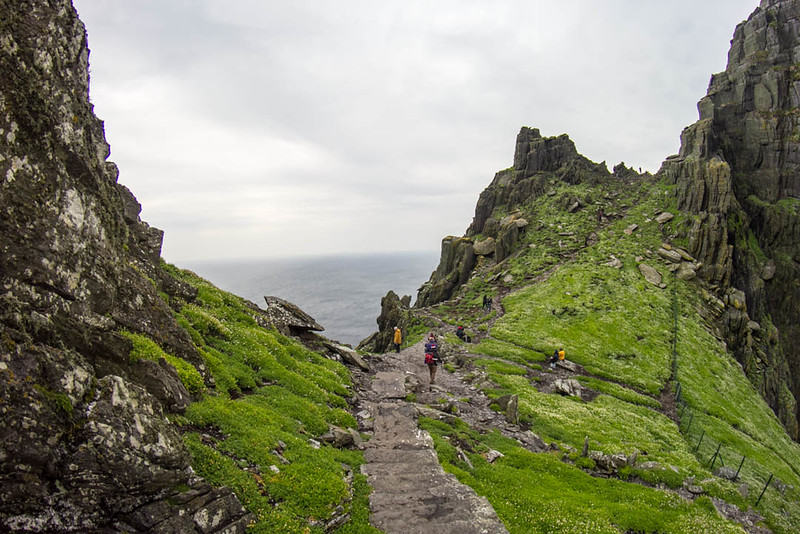
March is when the really bad weather begins to dissipate, and when the temperatures slowly start to rise as the days start to get longer.
There’s still a lot of rain of course – this is Ireland, remember – but you can start to head out into the countryside or along the coast to enjoy the scenery.
March is generally quiet, although this changes on St Patrick’s Day. This is Ireland’s famed national day, a celebration of all things Irish that brings in millions of visitors from across the world.
The best place to be for the 17th March is Dublin, where you can watch the St Patrick’s Day parade before enjoying a Guinness or two in the bars.
April in Ireland
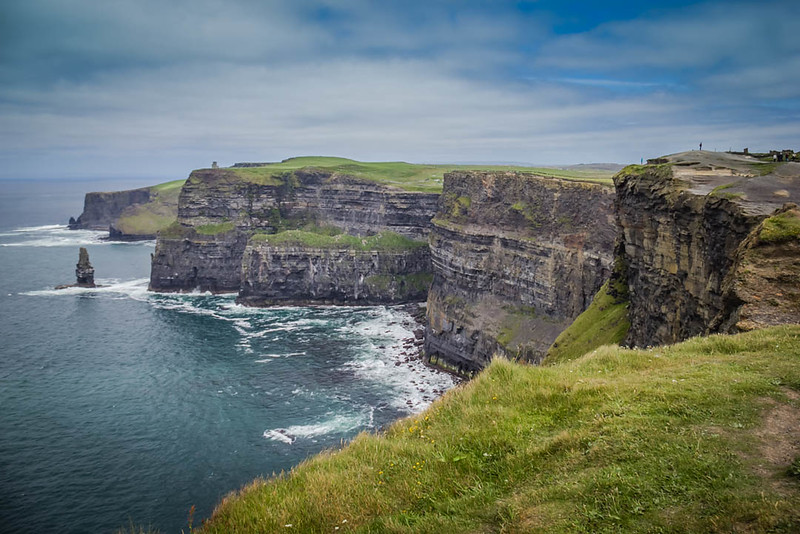
In April the weather begins to get better still, but it can still be wet and cold. This is springtime and the countryside looks marvelously splendid when the sun shines and the flowers bloom.
April is still quiet as the high season hasn’t yet really begun, but it can get busy if Easter falls this month.
This is the best time to visit Ireland to start hiking, as the weather is nice and cool and popular trails in places such as Killarney National Park aren’t yet so busy.
Take the opportunity to visit the Cliffs of Moher or to road trip the Ring of Kerry before the summer crowds arrive in the following months.
May in Ireland

May is the best time to visit Ireland to beat the summer crowds. This is the start of the high season, but compared to June and July, May is comparatively quieter.
The weather is great in May, although of course, you always need to be prepared for a rain shower.
Head to popular spots along the Wild Atlantic Way, hike to waterfalls or explore the beaches and seaside towns, and make the most of the sun while it lasts.
The countryside is beautiful in May and the weather is perfect for multi-day walks such as the Kerry Way, which will take you to some of Ireland’s best scenery and most charming rural villages.
June in Ireland

It’s peak season in June and this is not the best time to visit Ireland if you’re looking for peace and quiet.
Things are busy because the weather is usually quite glorious – or at least, it only rains once or twice in the month!
Enjoy the Irish countryside and the great outdoors, and head to the beaches along the Wild Atlantic Way where the water might even be warm enough for a quick swim in the ocean.
July in Ireland

July is even busier than June because many families will be visiting or exploring Ireland during the school holidays which tend to fall this time of the year across Europe.
Again, this is not the best time to visit Ireland if you appreciate a quiet holiday, because Ireland’s most famous attractions will all be chaotic and busy.
This is the time to head further afield. Rent a car and drive to lesser-known spots along the Atlantic Ocean, or tackle the longer multi-day hikes where you’ll find some solitude.
You’ll also want to enjoy the beaches and take a boat over to the Skellig Islands, which are only open for a short period each year during the summer season when the water is calm.
August in Ireland

August can be just as busy as July because it’s always school holidays too throughout the month.
The weather is still good but not quite as good as June and July, as things are getting slightly colder and there will be more rainy days, especially towards the end of August.
The cooling weather makes this a great time for hiking, and you’ll definitely want to get out of the cities and away from the busy tourist attractions to explore the lesser-known and quieter parts of Ireland.
September in Ireland

Things quieten down in September, although the start of the month can still be busy.
Peak season is drawing to a close but the weather is still great – at least on Irish terms anyway.
It can rain a lot of course but there’s still lots of sunny days too. It’s a good time for hiking as the temperatures are cooling down, while you might even be able to squeeze in the odd beach day if you’re lucky.
Walk the Cliffs of Moher and take the last boat trips over to the Skellig Islands before the ocean becomes too turbulent.
October in Ireland

October is autumn and it’s the best time to visit Ireland to enjoy the wonderful autumnal landscapes that are found across the country.
A road trip into the countryside, and take a camera along to get the best shots of the golden, red and brown colors that you’ll find.
Take autumnal walks into the national parks or walk to crashing waterfalls and immerse yourself in the beauty of Ireland in October.
The best part is, there are few other tourists around in October because peak season is well and truly over.
November in Ireland

In November the weather is well and truly miserable once again, and the autumnal bliss is beginning to fade and be replaced with the cold and rain of winter.
November is a quiet time to be in Ireland so take the chance to visit the country’s usually busy attractions.
You can still enjoy the natural sights such as the Cliffs of Moher but plan carefully when traveling in the countryside.
Many smaller businesses begin to close down after the tourist season has ended. Stick to the cities though and everything stays open.
Flight prices and accommodation costs will be much lower in November in comparison to other months, as this is well and truly a shoulder month in Ireland.
December in Ireland

December is a cold and dreary time of the year in Ireland, but it’s also a unique time to be in the country because the run-up to Christmas and New Year is always an exciting few weeks.
You can visit Christmas markets across the country, but head to Dublin or Cork for the biggest or to Galway for the quirkiest.
You’ll be lucky to have a White Christmas in Ireland though because December is definitely a month of rain.
It’s a good chance to make the most of the warm, local taverns and to enjoy live music as you sit around a fireplace.
More on Ireland:
- 15 Cities in Ireland That Are Worth Visiting
- Driving the Ring of Kerry in Ireland: Step by Step Guide
- Visiting Skellig Michael: What You Should Know Before You Go
- 15 Spectacular Things to do in Galway
- 15 Crazy Cool Things to do in Dingle
- Ultimate 3 Day Weekend in Dublin Itinerary
- Where to Stay in Dublin
- 10 Best Day Trips from Dublin Worth Taking
- 15 Fun Things to Do in Limerick
- 15 Sweet Things to do in Cork
- 15 Fabulous Things to Do in Killarney
- 10 Best Things to do in Belfast
- 9 Castles in Ireland You Cannot Miss
- 33 Ireland Photos Guaranteed to Cause Wanderlust
- Best Road Trip Routes in Ireland
- Best Hikes in the Mourne Mountains of Northern Ireland
- Horseback Riding in Dingle, Ireland
Did you like this story? Share it!
Travel planning resources, about lina stock.
Lina is an award-winning photographer and writer that has been exploring the world since 2001. She has traveled to 100 countries on all 7 continents. Member: SATW, NATJA, ATTA, ITWA
Leave a Comment Cancel reply


Best Time to Visit Ireland (from a local)
If you are looking to visit the Emerald Isle you are probably wondering “when is the best time to visit Ireland ?”. For me, there is no bad time to visit Ireland, but for other people, there are some things that will play a role in when they decide to book that trip. With this guide, I share everything you need to know to help you make your decision.
What is the best time of year to visit Ireland for sightseeing?
Best time to visit ireland.
For its latitude, Ireland has a mild climate compared to other countries of the same latitude. This is thanks to the Gulf Stream in the Atlantic Ocean making its weather warmer and milder than would be expected. Ireland’s climate is temperate with an abundance of rainfall and a lack of real temperature extremes. Weather can be a factor in when people decide to make that visit to Ireland.
Best Time to Go to Ireland – Things to consider
When it comes to deciding the best time of year to go to Ireland, there are a few things to consider.
Budget – If you working to a strict budget when planning a trip to Ireland, the time of year will be a huge factor. Summer is the most expensive time to visit Ireland, simply down to supply and demand, while winter will be the cheapest.
What are you going for – The purpose of your visit can be another factor. If it is simply to enjoy a city break, this can be done at any time of the year. However, if you want to enjoy hiking and the outdoors, then summer is when you will have a better chance of finer weather and more daylight hours.
Do you like crowds or not – If you want to avoid crowds at the most popular tourist attractions, then a summertime visit is to be avoided. Winter sees fewer visitors but there are other compromises to be made.
Weather – Deciding when is the best time to go to Ireland can simply come down to the weather. Winter can be cold and wet, while summer can be warm and dry. But, and it’s a big but, you can often see rain during summer. If it is a decision between cold temperatures or warmer ones, then your decision is already made for you.
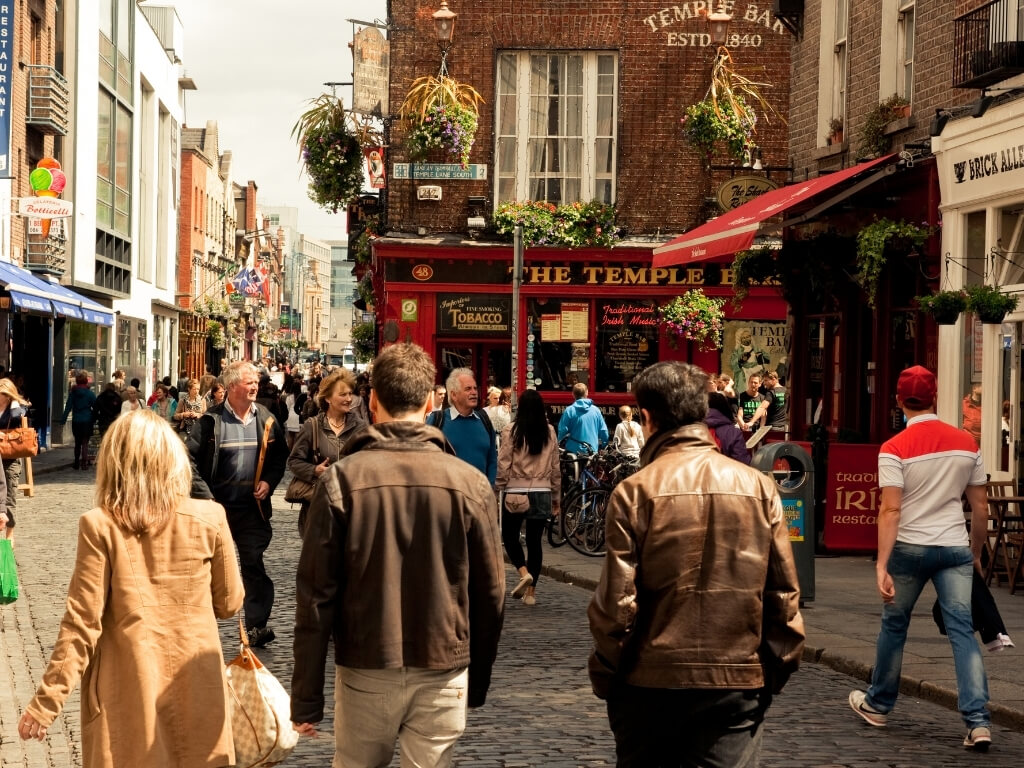
When is the best time to visit Ireland – Month-by-month weather
As already mentioned, the best time of the year to go to Ireland can be based on a few factors but the majority of the time, people make the decision based on the weather. Here is a month-by-month guide to help you narrow it down.
January – This is typically the coldest month of the year. Average highs of 7°C are offset with average lows of 3°C. Days are short, and snow can make an appearance on higher ground, while rain is highly likely.
February – February is cold, wet, and often windy with the most probability of storms. Temperatures are not too dissimilar to January, although there may be a slight decrease in the amount of rain.
March – While rain is still highly likely, days are starting to become longer, although sunlight might be hidden behind rain clouds. Temperatures are starting to rise ever so slightly to highs of 10°C and lows of 4°C. It is not unheard of for there to be snow on the coldest days of March.
April – With the clocks having gone forward at the end of March, days are starting to stretch, temperatures are slightly warmer than last month with highs of 11°C and lows of 4°C. Rain is still common but to a lesser degree than the winter months. Spring has sprung.
May – Warmer, finer weather arrives with average daily temperatures now heading to highs of 15°C and lows of 7°C. Days are longer and sunnier but do not pack away the umbrella as you might still need it.
June – Warm, sunny weather continues to improve with highs of 17°C and lows of 10°C. Sunlight hours are the longest they will get, and the sun doesn’t set until nearly 10pm! Keep the raincoats handy though as rain is still a high possibility.
July – July is usually the driest month of the year in Ireland with highs of 19°C and lows of 12°C, but you cannot be guaranteed not to see rain if you visit Ireland during this month. Days are still long and enjoyable.
August – The warmest month of Ireland is usually August with high and low temperatures equal to July. Rain starts to increase this month and days are beginning to get shorter.
September – There is often more sun than rain in September with average high temperatures of 17°C and lows of 10°C. It can be one of the best months to visit Ireland with a good amount of daylight hours still around.
October – The cooler air starts to show an appearance in October with highs of 13°C and lows of 8°C. Autumn colours make an appearance and, while rain is almost guaranteed, it can be one of the best months to visit Ireland to avoid the crowds.
November – This month it turns colder and frosty with temperature highs of 10°C and lows of 5°C. With the clocks having turned back at the end of October, days are noticeably shorter heralding the start of winter.
December – December is often the wettest month in Ireland with high temperatures of 8°C and low temperatures of 5°C. That said it is not unheard of for temperatures to dip below freezing and snow can occur too. The days are the shortest of the year, with darkness creeping in just after 4pm.
The moral of the story when it comes to visiting Ireland and the weather is to go prepared with layers, a raincoat at the very least and also an umbrella. Just because the table below doesn’t mention rain in certain months does not mean there is none. Rain can occur during every month of the year in Ireland and it is best to be prepared.
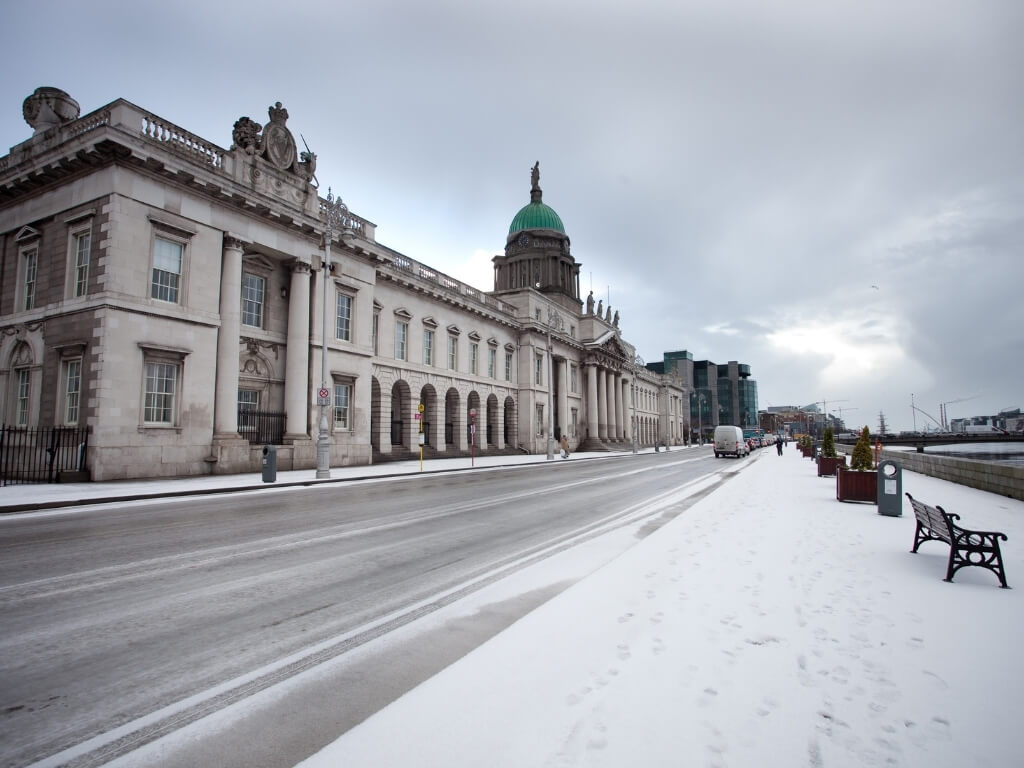
When is the best time to go to Ireland – Public Holidays Guide
When deciding the best time of year to travel to Ireland, you may want to take into account public holidays. This can be for several reasons. Firstly, one of the biggest public holidays is St Patrick’s Day on March 17 th and accommodation and prices of flights can be very expensive. There are also lots of crowds in many of the cities, particularly in Dublin. Secondly, if you are visiting during a public holiday you may find shops, restaurants and tourist attractions closed for the day. Public transport may also operate on a reduced timetable. So, bear this in mind.
Here is a list of the public holidays in both the Republic and Northern Ireland. Where the holiday is shared by both parts of Ireland, no separate note is marked. Where it applies to only the Republic of Ireland, it is marked with Rep, and where it applies only to Northern Ireland it is marked with NI.
- January 1 st – New Year’s Day
- First Monday in February – Imbolc/St Brigid’s Day (unless February 1st is a Friday in which case the bank holiday falls on a Friday) (Rep)
- March 17 th – St Patrick’s Day
- Easter Monday (generally late March or early April)
- First Monday in May
- Last Monday in May (NI)
- First Monday in June (Rep)
- July 12 th – Battle of the Boyne (NI)
- First Monday in August (Rep)
- Last Monday in August (NI)
- Last Monday in October (Rep)
- December 25 th – Christmas Day
- December 26 th – St Stephens Day (Rep)/Boxing Day (NI)
Note: Good Friday is not a bank holiday in Ireland but is in Northern Ireland. However, in the Republic, schools and most businesses close that day.
Best time to travel in Ireland – Seasons Guide
Tourist seasons can play a big role in deciding the best time to travel to Ireland.
Peak or High season in Ireland is from June to September and the week surrounding St Patrick’s Day (March 17 th ). These are by far the busiest months with a huge influx of visitors. Aside from March, the summer welcomes warmer, usually drier weather with long days of more than 15 hours of daylight. This makes these months the ideal ones for cramming in lots of sightseeing into an Ireland itinerary. However, the result is these months are also the most expensive times of the year to visit Ireland.
The week around St Patrick’s Day is also very busy with visitors from across the globe descending on Dublin to enjoy or take part in the St Patrick’s Day Parade. This often coincides with the Six Nations Rugby Championship and Ireland may be playing a home game during the weekend which increases the number of visitors, with supporters of the opposing team arriving in Dublin.
The Shoulder season in Ireland is April to May and October and is often said to be the best time to visit Ireland for a few reasons. The weather is often mild, although be prepared for rain. Crowds are lighter than in the summertime and with a good number of daylight hours, these two things combined make sightseeing a more pleasurable activity. Fewer crowds also mean lower costs for flights and accommodation.
The Low season in Ireland is November to March, not counting St Patrick’s Day. These are the coldest and often wettest months of the year with reduced daylight hours resulting in much shorter days. While this results in fewer crowds, cheaper flights and accommodation, you may find some attractions closed or with reduced opening hours and potentially fewer accommodation choices on offer. That said, if you plan things right, don’t mind the cold and rain, and pack accordingly, this can turn out to be the best and cheapest time to visit Ireland, especially if you are on a budget.
What is the best time to visit Ireland weather-wise?
If the weather is your big deciding factor and good weather is a must, then you are limited to travelling to Ireland during the summer months.
As mentioned already, these are the months with the warmest temperatures and the least amount of rain, although you can still experience rain throughout the summer. The days are long with lots of hours of daylight, making the summer months the best time to visit Ireland weather-wise.
All attractions are open and there are generally lots of activities on offer for tourists visiting from June to August. Visitors can enjoy the outdoors and there are lots of festivals and events during these months. Just be aware that primary schools in Ireland finish up at the end of June, while those in secondary school who are not sitting exams finish for the summer at the start of June. Most schools return during the last week of August.
Summer is the best time to visit if you want to avoid the cold and the worst of the rain, you want to use as many daylight hours as you can for sightseeing and budget isn’t a factor for your trip to Ireland.
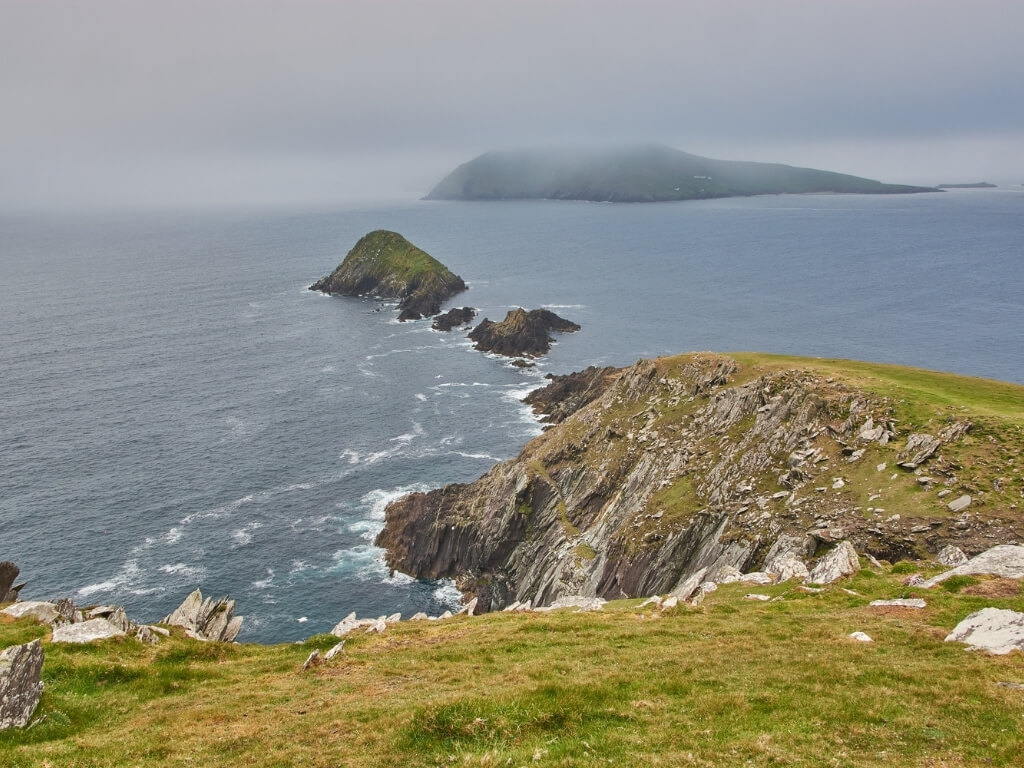
If sightseeing is your main reason for visiting Ireland, then typically the shoulder season and September are the best months to go. Crowds have thinned out, schools are either awaiting the summer holidays or have returned after them, and prices, as a result, are lower in terms of flights and accommodation.
The weather is warm and, while rain can arrive, if you go prepared you can still sightsee. Daylight hours are typically more than 12 hours giving plenty of time to squeeze in your sightseeing, but without the manic crowds of summer.
If you are interested in enjoying a festival while you are in Ireland, here is my post about the best festivals on the Emerald Isle which might help you plan exactly when to visit Ireland. Note that these will be busier times for the city or area where the festival is taking place, regardless of the time of year.
I hope this guide has helped you decide when is the best time for you to visit Ireland.
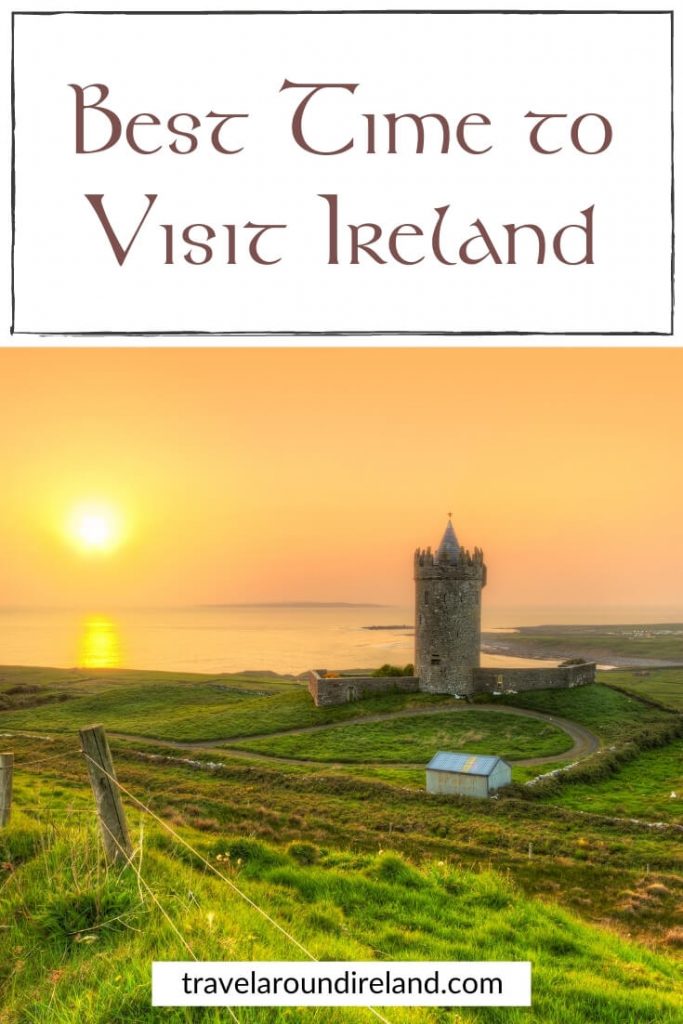
Related Posts

by Cath Jordan
Leave a comment cancel reply.
Save my name, email, and website in this browser for the next time I comment.
Privacy Overview
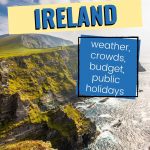

When is the best time to visit Ireland? Here’s your season-by-season guide
If you’re wondering, “When is the best time to visit Ireland?” we’re happy to report that it’s any time! From Celtic festivals in February to the Guinness Jazz Festival in October, the spirit of Ireland shines year-round. If you’re thinking of taking a tour of Ireland , read on for our season-by-season guide—and get ready to experience the best of the Emerald Isle no matter when you visit.
The best weather in Ireland by month
The green fields, blue skies, and baby lambs of spring and summer always make the Emerald Isle a treat. But, Ireland in winter is also as atmospheric as it gets. If the idea of a chilly trip gives you pause, all we can say is don’t knock the weather in Ireland in December or the weather in Ireland in February. Winter is the best time of year to visit Ireland if you’re looking for fewer crowds and warmer pubs. No matter which time of year you visit, the Irish weather is all part of the experience.

Explore our Ireland tours

4.6 out of 5 stars

4.7 out of 5 stars

4.9 out of 5 stars

4.8 out of 5 stars
More travel inspiration


Best Time to Visit Ireland
By: Author LetsGoIreland
Posted on Last updated: February 1, 2023
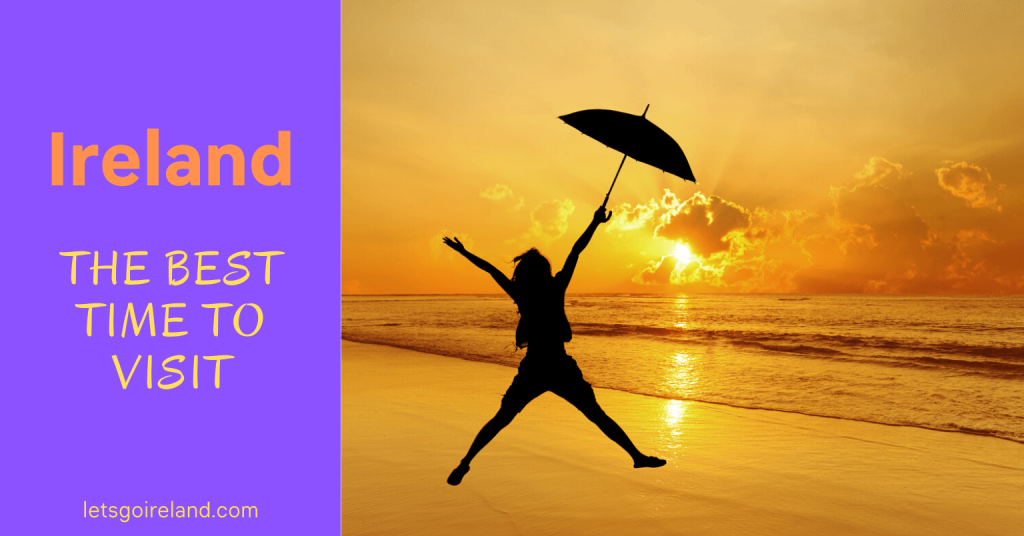
Table of Contents
- 1 When is the best time to visit Ireland: Intro
- 2 What’s the weather like in Ireland?
- 3 Ireland Seasons
- 4 Ireland Tourist Seasons
- 5 When is the best time to visit Ireland?
- 6 What to expect in Ireland weatherwise
- 7 Best time to visit Ireland according to activity
- 8 Ireland weather by month: Overview
- 9 Ireland in January
- 10 Ireland in February
- 11 Ireland in March
- 12 Ireland in April
- 13 Ireland in May
- 14 Ireland in June
- 15 Ireland in July
- 16 Ireland in August
- 17 Ireland in September
- 18 Ireland in October
- 19 Ireland in November
- 20 Ireland in December
When is the best time to visit Ireland: Intro
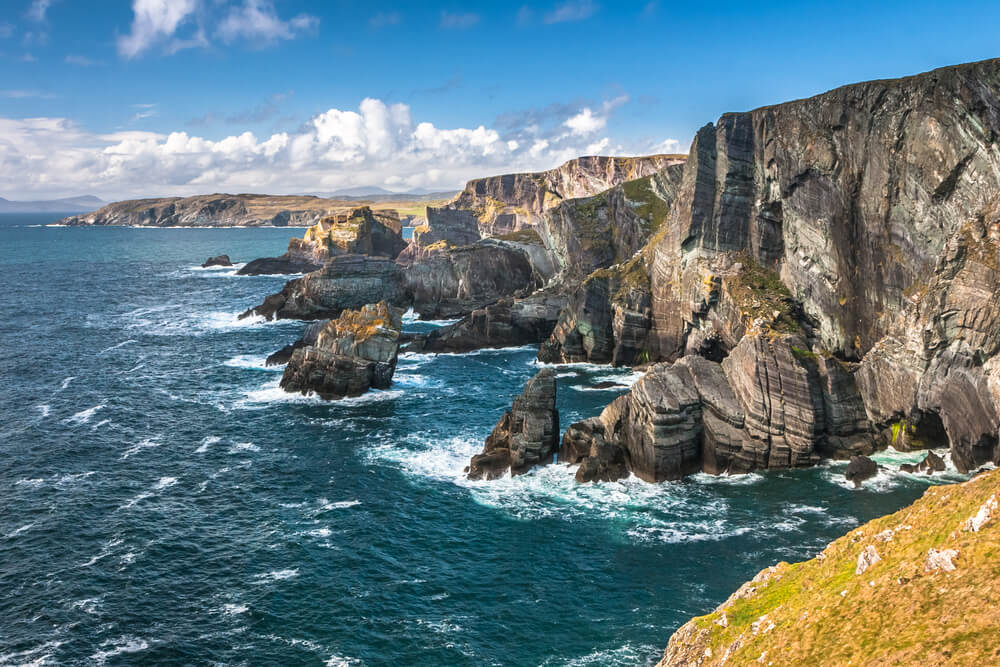
May is probably overall the best month to travel to Ireland with good possibilities of settled weather, plenty of daylight and limited numbers of tourists.
April, May, September and October are the best times to visit Ireland for weather, sightseeing and to avoid the peak tourist season.
June, July and August are the best times to visit Ireland for road trips, camping and hiking or for other activities that require decent weather and lots of daylight.
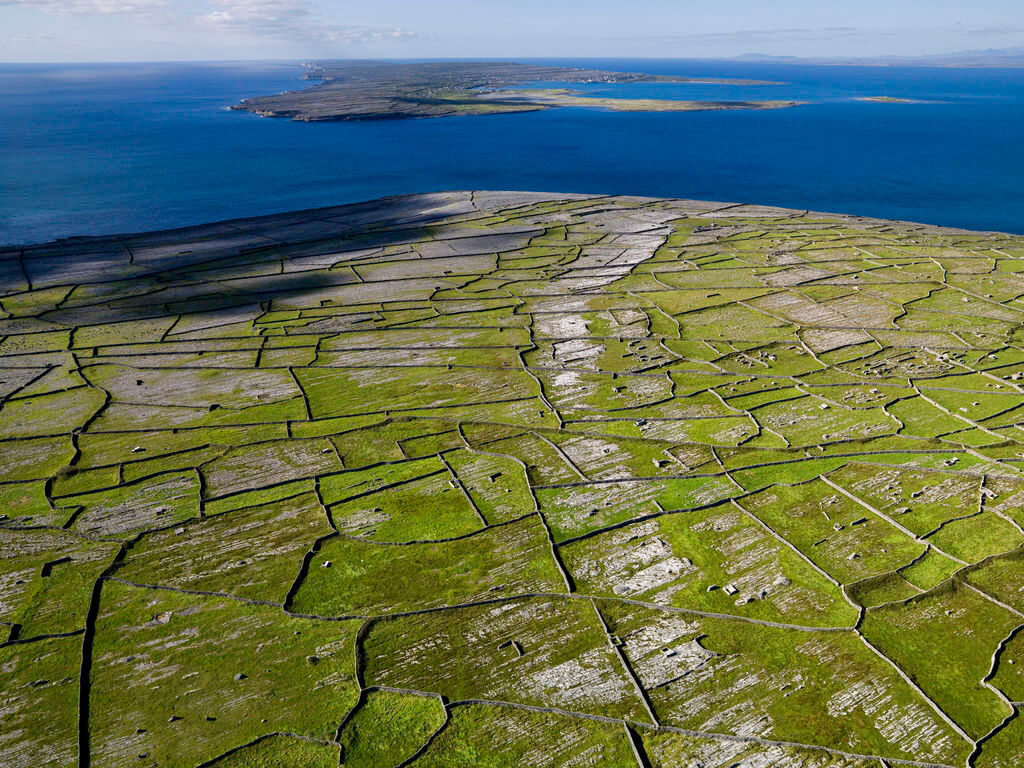
January and February are the best times to visit Ireland on a budget and if you want to increase the likelihood of (maybe) seeing snow. No guarantees on this one!
June, July, August are the best times to visit Ireland for music festivals. April, May, September and October is a good time to visit for food festivals (although some also take place during the summer months as well) and March 17th (St. Patrick’s Day Festival) is the best time to experience all things green.
December has a festive atmosphere with plenty of events, Christmas markets and decorations to brighten up the days leading up to Christmas and New Year celebrations.
When to travel to Ireland : A quick overview
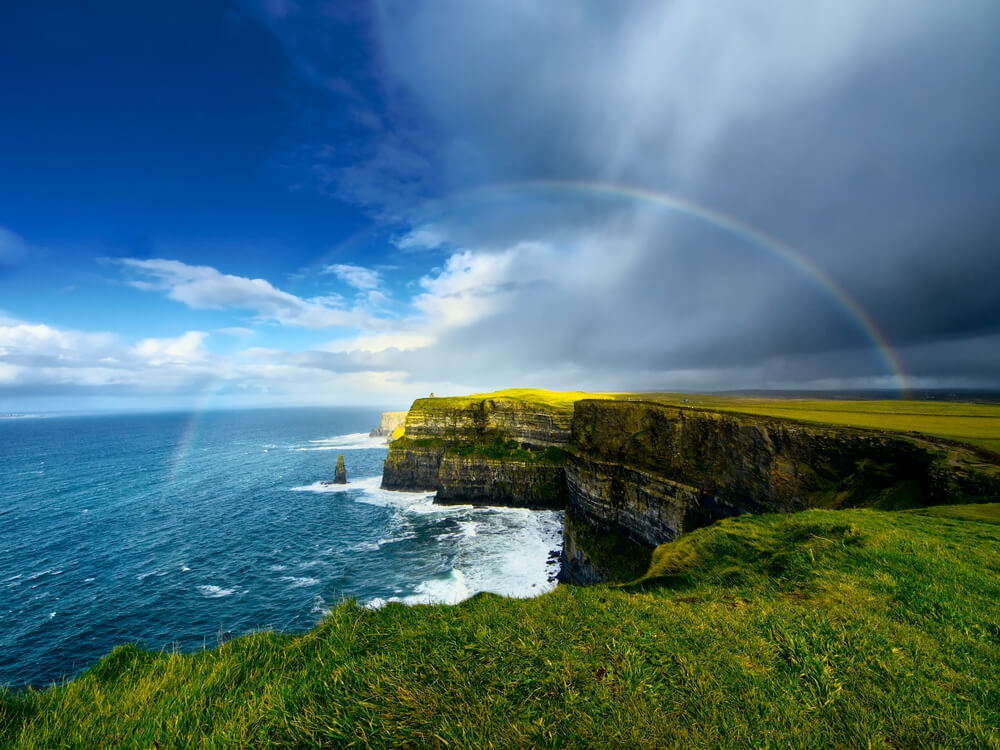
The best time to go to Ireland largely depends on what you want to see and do on your trip. The impact of the weather on your city break with lots of indoor attractions will be different to a trip where you plan to be outdoors for most of your stay.
Perhaps you have the flexibility to select a time of the year to travel to Ireland that is most suitable for your itinerary. Or there may be certain events that you want to attend such as a music festival or arts festival, which restrict your travel dates.
Your travel budget is of course another factor to keep in mind. Visiting Ireland during popular holiday periods can increase the overall cost of your vacation due to higher air travel fares and accommodation prices.
Keep an eye out for higher prices around the run up to Christmas or New Year or over a bank holiday (a public holiday that falls on a Monday for an extended weekend), and during peak tourist season (June to August).
This guide will give you useful insights into the weather in Ireland, as well as great travel tips as to what is on when and even some travel ideas.
What’s the weather like in Ireland?
The climate of the island of Ireland is heavily influenced by the Atlantic Ocean. This has a moderating effect and means that Ireland and Northern Ireland (generally) escape the extreme high and low temperatures frequently felt on the continent of Europe and at the same latitudes in the United States, for example.
Generally speaking, Irish summers are mild. The average temperature in Ireland during the summer months is approximately 18-20°C (64-68 °F) (This is the mean max temperature summer).
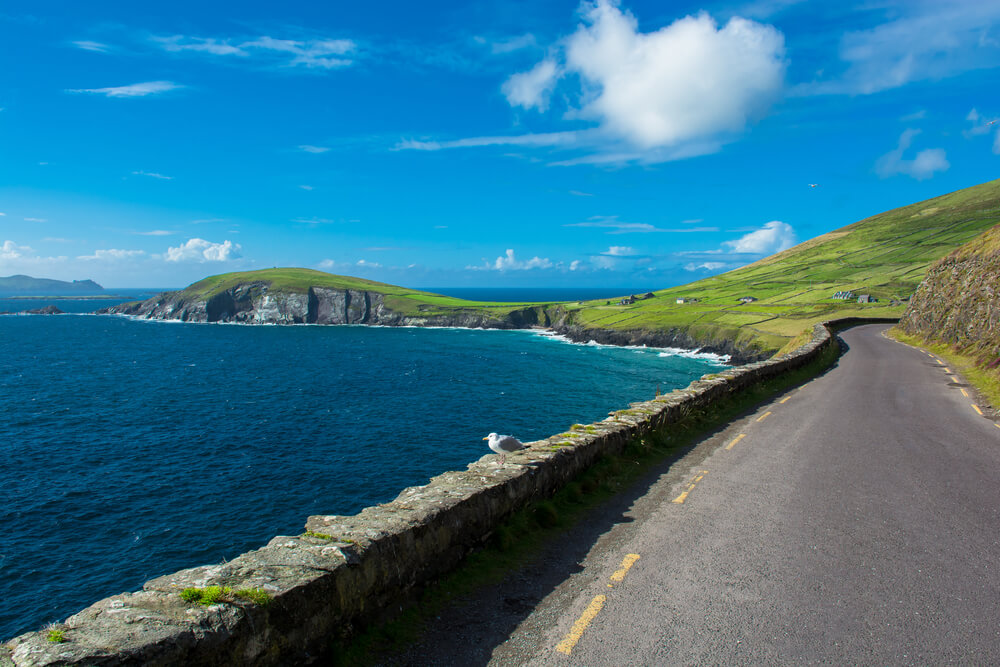
Winters tend to be cool and windy. Areas near the coast experience milder winters, sometimes temperatures are even a few degrees warmer than those further inland due to the knock-on effects of the warm Gulf Stream current in the Atlantic Ocean. This ensures that the waters around Ireland’s most northerly point, Malin Head, remain ice-free in winter.
There is a very good chance of rain all year round in Ireland, so I would never recommend traveling to Ireland without a good rain jacket. Spring and summer tend to be on average drier than other months, but this differs from year to year. The months from April through to July have on average about 80 mm (about 3 inches) of precipitation per month.
Precipitation varies quite a lot across the island. The west of the island receives more precipitation than the east, with the average rainfall over all of Ireland being roughly 1230 mm (48 inches) per year.
Snowfall in Ireland is not particularly common, especially on lower lying land. Usually, snowfall only lasts for a short while on the ground and is most likely to occur during the months of January and February. A white Christmas in Ireland in December is definitely not typical, but also not unheard of!
If there is heavy snowfall, you can expect that there will be major disruptions to traffic. Yes, we have experienced Dublin Airport being closed due to snowfall in the past. An American passenger behind me in the ticket queue could not believe that the airport would close due to a few centimeters of snow.
As a country, we are much better equipped to deal with rain than snow!
Ireland Seasons
While the seasons of the year in Ireland are distinct, each with their own share of flare, they are not as pronounced as in other regions of the world. Even the coldest months of winter (temperatures of about 2-7 °C or 35-44 °F) can be considered mild due to the Irish temperate maritime climate.
Most years, there is no abrupt change in the weather or average temperature between the seasons in Ireland. Occasionally reversals do occur with a surprise few days of summer weather appearing out of the blue in early fall.
The meteorological seasons are defined based on the annual temperature cycle (unlike the astronomical seasons which are based on the earth’s position in relation to the sun). According to the average Irish air temperatures, there are four clear seasons, each consisting of three months of the calendar.
Like many other countries at similar latitudes, Ireland classifies spring starts in March through to May, summer as being from June through to August, fall or autumn as being from September to November and winter as being from December through to February.
When is spring in Ireland?
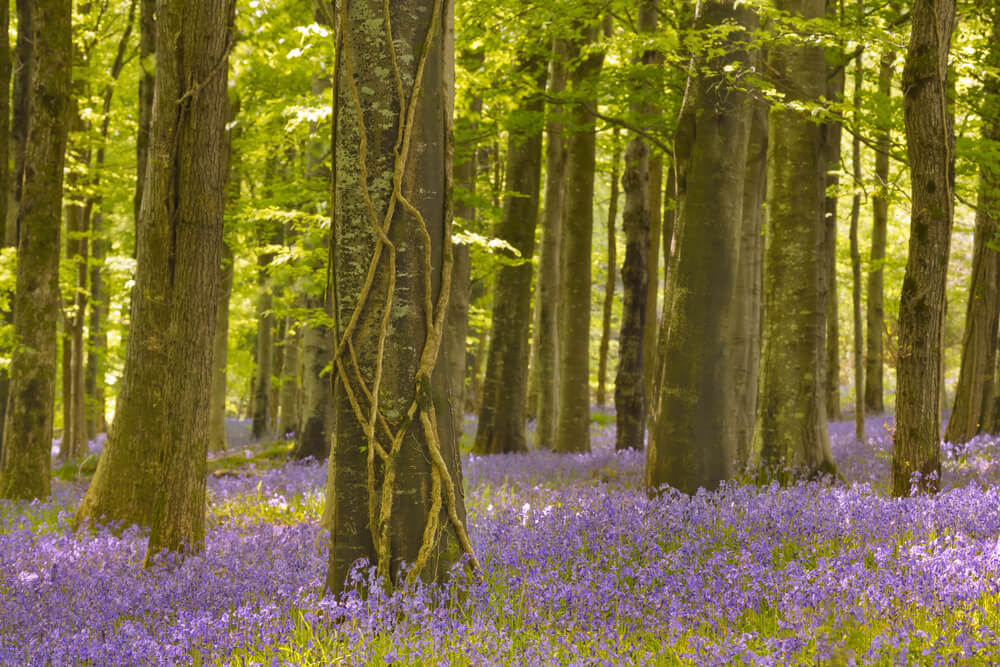
Officially, spring starts in March in Ireland and continues through April until the end of May. However, depending on how the seasons fall in any given year, there may be a feeling of spring already in the air in February. The average temperature by now has already started to increase and is about 8-12 °C (46-53 °F). Although the weather is not quite good enough to wear your summer clothes yet, you don’t need to bring your thick winter woolies with you when you travel on your holiday tour either.
May and June are the sunniests months. The east of the island, from Carrickfergus in Northern Ireland, through Dublin and particularly the south-east tend to receive the most sunshine. There is often less rain during this season (about 80 mm or 3 inches per month), with a tendency for showers rather than the stereotypical Irish rainy days.
The stretch in the evenings is noticeable during this time and will continue until the summer solstice, which takes place in June.
When is summer in Ireland?
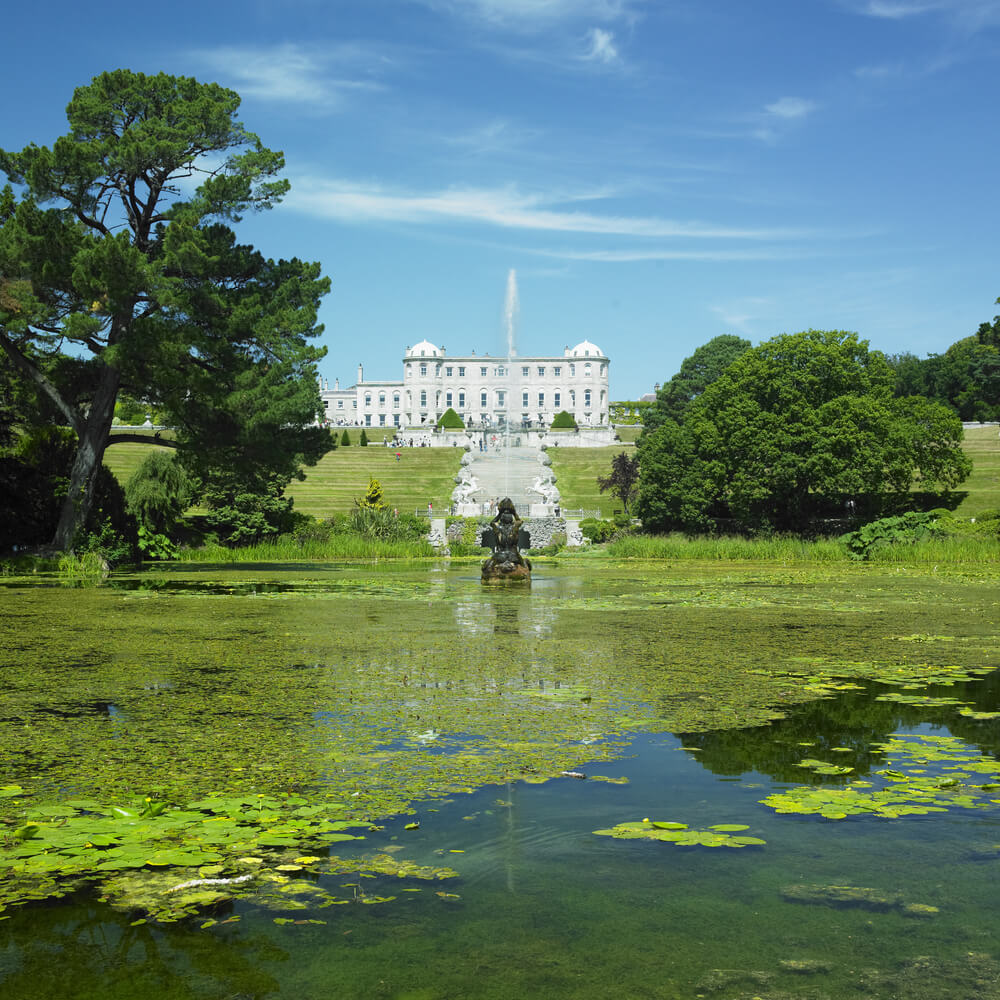
June, July and August herald the summer months in Ireland and are a great time to explore Ireland and see the sights at their best.
Typically, these months have decent weather with a marked increase in the average temperatures since spring. In this mild climate, you can expect temperatures of about 16-20 °C (60-68°F), up to 18 hours of daylight around the summer solstice and, generally speaking, a limited number of rainy days. Depending on what you are planning to do on your trip, this might be the optimum time to plan your vacation to Ireland.
Long days, with dusky bright skies extending well into the late evening (until after 10.00 p.m. in June) characterize this lovely season of the year. By the end of August (and definitely in September) the evenings start to noticeably shorten as they draw towards autumn and winter.
While tourists holiday in Ireland all year round, the summer months are peak tourist season. July being usually the most popular month with tourists, especially with tourists from the United States.
Trip Ideas: Why not make the most of the daylight and travel to the popular Irish tourist sights and attractions (check out our must see attractions or secret sights in Dublin here) either very early in the morning or late in the evening to avoid the crowds?
Regardless of whether you want to visit the Guinness Storehouse in Dublin, get a crowd-free photo at the Giant’s Causeway in Northern Ireland or want to have (almost) empty beaches on the Dingle Peninsula on the Wild Atlantic Way , try to maximize the early mornings and late evenings. It will be worth it!
When is fall in Ireland?
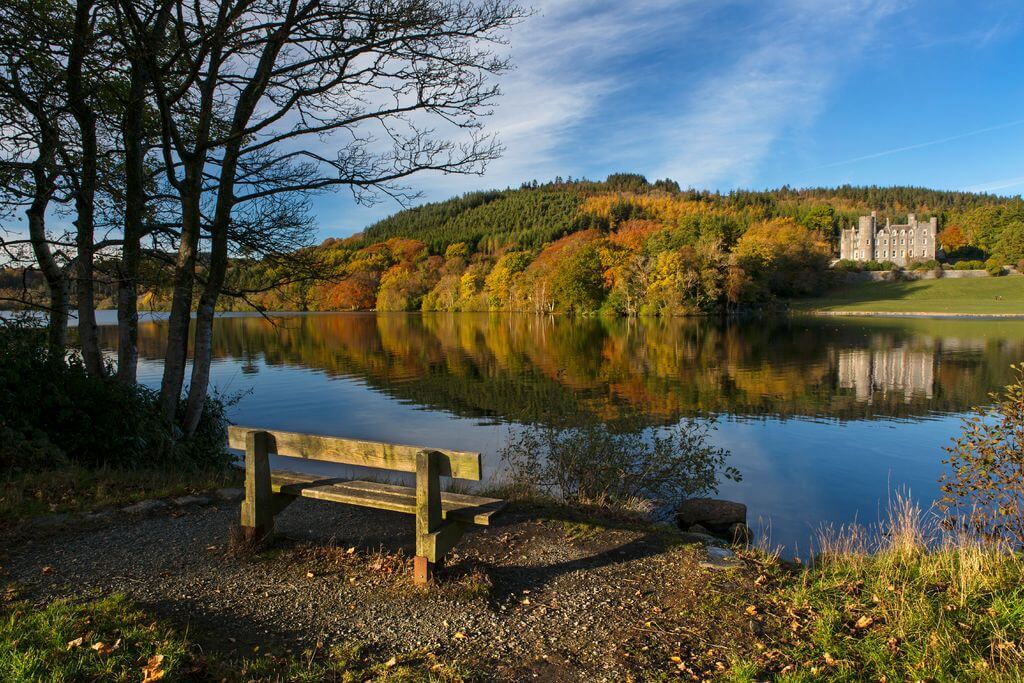
Fall, or autumn as the season is better known in Ireland, can be a time of good, but also very mixed weather. The average temperatures cool to about 14-18 °C (57-64 °F) from the summer highs and even as early as late August or definitely early September the evenings start to feel chilly. Particularly in the seasons of fall, winter and spring it is advisable to dress in layers so that you can easily add or remove them as required.
Rainfall is also higher at this time of year with westerly winds bringing moderate to heavy showers in October and November.
Crisp, cold September days with layers of fog blanketing the mountains are truly stunning. Images like these often feature in the most beautiful landscape calendars of Ireland.
If you plan on doing a road trip during this time, the rustic autumn colors of the foliage and scenery of the national parks and nature reserves will no doubt leave a lasting impression.
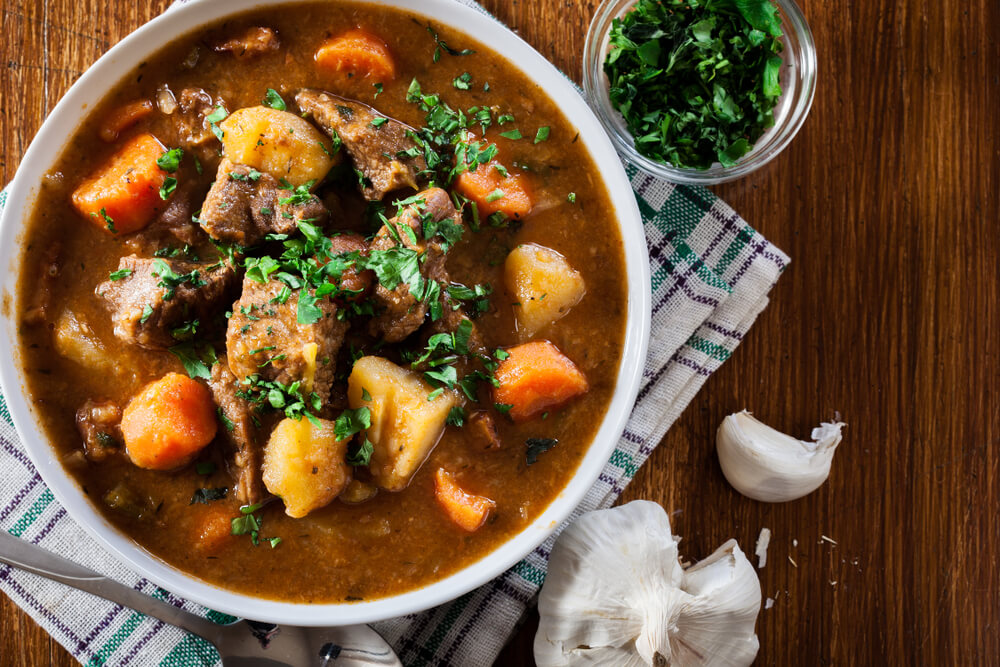
The charming towns and villages along Wild Atlantic Way and the Causeway Coastal Route in Northern Ireland with great options for food, drink and lively traditional Irish music will keep you entertained in the evenings!
When is winter in Ireland?
December, January and February are the winter months in Ireland. The days are short with only 7.5 hours of daylight on December 21st and the weather often tends to be windy, wet and cold with average temperatures ranging between about 4-6 °C (39-42 °F).
Heavy snow is a very rare occurrence in Ireland, due to the temperate Irish climate with the odd year having a bit more than a “decent sprinkling” of snow. The further north you travel on the island, the greater the chances of snow, wintry showers and icy conditions. County Donegal and some of Northern Ireland experience harsher winters than the rest of the island.
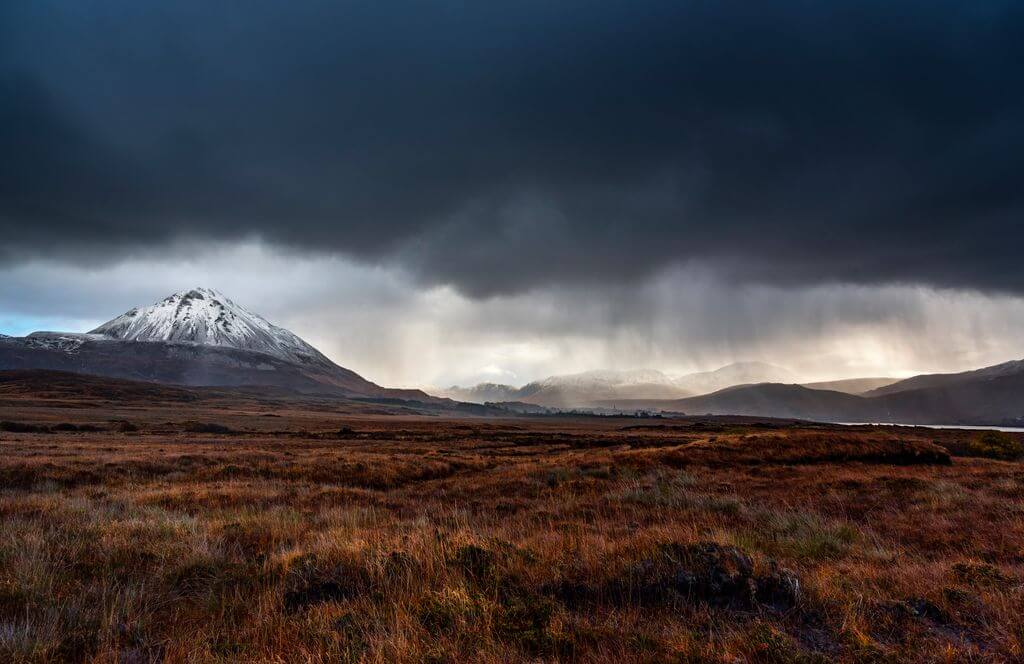
While summer is a better time for outdoor activities, there is plenty to keep you occupied in winter in Ireland as well. It is a great time to explore Ireland for a culinary experience to sample lots of tasty food during the Christmas holiday season.
If you are looking for some trip ideas or inspiration for your Ireland travel experience during the winter months, then check out our list of top sights for a Dublin city break around New Year or visit Tourism Ireland for some more information on other regions.
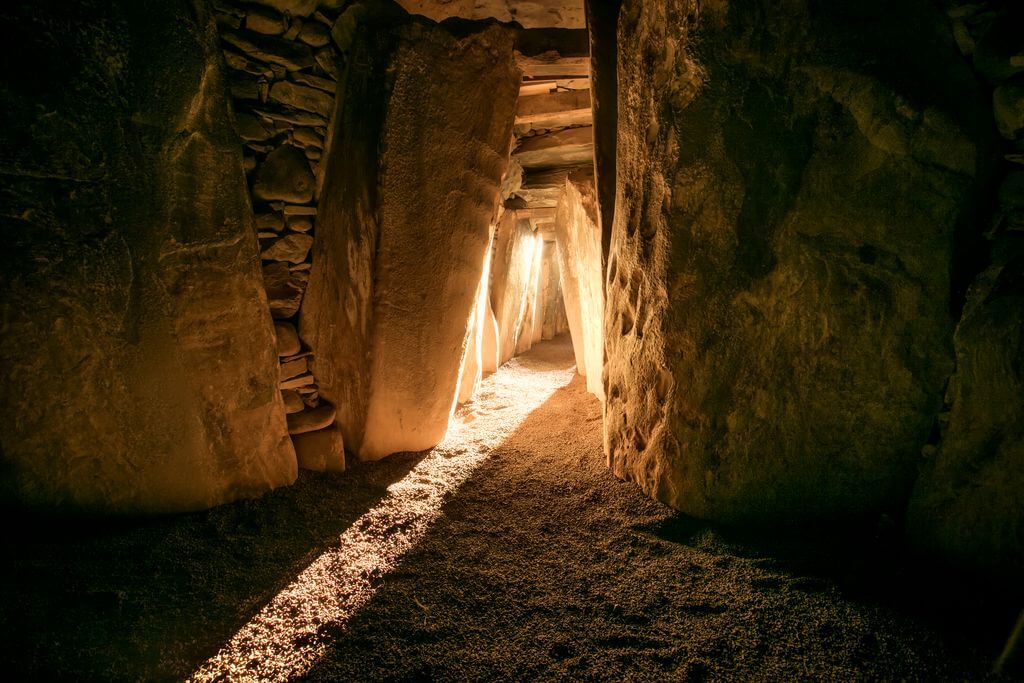
Ireland’s Ancient East is home to Newgrange in County Meath and it is one of the most special places in Ireland in Ireland in December. The lucky lottery winners picked from thousands of applicants are permitted to enter the burial chamber to witness the sunlight entering the burial passageway around the time of the winter solstice. Of course the sunlight is weather dependent, so this phenomenon is not visible every year.
Ireland Tourist Seasons
What is the peak tourist season in ireland .
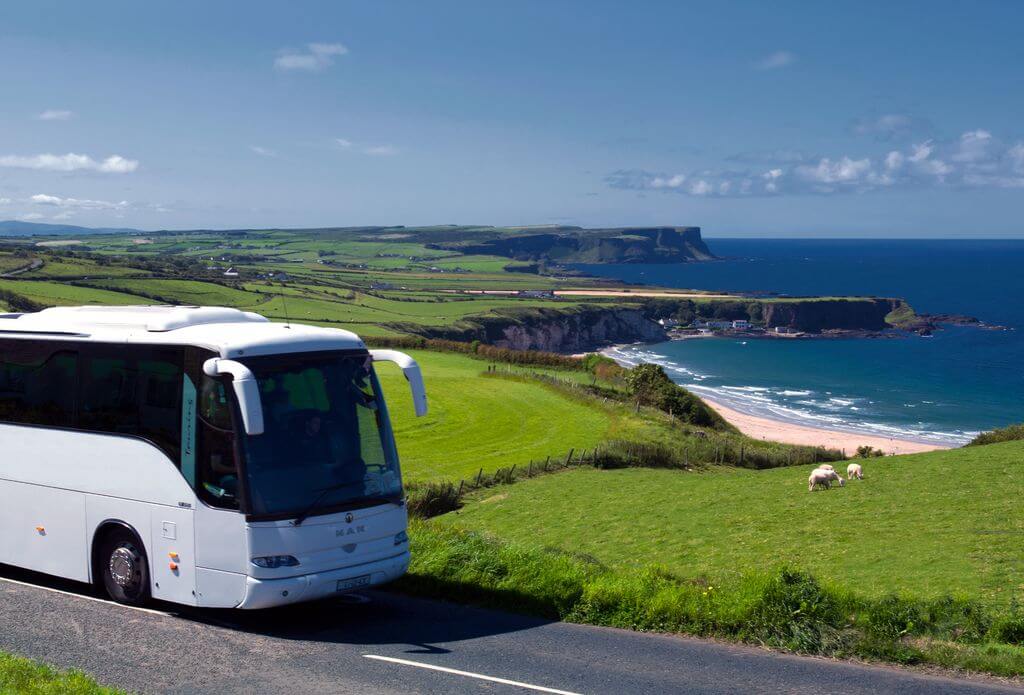
The high season in Ireland is during the summer months from about mid-June, July and August, as well as for shorter periods of time around Christmas, New Year and a few days around St. Patrick’s Day (March 17th) are considered to be the peak season in Ireland.
The popularity of the summer months for Ireland travel holidays stems from the weather being (generally) better. Visitors can hope to encounter less rain than other times of the year, and experience longer daylight hours. Thus making it a better time of the year for road trips and outdoor activities, such as hiking in national parks. Many live music sessions, food festivals and other Irish street festival events are spread throughout the country during the summer months.
In recent times, Ireland has been used as a filming location for Star Wars (get your Star Wars trip ideas here!), Harry Potter (check our guide to all things Harry Potter in Ireland ) and Northern Ireland was used extensively during the filming of Game of Thrones. Film tourism is booming and has opened up the beauty of the island of Ireland with many new tourists exploring this country.
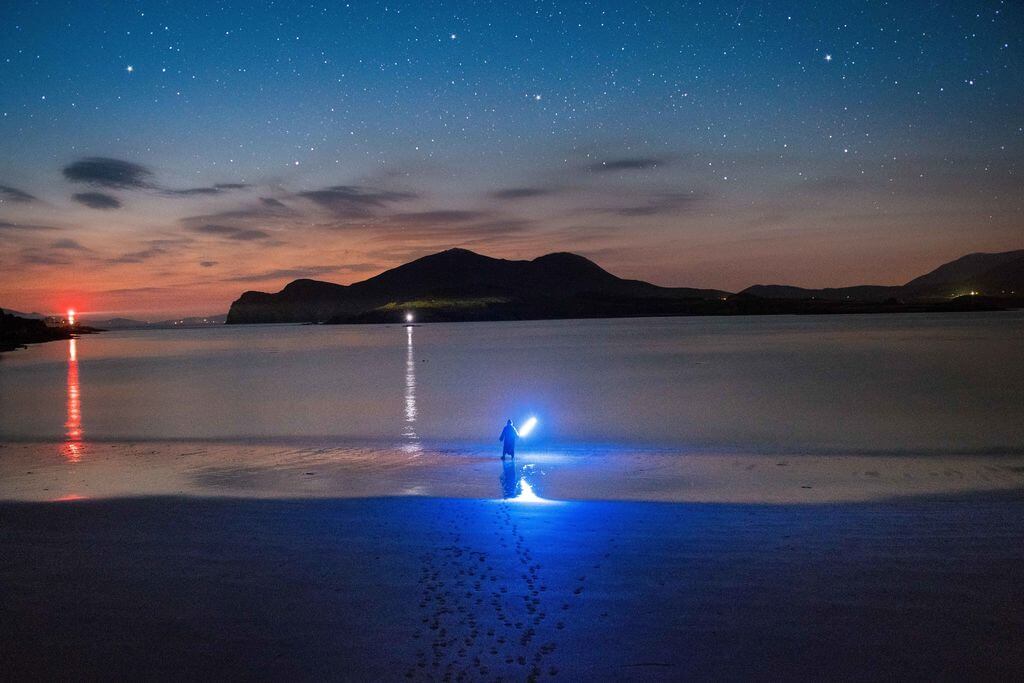
Christmas and New Year are peak travel times in most countries and Ireland is no exception! If you plan on traveling during this time, be sure to book well in advance!
Don’t get caught out with the peak season days around St. Patrick’s Day in the Emerald Isle. There is a big influx of tourists from all over the world, with large numbers coming from the United States to see the parade in Dublin.
Visiting Ireland during the peak season may result in limited options on travel deals. Prices on hotels, travel, car rentals and air travel are likely to be considerably higher than average during the low season in winter or shoulder season when there are fewer crowds.
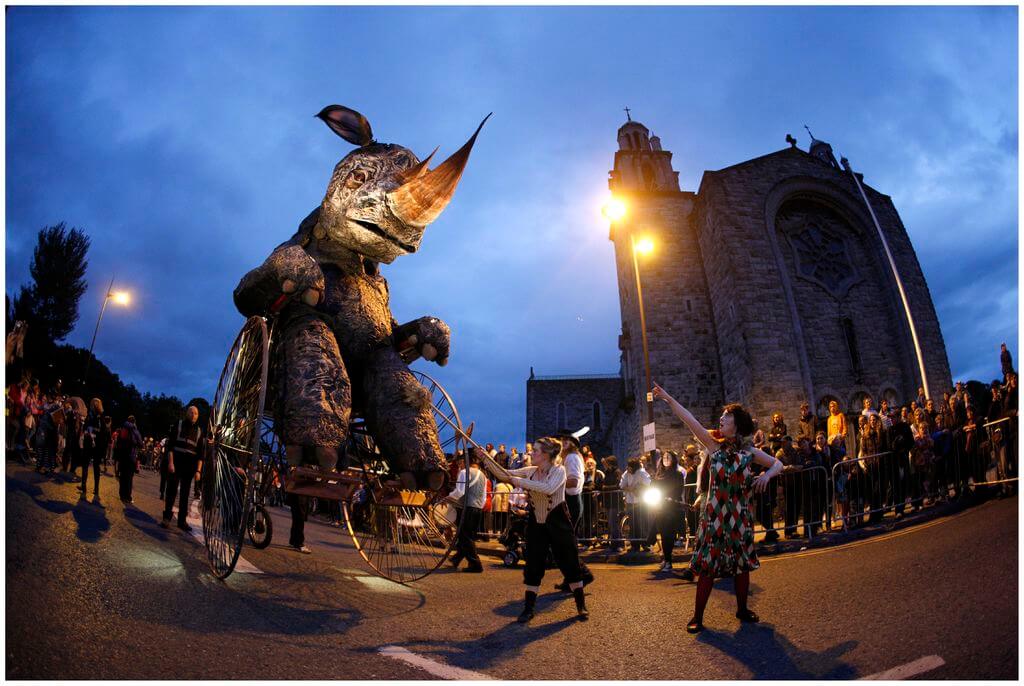
Travel tips: Unless you are not flexible with your travel dates, why not check out the shoulder season instead? It is likely to save you money, you will encounter less crowds and there are still plenty of attractions, arts festival and music festival events taking place around the country.
Shoulder Season Ireland
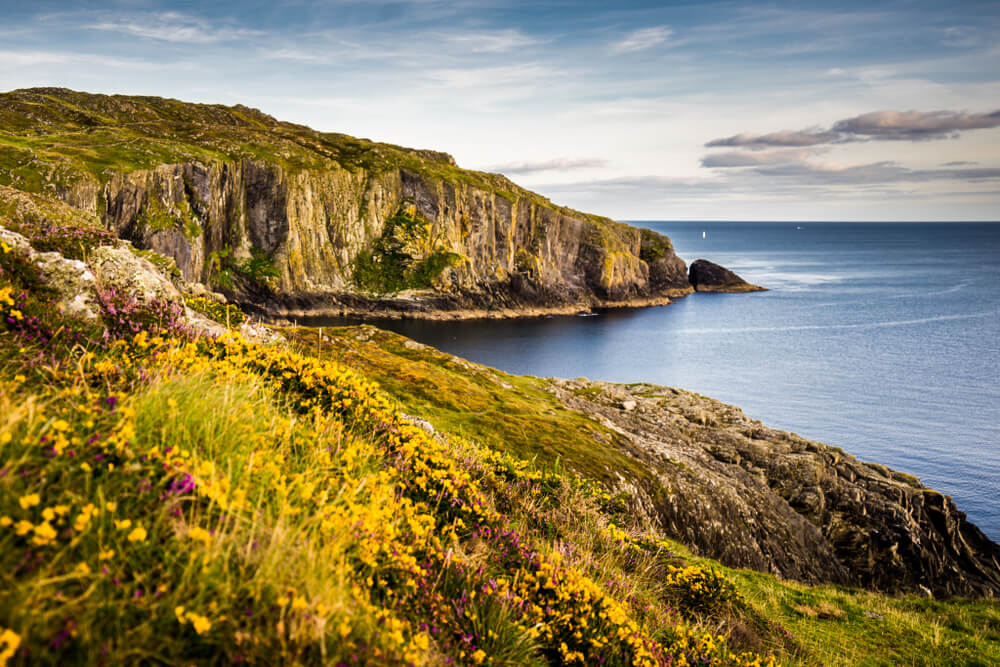
Travel guides about Ireland state that the shoulder season or mid-season for tourism is April and May in late spring and September and October in early fall. Generally, these months are the best to travel to Ireland and Scotland too, if anyone wants to link both in one trip!
During these months, Ireland (along with several other countries in Europe) enjoy benefits similar to those found during the main peak season with regards to weather. The main differences being that there are fewer tourists and the costs associated with travel, including flights to Ireland, are not as high as the summer.
A bank holiday Monday takes place both in the month of May and in October. Generally, you will see an increase in the cost of travel and accommodation around such a public holiday.
Ireland Off Season
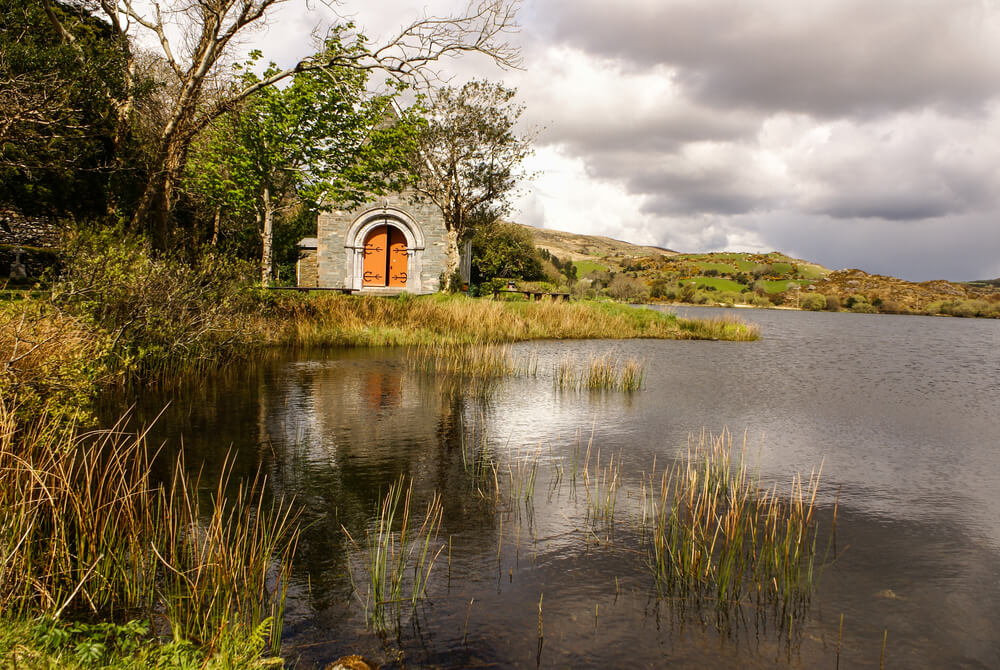
Roughly mid-October to the end of March is considered to be off season or low season in Ireland. (The time around Christmas, New Year and St. Patrick’s Day (March 17th) are not considered low season though.)
Temperatures are considered to be quite mild with the average falling between 2-11 °C (ca. 35-51 °F) and while you may encounter a bit of rain, snow is likely to be limited.
Travel tips for this time of year are to bring layers of clothing and decent waterproofs. Personally, I prefer wearing a hood or a hat than using an umbrella as it can be a little windy sometimes in Ireland!
What are the advantages of visiting Ireland off season?
- Accommodation and airfares usually cost less and good bargains can be found in certain hotels
- There are fewer tourists and you will have to queue less at the top sights
- Traffic in the popular tourist areas (such as the Ring of Kerry) will be considerably lighter
- You can enjoy the many beautiful Irish landscapes and beaches in relative solitude
However, in comparison to summer with longer daylight hours and (at least) the possibly better weather, there are a few downsides to traveling during this time of the year.
Apart from the increased likelihood of inclement weather during your stay, the main drawback for me is the shorter days, which is sometimes reflected in the opening hours of attractions. Other attractions or guesthouse accommodation may be closed completely during the quieter season.
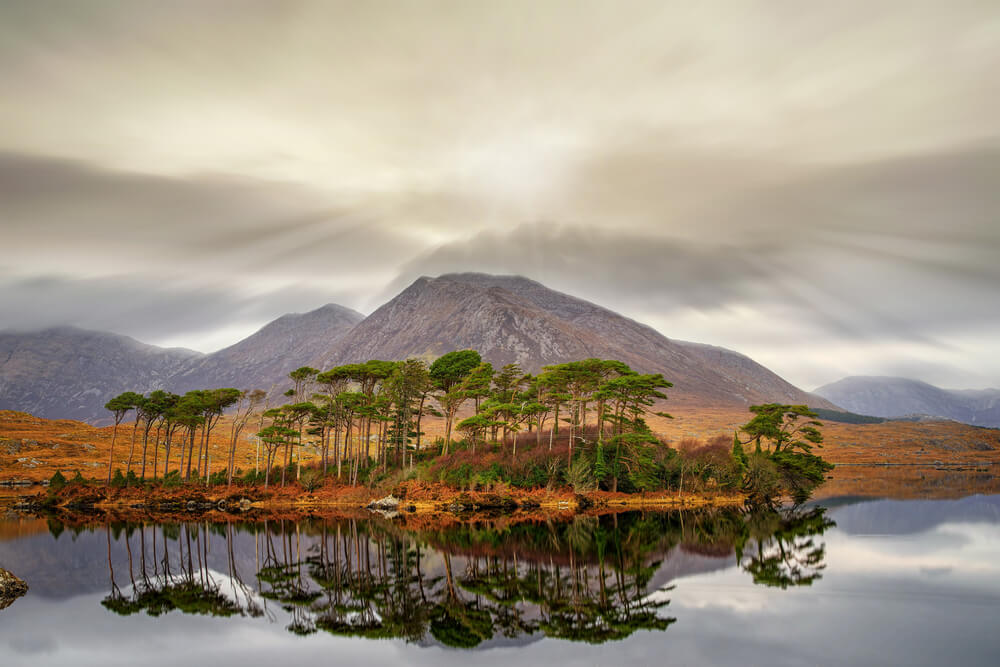
Outdoor activities are still possible during the off-season period, but you must plan accordingly with the amount of daylight available and have the appropriate level of experience. Some of my best hikes in Ireland have been during the winter months.
There are still plenty of other attractions, events and festivals to keep you more than occupied on your trip to the Emerald Isle during these winter months.
When is the best time to visit Ireland?
The best time of year to visit Ireland and Northern Ireland is during the months of April, May and September. During these months the weather can be pleasant and settled with average temperatures of about 8-10 °C (46-50 °F), occasionally 15 °C (59 °F) in April and May, and about 14-18 °C (57-64 °F) in September.
In contrast to the darker winter months, the greater number of daylight hours during the months of April, May and September allow you to pack more activities and sightseeing into each day. Although it might not be the cheapest time to travel to Ireland, you will benefit from avoiding the higher prices and limited availability of hotels associated with the peak summer season in June, July and August and also around Christmas and New Year.
There are many events during these months to make your trip extra special. Why not visit an arts festival ( Listowel Writers Week festival in May) or a food festival, such as the Waterford Harvest Festival in September?
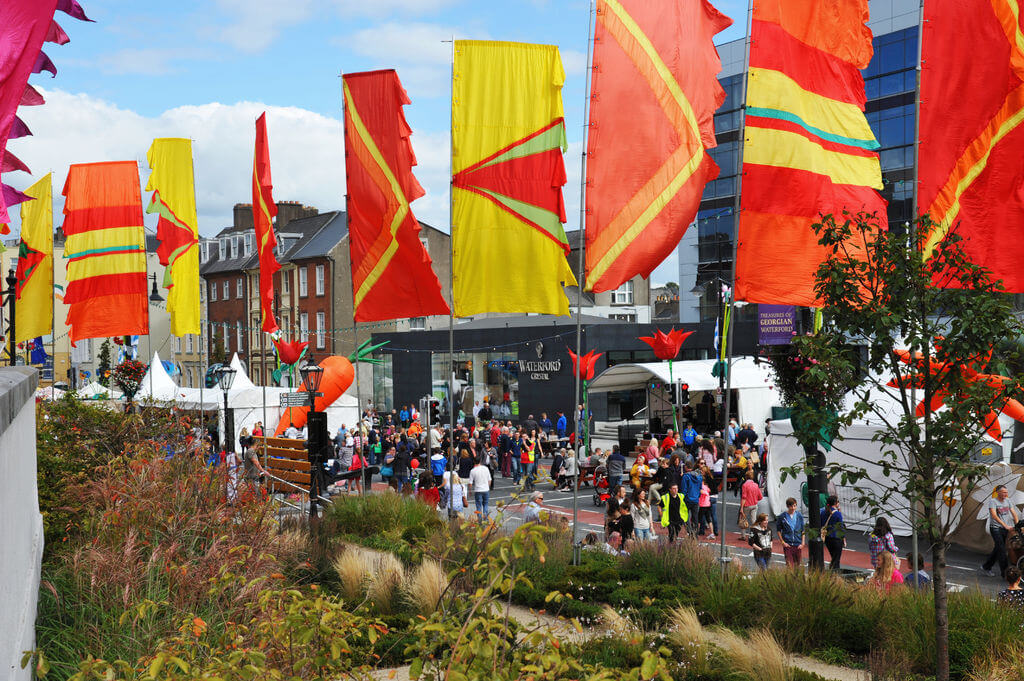
While the main music festival season is during the summer months, a number of music festivals are held during April, May and September including Fleadh Nua in Ennis, which takes place towards the end of May. Live music can be found in pubs throughout the year.
Realistically, you are probably visiting Ireland for some reason other than the weather. There is no guarantee as to when exactly the best weather in Ireland is, because it rains throughout the year. If you are lucky, you can experience glorious sunny days in November as part of your Ireland tour. However, you might experience a wash-out during even in the supposed “driest” months of April and sometimes June.
Our best travel tips for an Ireland tour are to prepare for all eventualities regarding Irish weather, bring the right clothes and equipment to make sure that the weather doesn’t stop you from making the most of your trip. When all else fails, enjoy the multitude of great indoor sights and attractions that the Emerald Isle has to offer!
Bonus tips : Keep an eye out for public holidays, such as Easter that often falls in April, or the bank holiday in May, which falls on the first Monday of the month. Dublin, in particular, can be very busy during these times and you can expect higher prices for accommodation.
Alternatively, June can also be a lovely time to visit Ireland. Then you will also be able to take part in the Bloomsday Festival (June 16th) to celebrate the famous novel Ulysses by James Joyce.
What to expect in Ireland weatherwise
When is the best time to visit ireland weatherwise.
It can be difficult to determine what is the best month for weather in Ireland, but April, May and September stand out as some of the best months to travel to Ireland. Regardless of the time of year, you can never be completely certain of the weather on the island of Ireland and rain is likely throughout the year.
However, these three months in late spring and early fall can have settled weather, pleasant temperatures (approx. April: 8 °C (46 °F), May: 11 °C (52 °F) and September: 13 °C (55 °F)) and a good number of daylight hours (at least greater than 13 hours) to help enable you to maximize your itinerary.
As these months are not during the summer, you might still find some travel deals on flights, hotels and attractions. There are many events, festivals and local farmers markets that take place during this time that are well worth visiting.
Ireland Climate Change: 2019 Year Summary
The latest Irish climate data published by Met Éireann show that over the last 9 consecutive years (2011-2019) Ireland experienced higher temperatures than the usual long-term average records. This temperature increase trend follows the pattern of global warming seen in other areas of the world, which can have disastrous consequences for biodiversity and the planet.
While Ireland escaped much of the summer heat waves that affected Europe, temperatures were generally higher than normal. (The highest recorded temperature in 2019 was 28.4°C (83.14 °F) in Shannon on June 27th).
In 2019, all of the average sunshine totals and the majority of average rainfall totals measured throughout the country were also greater than the long-term average records.
Does it rain a lot in Ireland?
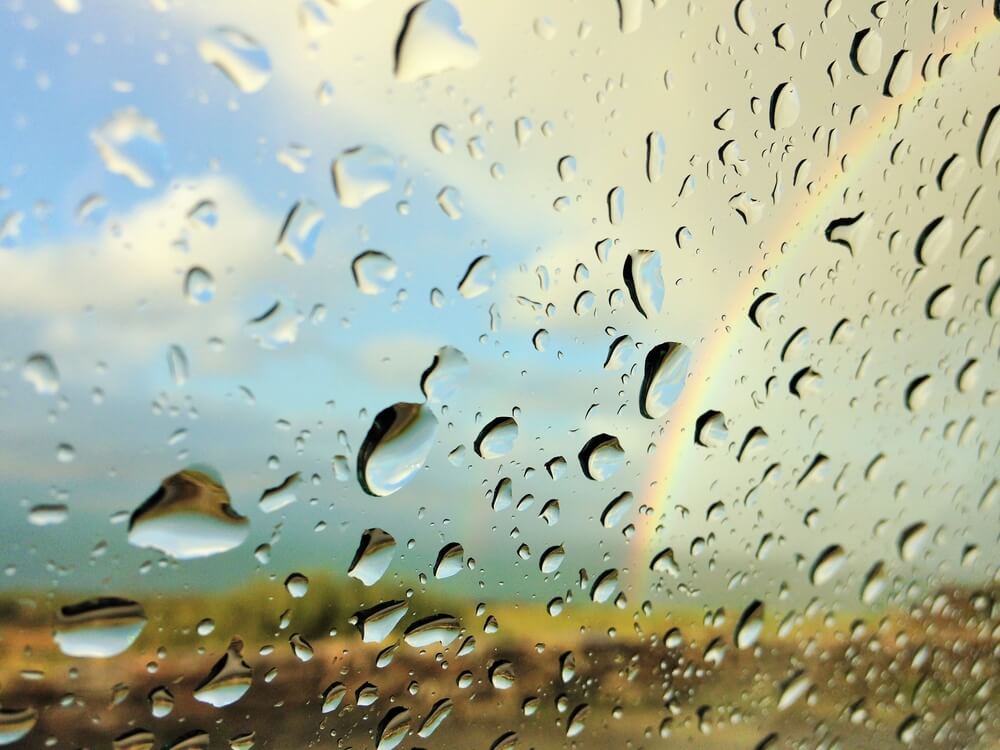
Yes, Ireland does receive a lot of rainfall year round, but the amount and frequency varies across the country. The west coast of the island receives more rainfall and a higher number of wet days (days where greater than 1 mm (0.04 inch) of precipitation is recorded) per year than the east coast and inland areas.
Dublin on the east coast is one of the driest places in the country and received about 890 mm (35 inches) of rainfall spread over roughly 134 wet days in 2019. In contrast, Newport, County Mayo in the west of the country receives about 1800 mm (71 inches) of rain per annum and experiences at least 1 mm of rainfall on 223 days over the course in 2019. Belfast in Northern Ireland generally receives approximately 900 mm (35 inches) of rain and 210 wet days per year.
When asked about Ireland, many people mention rain, which is not surprising given Ireland’s geographical location in Europe and its maritime climate. Ireland’s climate is strongly influenced by the warm temperature of the Gulf Stream ocean current that extends northwards along the eastern coast of the United States and Canada before crossing the Atlantic and reaching Ireland.
Don’t be fooled though, the term “warm” is relative. The average sea temperature off the coast of Ireland is about 6 °C (43 °F) in Feb, 18°C (64 °F) in July and roughly 9 °C (48 °F) in December.
Irish weather changes frequently that sometimes it is possible to experience all the seasons in one day. Winter, spring, summer or fall, you should expect to encounter rain at some stage during your vacation in Ireland. Rain is part of the Ireland travel experience!
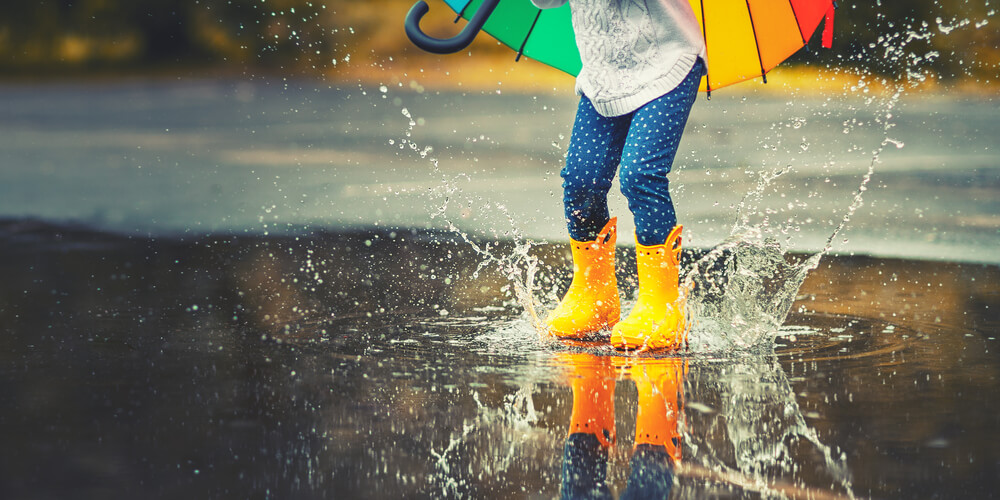
The majority of the precipitation falls as rain rather than as snow or hail, due to the generally mild average temperatures.
Does it snow in Ireland?
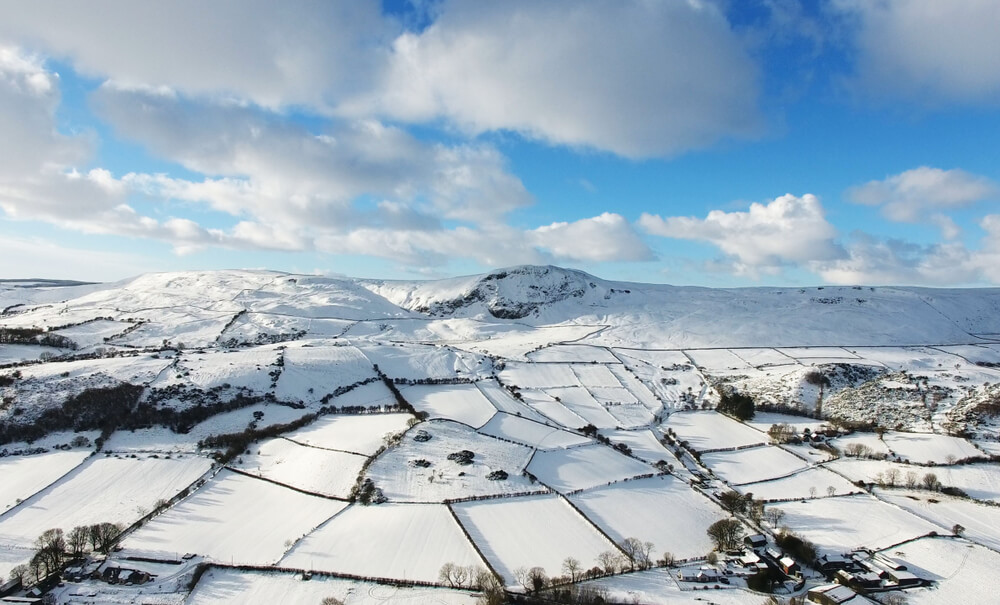
Yes, Ireland does get snow from time to time. The highest likelihood of snow is highest in January or February when the average temperature is between 2-8 °C (36-46 °F), but snow can occur during any cold weather period between November and April.
The influence of the Gulf Stream in the Atlantic Ocean, tends to limit the very harsh snowfalls that are typical of the climate along the east coast of the United States.
Usually, Ireland experiences just a light sprinkling of snow in the low-lying areas, with heavier snowfall sometimes occurring in upland areas and further north. Within a day or two, snow lying on the ground generally disappears.
One recent exception was Storm Emma in March of 2018 which brought heavy snowfalls across the country of 30 cm (12 inches) and up to about 60 cm (24 inches) in some areas of the Wicklow Mountains in County Wicklow. The chaos lasted several days and shut many businesses and schools nationwide.
Because it does not snow in Ireland all that often, kids and adults alike or often quite excited about the event. It releases the inner kid in most of us who are more familiar with rain!
Does it snow in Ireland at Christmas? It has snowed in Ireland at Christmas time over the years on several occasions, but it is not all that likely during the average year. For example, Dublin Airport weather station recorded snow on Christmas day in 1950, 1956, 1962, 1964, 1970, 1984, 1990, 1993, 1995, 1999, 2000, 2004 and 2010 since records began in 1941.
Christmas Day in December 2010 was an example of a winter wonderland in Ireland. There was a thick covering of snow over Ireland from Malin Head, (Ireland’s most northerly point) to Mizen Head (Ireland’s most southerly point), which is quite unusual. On this day, there were also record breaking cold temperatures.
The coldest air temperature ever recorded for the month of December occurred on this day in Straide, County Mayo ( -17.5 °C or 0.5 °F).
More information about Irish weather can be found on the website or app product of the local weather service, Met Éireann . The weather service for Northern Ireland is covered by the Met Office of the United Kingdom. Another useful source of weather statistics and weather forecasts is the Norwegian weather service provider Yr .
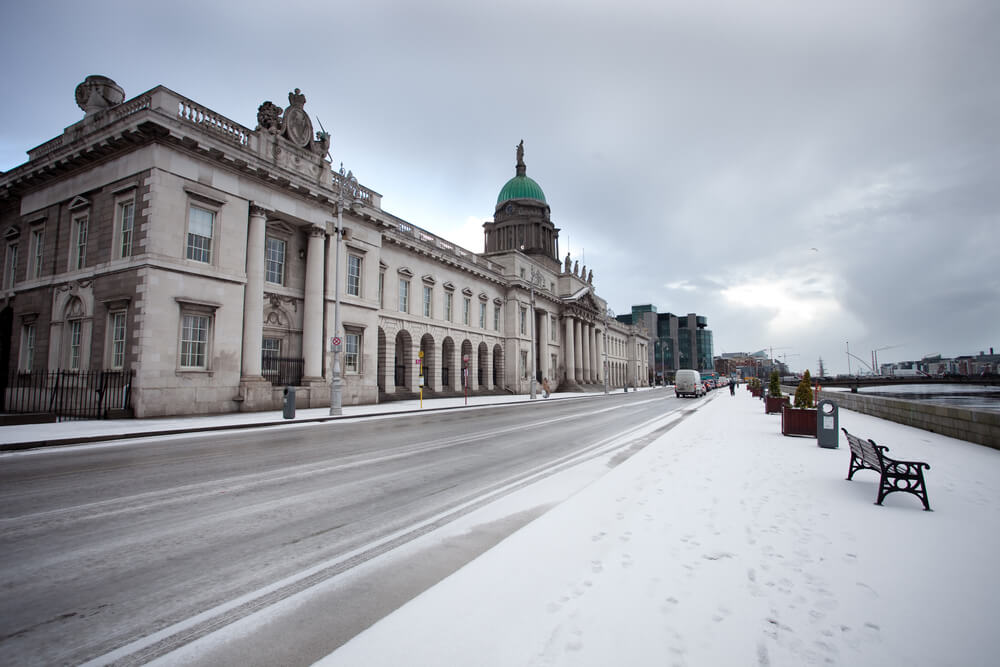
What is the best month to visit Ireland?
May is probably the best month to visit Ireland, based on my experiences of both living and holidaying in Ireland. Peak season hasn’t started yet, but the days are long and temperatures are pleasant at about 11 °C (52 °F). Most tourist attractions are open and operate their full summer schedules, but the number of tourists, crowds and queues are still very manageable.
Best time to visit Ireland according to activity
When is the best time to visit ireland for road trips.
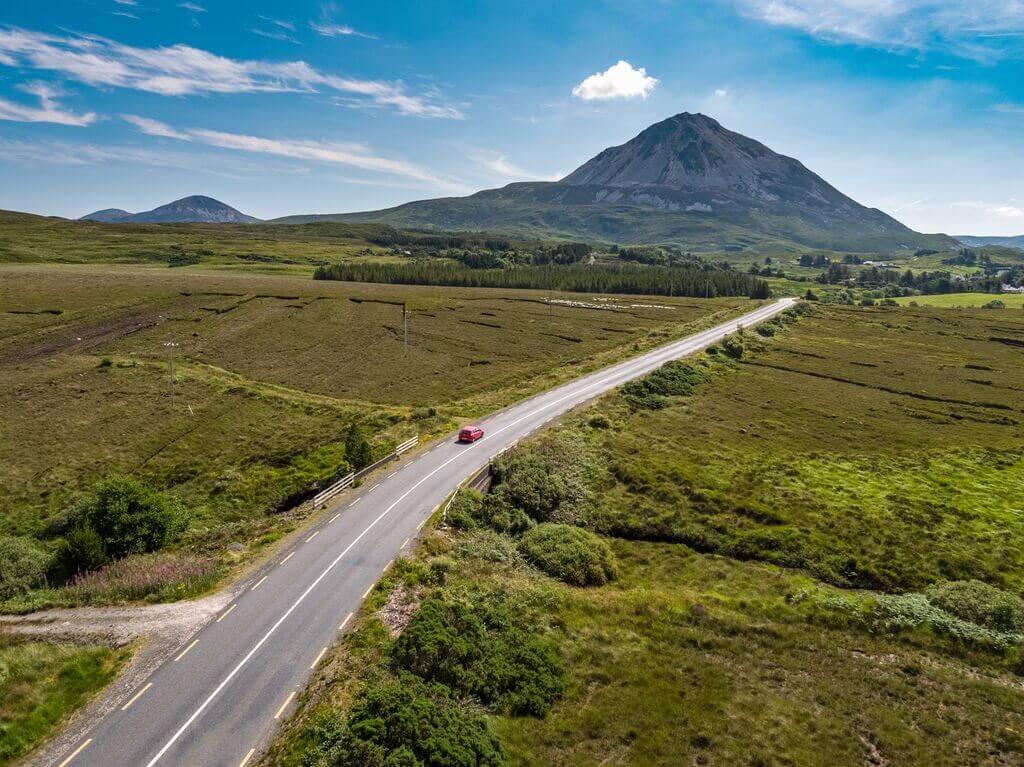
The number of daylight hours is an important factor when planning a road trip by car or by motorcycle. This makes the summer months of June, July and August the best time to visit Ireland for road trips. In peak summer, there can be about 18 hours of brightness. Sunrise can be as early as 5.00 a.m. on the days in June and the long dusk means that the sky is still bright long after the sun sets after 10.00 p.m.
Extra daylight makes sightseeing, especially driving on unfamiliar roads, considerably easier. The weather during the summer months is generally better than other times of the year. Additionally, a road trip at this time of the year means that you won’t encounter icy roads typically associated with the winter and early spring months.
The months of June, July and August are the warmest with average temperatures 16-20 °C (60-68 °F). Why not see if you are brave enough to take a swim when the sea temperatures are at a maximum temperature of 16 °C (61 °F)?! There are great designated swimming and surfing beaches along the Wild Atlantic Way coastal drive (including Stradbally Strand on the Dingle Peninsula) or Benone Strand in Northern Ireland.
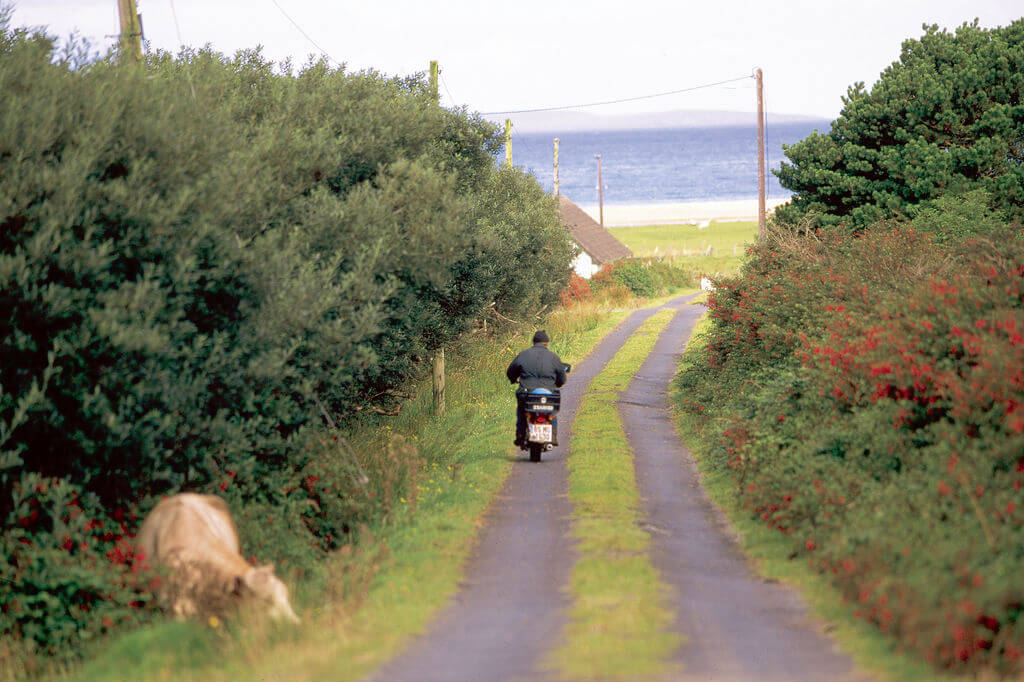
Rain is generally kept to a minimum during the summer months, with showers more frequent that longer bouts of rain. Always plan for rain though, regardless of when you travel to Ireland.
Summer is a great time for a road trip tour of the Emerald Isle as many Irish music festivals and other events taking place all over the country enhance any road trip itinerary.
Perhaps you can join in the festivities of the James Joyce Bloomsday Festival (June 16th in Dublin) inspired by his famous book Ulysses or the Galway International Arts Festival in July with the focus on drama, comedy and music.
Foodies are well looked after with the Taste of Dublin Festival in June or A Taste of Donegal Food Festival in August. While these festivals are not insider travel tips, they will certainly be one of the highlights of your road trip!
Best time to go camping in Ireland
Also applicable for caravans, campervans, RVs, motorhomes and glamping
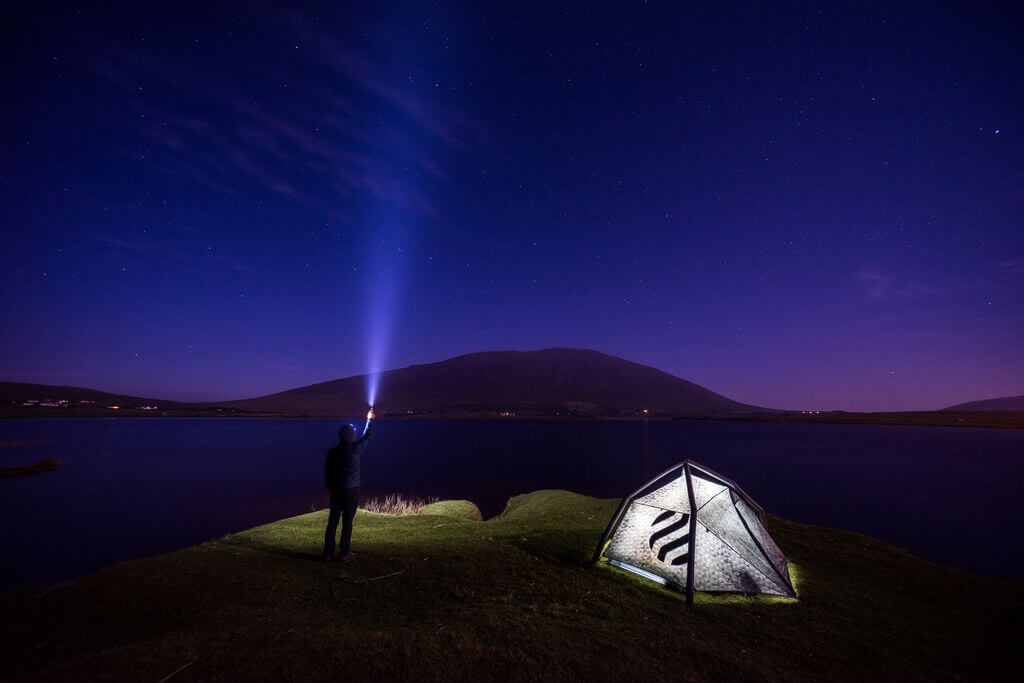
Camping trips in Ireland are best in the summer months of June, July and August when the average temperature at night does not fall below about 10°C (50 °F), but the mild nights in late spring and early fall are also suitable.
During the months of July and August, it is necessary to book camping spots or pitches in advance per night at each camping park along your route. If you value a few days of quiet camping, then aim to holiday during April, May, September or October when the weather is more likely to be camping friendly during the pre- or post- camping season.
Some camping and caravan park sites in Ireland are open year round (such as Camac Valley Tourist Caravan and Camping Park, Dublin), while others close for the winter months (Eagle Point Camping in Banty, County Cork).
The Ireland Camping Council and Tourism Ireland websites should be your first point of contact for more detailed information. These sites can provide tips and advice about where to go camping, the Irish caravan and camping park locations, travel guide information, the latest camping related news and free local amenities.
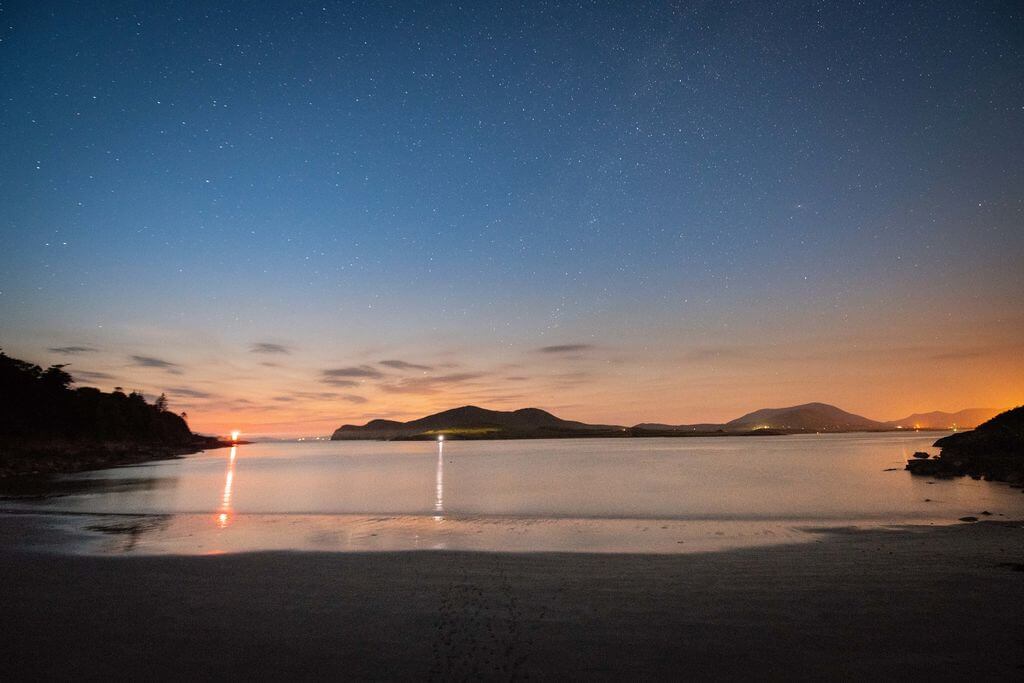
Camping trips in Ireland offer wonderful views of the skies (with two International Dark Sky Reserves in the country: Mayo Dark Sky Reserve Park and Kerry International Dark Sky Reserve ), breathtaking mountains and beach-side camping options.
The appeal of a wild camping adventure off the beaten track under the stars has its own special allure, but you should keep in mind that it is necessary to check with the landowner first. This may be difficult or not always possible. If asked by the owner to leave the wild camping place, please do so without any fuss and follow the “leave no trace” principles.
In Ireland travel with a campervan or motorhome can be very enjoyable, once you get used to the narrow roads and driving on the left. Dotted around the Wild Atlantic Way, Causeway Coastline in Northern Ireland and other popular tourist locations across the island, there are occasional viewing spots or resting spots where you can stop with a campervan. These spots are not designed as overnight locations though, and some have restriction barriers for vehicles over 2,5 meters (8′2″ ft).
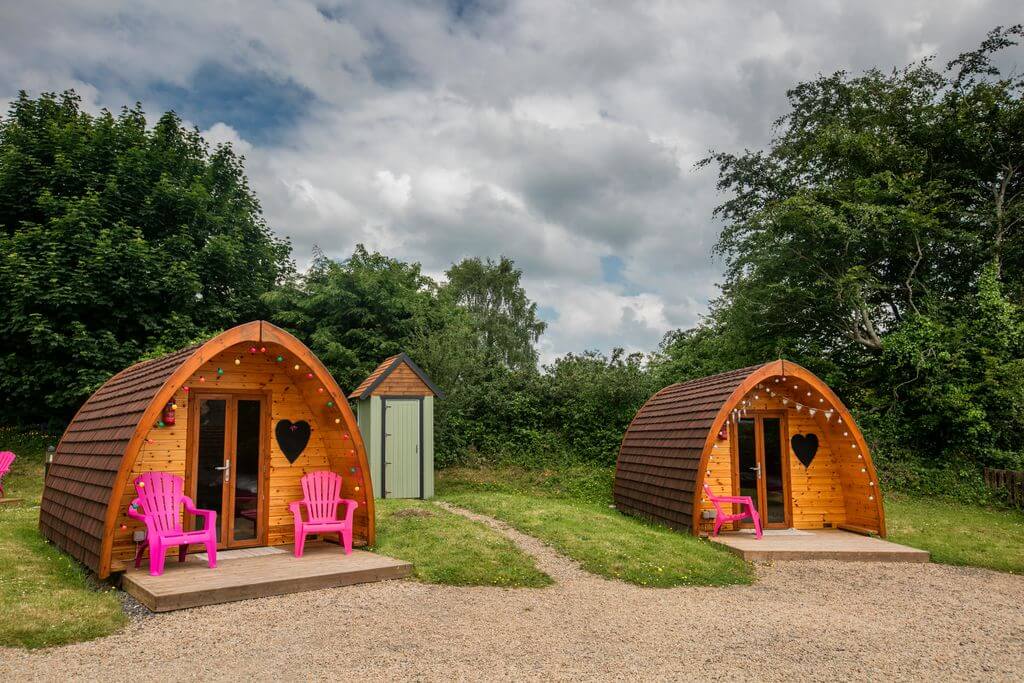
Glamping has become more popular in Ireland recently as a novelty accommodation alternative to hotels or as a unique way to experience festival accommodation (for example Boutique Camping at Electric Picnic ). The variety of glamping offers available in Ireland are not just limited to bell tents and include luxury camping possibilities, such as a night in a safari tent, yurt, pod tipi, hut or cabin.
As this is a more sheltered accommodation option, the Irish glamping season extends longer than the regular camping season, with many locations open for bookings from March to November.
When is the best time to visit Ireland for hiking ?
The good news is that it is possible to go hiking in Ireland all year round, but the hikes should always be adapted to the weather conditions and daylight available. The summer months of June, July and August are usually the best hiking season in Ireland due to the warmer temperatures (on average 16-20 °C or 60-68 °F) and extended daylight hours (up to 18 hours), which is necessary for longer hikes.
Temperatures on Irish mountains can vary considerably from the base to the summit. Even on a glorious, warm day you will still likely need warm waterproof layers on the top of the mountain. Don’t forget to account for the wind chill factor as well!
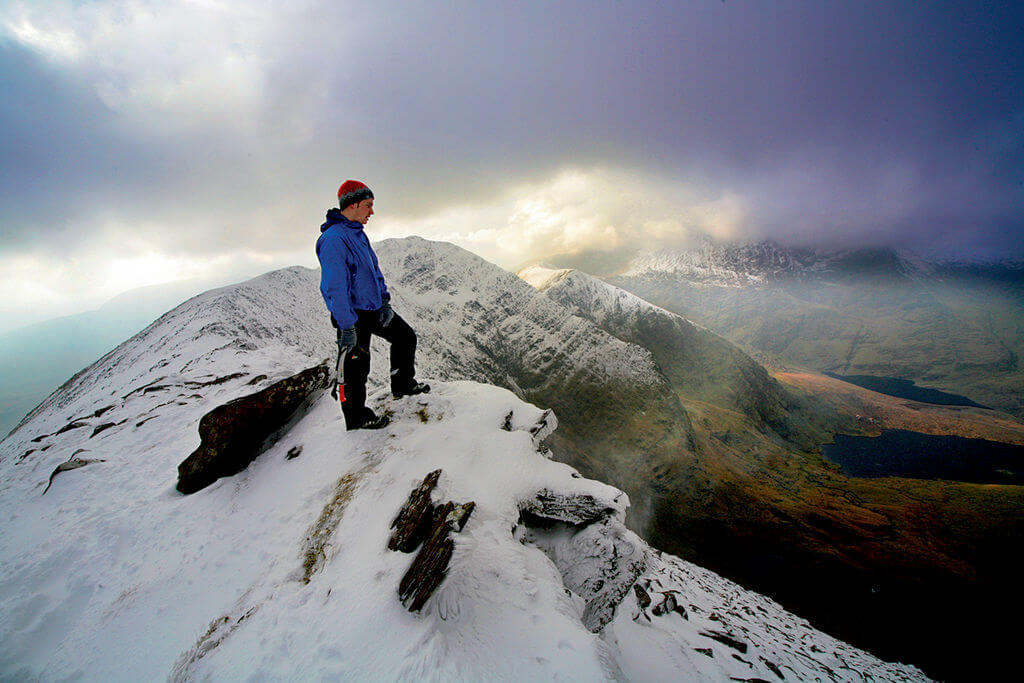
There are many excellent hiking routes in Ireland and some of my personal favourites in Kerry and Galway with excellent views of the Wild Atlantic Way. More details about these can be found in good travel guides. For more inspiration why you should explore the Wild Atlantic Way, check out our post here .
Croagh Patrick in County Mayo (764 m or 2,507 ft) is one of the most famous and the barefoot pilgrimage to the summit takes place each year in on the last Sunday in July.
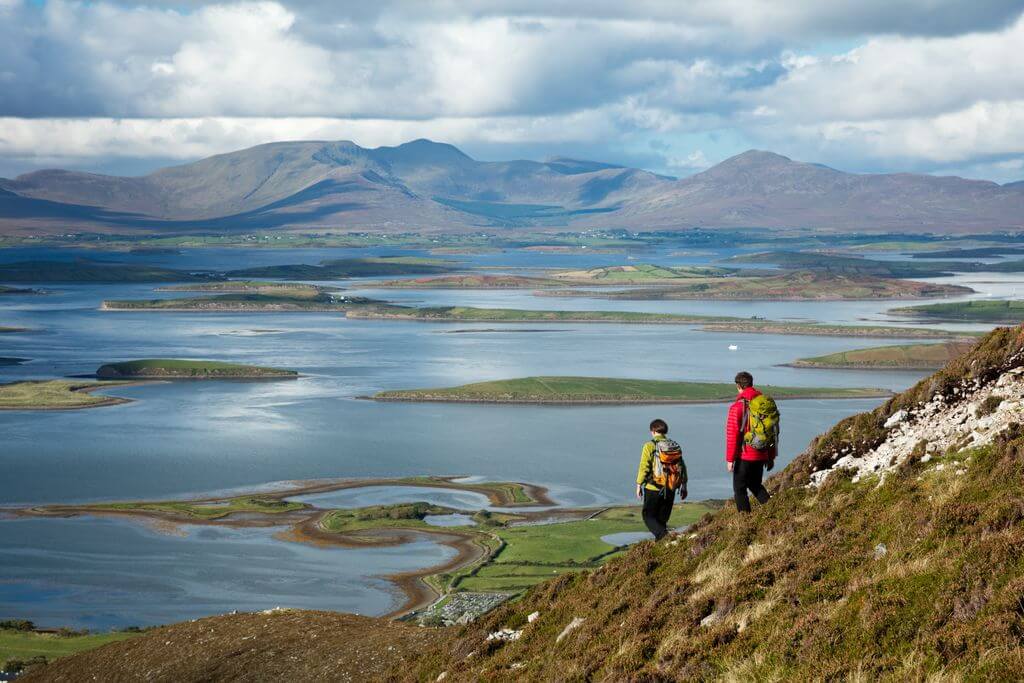
If you plan on visiting Ireland and want to fit in a hike or two, it is important to be well prepared.
Travel Tips: The weather in Irish mountains can change rapidly, sometimes with fog or thick mist blowing in seemingly out of nowhere so always make sure you check the weather forecast regularly. Another thing to note is that most Irish hikes are not marked. You follow trails, without signage so make sure that you have adequate skills.
When is the best time to visit Ireland for sightseeing?
The best time of the year to visit Ireland for sightseeing is slightly off-peak season in April, May, September and early October. Visiting Ireland during this time means there is a reasonable chance of good weather, the opening times of the attractions are similar to peak season and there is less demand for hotels.
Plus, most people agree that sightseeing is likely to be more enjoyable without the crowds, noise, and hustle and bustle associated with the peak summer months.
For an Ireland tour, April and May are recommended as good times for sightseeing because the weather is improving for the better after the winter months and the daylight hours are getting longer. The average temperature is between 8-10 °C (46-50 °F) with some days being as warm as 15 °C (59 °F).
These months are among the driest (each receiving about 80 mm or 3 inches of rainfall per month on average). You might be lucky and encounter a few days of t-shirt weather, but it is best to pack some warmer layers for the Irish weather just in case.
Fall, or autumn in the Emerald Isle is beautiful, which makes September and early October great times for a sightseeing trip. Some of the best places to visit in Ireland, such as the Cliffs of Moher , Glendalough or the Giant’s Causeway and Tollemore Forest Park in Northern Ireland, look even more stunning in the autumnal landscape.
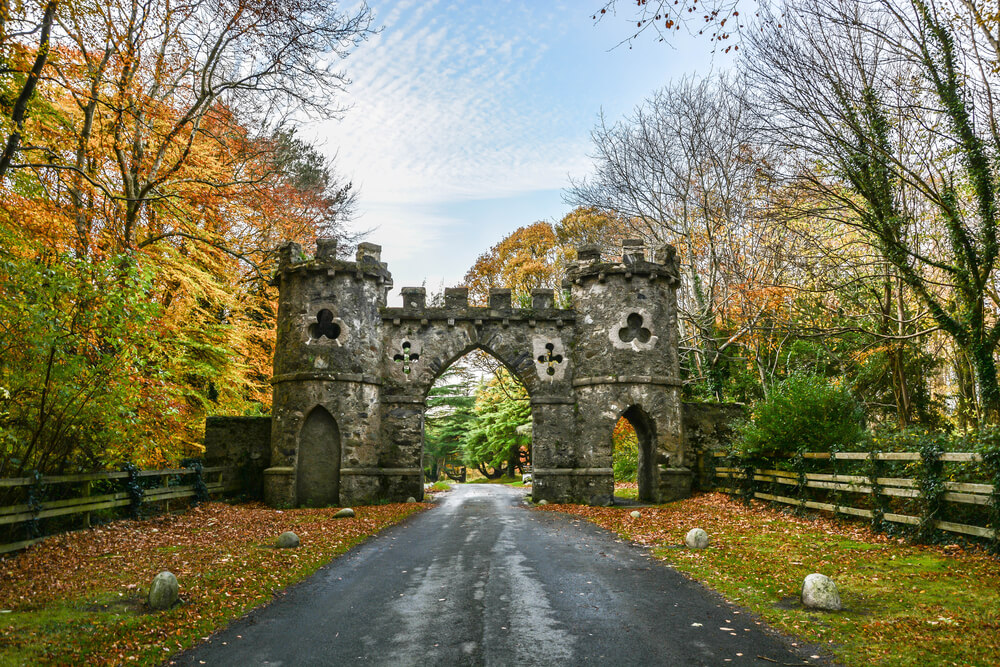
Average temperatures in September and October vary. September is generally warmer with temperatures of 10-17 °C (45-63 °F), while October is cooler 7-14 °C (45-57 °F) . Rainfall does start to increase again before winter, so waterproofs are a must.
Travel Tips : As the travel guides say, sightseeing in Ireland is possible at any stage in the year. However, some of the smaller sights and hotels may be closed or else have shorter opening times in the late fall, winter and early spring seasons.
If you are making a long haul flight from the United States or even further afield and want to visit a particular attraction, make sure you check the opening times of the more seasonal attractions in advance.
Keep an eye out for the 9 public holidays spread throughout the year. In addition to New Year’s Day (January 1), St. Patrick’s Day (March 17), Easter Monday, Christmas Day (December 25), St. Stephen’s Day (December 26), there are 4 additional public holidays called “bank holidays”. A bank holiday falls on the first Monday in May, June and August as well as the last Monday in October.
Don’t be fooled into thinking these holidays just affect the banks. The opening hours of attractions and businesses may differ from the norm and public transport will operate with restricted schedules.
Best time to visit Ireland on a budget
The cheapest time to travel to Ireland is during the months of January and February. Airfares are one of the major costs associated with visiting Ireland and these tend to be lowest early in the year making it the cheapest time to fly to Ireland.
Is Ireland expensive to visit? In a nutshell, yes, but cheap trips to Ireland are possible too if you plan ahead and are selective with your itinerary.
Lonely Planet recommends that you should plan a daily budget of at least €80 (ca. US$90) for a budget style holiday with dorm hostel accommodation. For a mid-range holiday, increase that daily budget to up to about €150 (ca. US$170). Of course, there is no upper limit.
As the weather is likely to be mixed and wintery with average temperature around 4-6 °C (39-42 °F) and as the days in January and February are short, it is not surprising that fewer crowds as the majority of tourists avoid this time of year. They are missing out on something special though!
Traveling during these months might limit the amount of sightseeing you do outdoors (but you never know, Irish weather is full of surprises!). It is worth mentioning though, that walking along a windswept beach in Ireland during winter is exceptionally exhilarating!
What about seeing the northern lights? This is also possible to do in Ireland, once you get the right conditions. Check out our detailed Northern Lights in Ireland post here for more information.
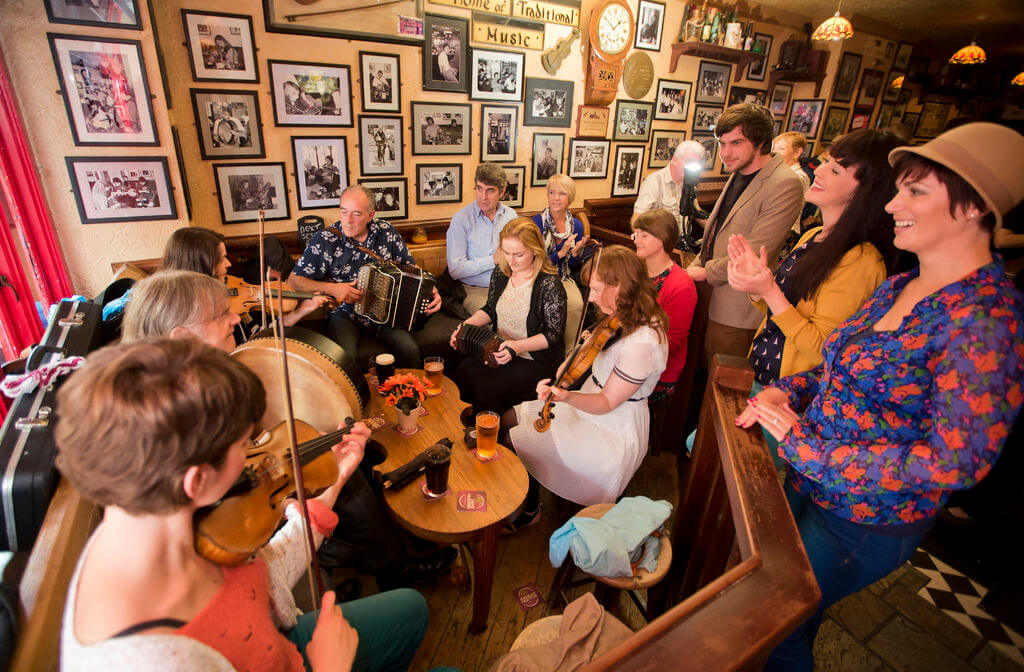
Nevertheless, Ireland is famed for many great things to take your mind off inclement weather including the lively pub atmosphere and for the price of a pint, you can experience live traditional Irish music sessions. Or there are many other free art galleries and museums, spectacular churches and charming towns to keep you entertained without breaking the bank.
Ireland weather by month: Overview
Let’s be clear. Ireland is perched on the edge of Europe and is strongly influenced by the changing weather blown in mostly from the Atlantic. While there is no official rainy season in Ireland, you should expect to encounter at least some rain at some stage during your stay, regardless of what month of year you travel.
This little island has so much to offer with regards to culture, atmosphere, scenery, food, live music and lots more. Weather, however, is usually not towards the top of that list. In fact, the skies above Ireland are generally covered with clouds about half of the time. If you happen to encounter fabulous weather during your stay, count yourself lucky. If you don’t, relax, there will be so much to see and do that the weather will be the least of your concerns!
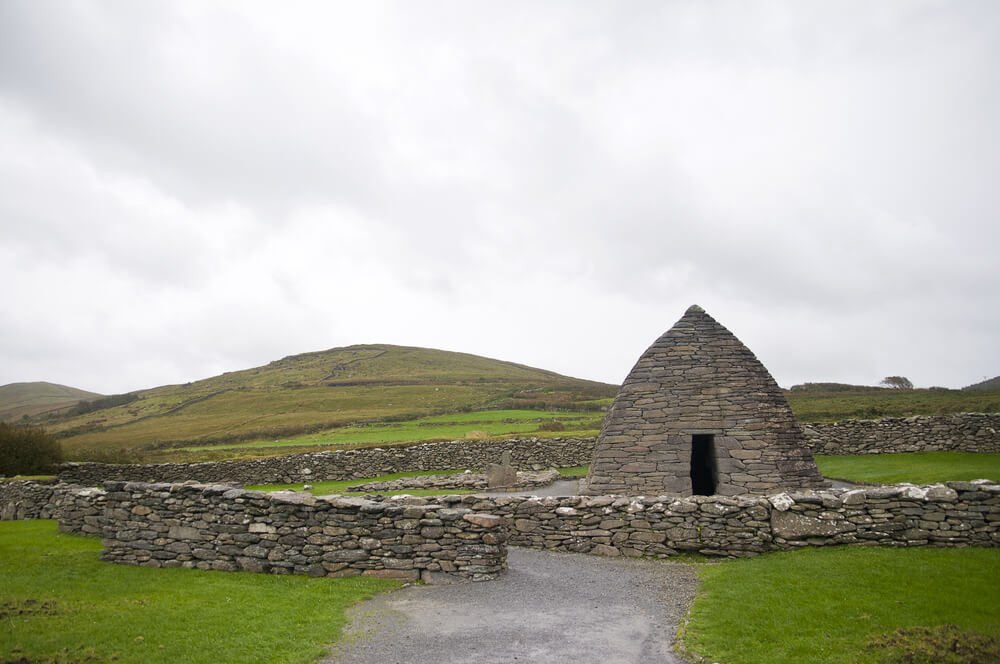
Take a look at the summary of each month to get a breakdown of Ireland temperature by month and Ireland weather by month.
Ireland in January
Most years the weather in January is mixed, usually with a decent helping of wind and rain. Average temperatures of 3-8 °C (37-46 °F) and general Irish weather conditions tend to favour more indoor activities. The days are short, making it the perfect time to plan a city break tour to Dublin, Cork or Galway and explore museums, art galleries, cosy cafés and live music in the pubs.
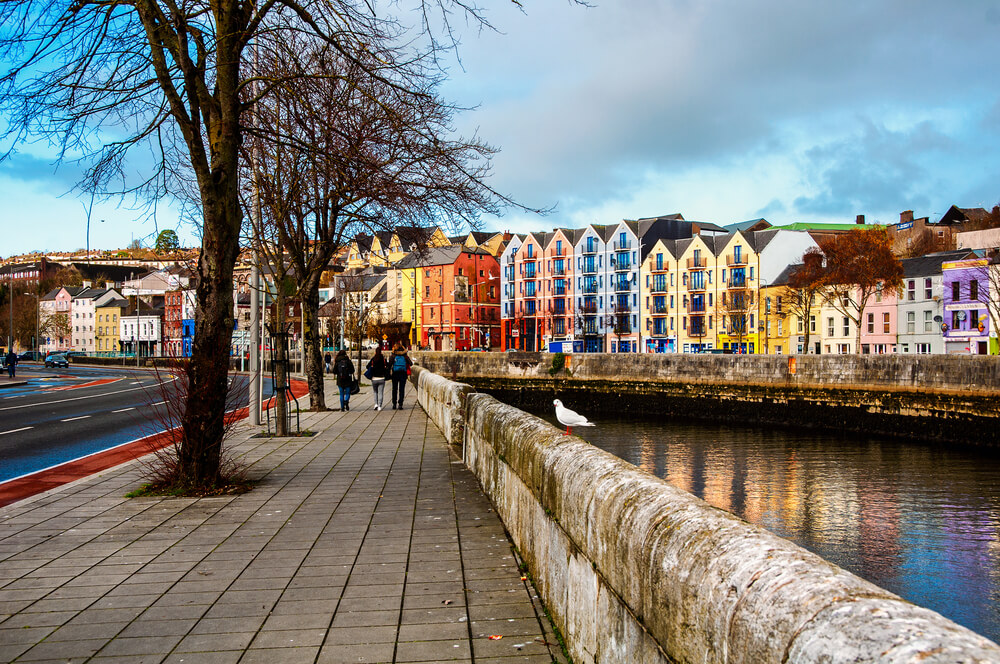
If wild weather doesn’t put you off, then there are fantastic sights along the Wild Atlantic Way on the west coast of Ireland and the Causeway Coastal Route in Northern Ireland, which you are likely to have entirely to yourself during this time. Check out the breathtaking beaches, rugged cliffs and national park destinations that will blow away the cobwebs and leave your reinvigorated for a new year?!
One of the main benefits of travel at this time of year is that in Ireland hotels are likely to have more vacancies and offers around this time, which means you might save on the cost of accommodation during your trip.
Weather in Ireland in January
Be prepared for windy and sometimes stormy weather when visiting Ireland during the month of January. There might also be the odd snowfall or icy road conditions on some days. This makes road trips and outdoor activities, such as hiking, more unpredictable and extra caution should be taken.
The daily average temperature is between 2-8 °C (36-46 °F) and very cold weather doesn’t usually last more than a few days.
Occasionally, Ireland is influenced by colder weather blowing in from Europe during this time of the year, which gives rise to clear, frosty mornings and cold nights. If you do get a chance to visit during this winter wonderland time, be sure to get up early to experience the magic!
Weather in Dublin Ireland in January
Dublin city is a great place to visit year round. Located on the east coast of Ireland in County Dublin, Ireland’s capital city generally escapes a lot of the wilder and wetter weather blown in from the west via the Atlantic ocean.
You can expect the average temperature to be between 2-8 °C (36-46 °F) on most days. Rainfall on average is also less than in other areas of the country at about 60 mm (2 inches).
In Dublin city the most popular attractions, including the Book of Kells in Trinity College and Temple Bar, are not weather dependent, so you shouldn’t let the winter weather deter your travel to Ireland.
If you have some flexibility during your stay, check the weather forecast in advance to see if it makes sense to plan a day trip to explore some other sights located further outside the city of Dublin. Dublin certainly has a wealth of interesting sights to visit. Check out our Unusual Dublin and Dublin Secret Sights posts some inspiration!
Alternatively, check out one of Dublin’s great luxury hotels for a winter city break treat!
Ireland in February
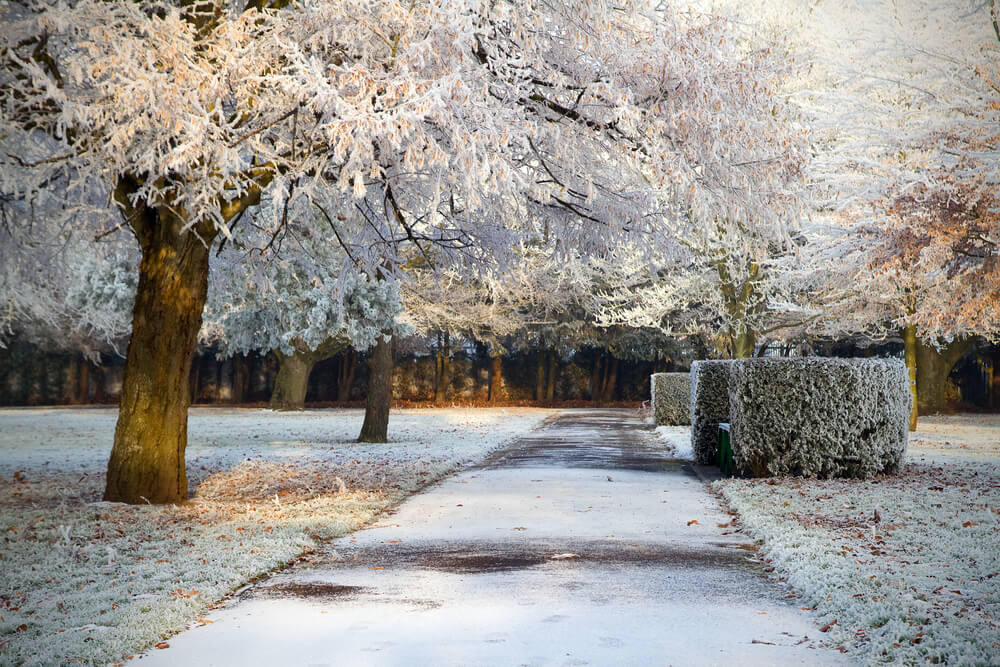
Most years the weather in February still feels very much like winter and there is some occasional snowfall. Don’t be fooled by the first spring flowers that often appear sprouting above ground level around February 1st, St. Bridget’s Day, (the traditional start of spring), it can be quite chilly so it is best to use layers when wrapping up to keep warm and dry.
The days are short with beautiful (early) sunsets visible from western Ireland. Regardless of the time of year, the rugged Irish scenery along the Wild Atlantic Way is always breathtaking.
February is a good time to plan a city destination break to Galway, Dublin or Belfast. There is plenty to do and see indoors to keep you busy!
While it is not the best time to travel to Ireland, the one main advantage to visiting Ireland at this time of year is that February is still considered off-peak season. If you are willing to shop around and are flexible with your travel dates, you might save on tours. Around St. Valentine’s Day, you might get some special deals on the hotels Ireland has to offer.
Weather in Ireland in February
Average temperatures in Ireland in February generally stay above freezing point, with extended periods of cold occuring seldomly. Storms blow in from the wild Atlantic from time to time and generally last 24-36 hours. Be prepared for the likelihood of some rain during your stay.
During this month, you can expect high wind speeds in exposed areas, particularly along the coast of western Ireland. Take care for gusts of wind if you are visiting cliffs or shorelines along the Wild Atlantic Way. Wave watching during windy weather can be an awe inspiring sight, just don’t get too close!
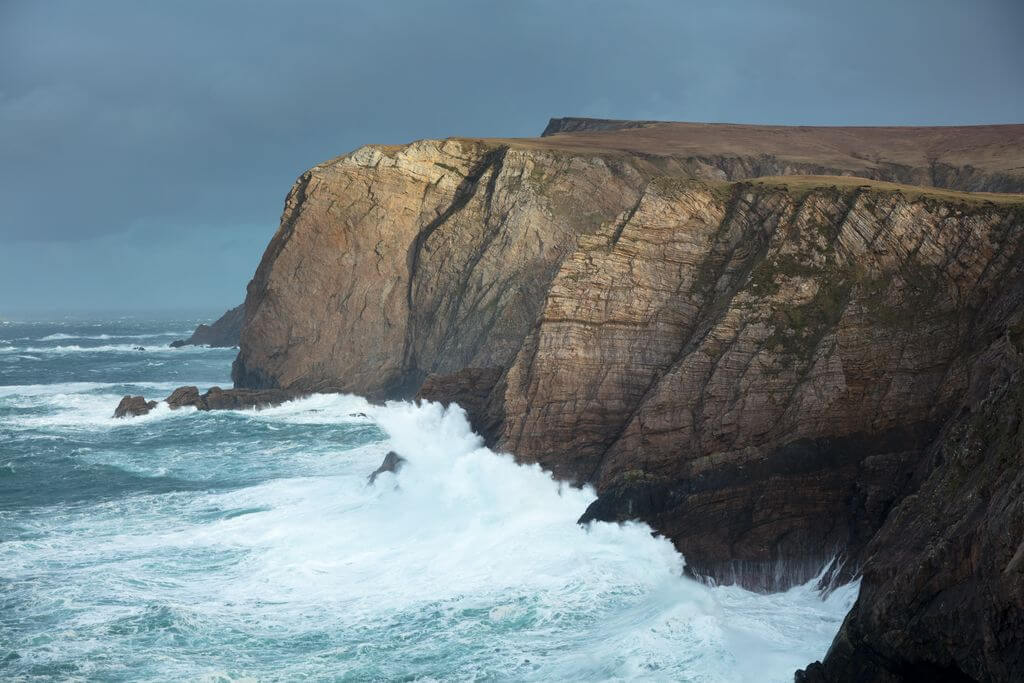
Don’t let the poorer weather conditions put you off getting a car rental. Just keep in mind that sometimes the wet or icy road conditions, especially on rural roads, can make the driving experience a bit more challenging.
In Ireland, hotels can offer occasional good mid-week breaks at this time of year so check around to get the best value hotel deals for your travel in Ireland. This is especially the case outside the bigger tourist destination spots.
Weather in Dublin Ireland in February
If you are planning a trip to Ireland and want to spend time in Dublin in February, the weather conditions shouldn’t bother your plans too much, as there is so much to see indoors within the city itself. With an average temperature of about 5 °C (41 °F), you will not have to worry about very low temperatures once you wrap up with layers.
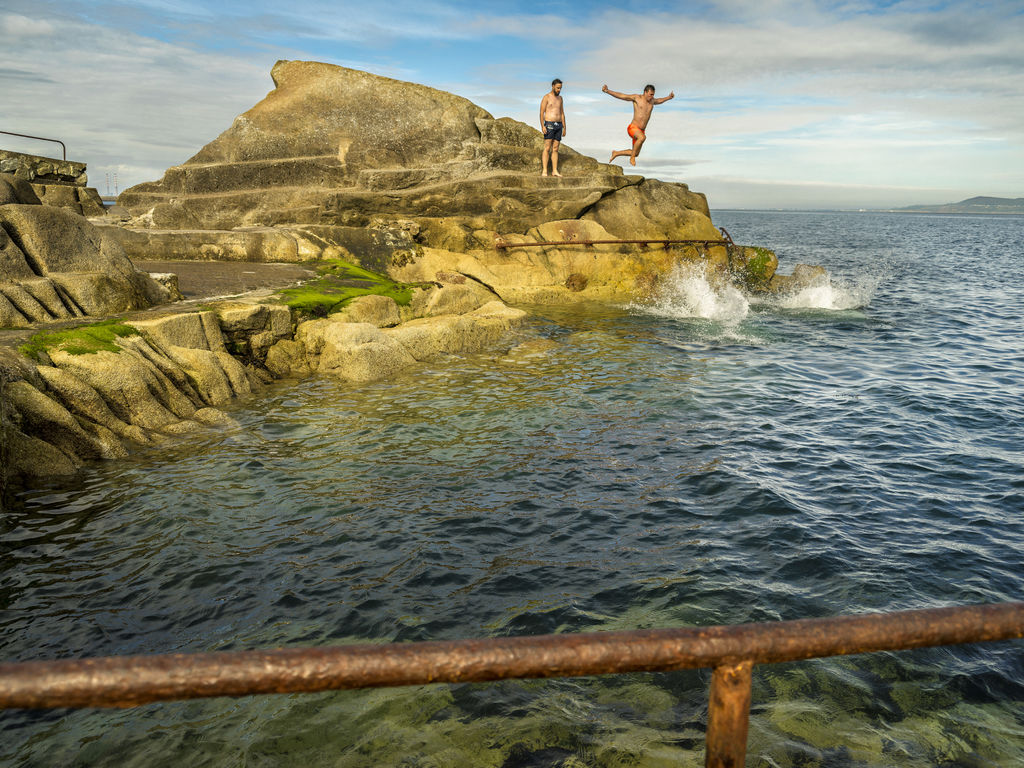
For those of you who might fancy a swim in the famous “ Forty Foot ”, brace yourself for the cold with the average water temperature being 6 °C (43 °F).
On days where the weather forecast is good, longer day trips either by bus or private car rental, are likely to be well-worth the effort. Suggested day tours are to the Giant’s Causeway in Northern Ireland or the Cliffs of Moher on the Wild Atlantic Way.
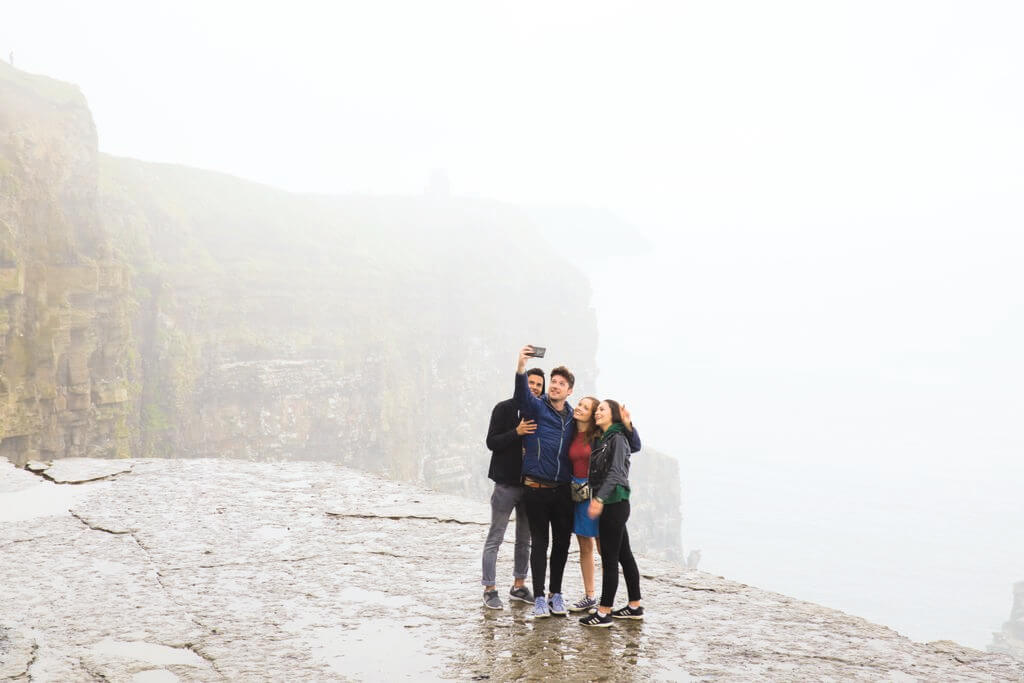
Ireland in March
Early spring is a good time to plan a vacation in Ireland, so March is definitely worth considering. The slight drawback is that during March weather in Ireland can be unpredictable. Weather in early March still feels more wintery, while the feeling of spring slowly creeps in towards the latter half of the month when the days start to get longer and warmer.
The tourist season starts to kick off again during this month and the St. Patrick’s Day celebrations around the saint’s day on March 17th generate a great buzz nationwide. Generally, you see people wrapped up with hats and scarves while they are waiting around outside for any length of time for the parades.
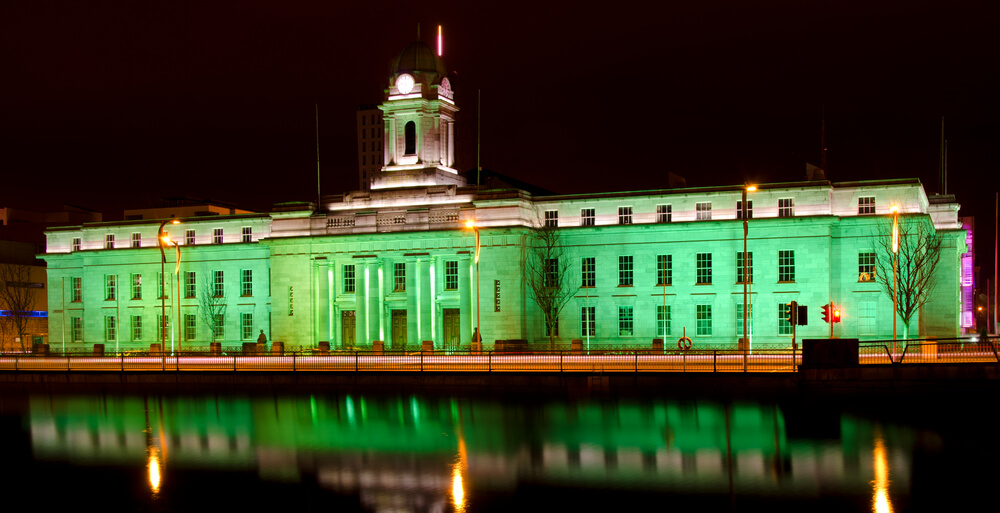
Weather in Ireland in March
The weather in the month of March can be lovely and mild, but also can leave a lot to be desired. Throughout Ireland and Northern Ireland the tourist season is slowly getting started again and the average temperatures are by now starting to warm up slightly to about 7 °C (45 °F). The lowest average temperature around this time is about 3 °C. Make sure to still pack your hats and scarves, as the wind can be quite cold this time of year.
Spring has arrived and with it the spring flowers in the parks, on roundabouts and along the Wild Atlantic Way. The days are noticeably getting longer with more hours of daylight (Note: The clocks “spring forward” one hour on the 3rd Sunday in March for Summer daylight savings time). This makes travel and sightseeing a lot easier and more enjoyable.
Bonus Tip : Make sure to bring some extra layers (including socks!) if you want to attend a St. Patrick’s Day parade. Standing around in the cold for an hour or two can be a chilling experience so check the weather forecast before you head out!
Weather in Dublin Ireland in March
Dublin can experience reasonably mild average temperatures at this time of year, but the weather can be a bit mixed so be prepared for blustery, rainy or even some sunshine! You can never know in advance and need to be prepared for every kind of weather during this month!
On March 17th, Dublin hosts the biggest parade in the country as part of the St. Patrick’s Day Festival celebrations and many people use this as a wonderful reason to visit the capital and travel around Ireland. Enjoy the few days of festivities and book your hotels in advance if you plan your trip to coincide with the celebrations.
Ireland in April
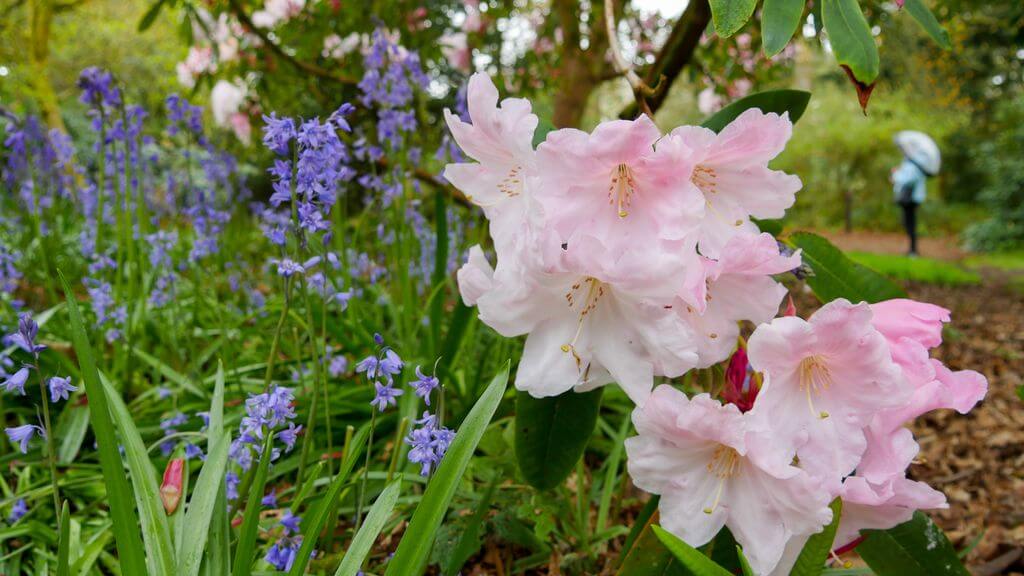
Visiting Ireland in April is an ideal time to visit and explore the country. Spring is in the air, the days are longer and the temperatures are increasing. April showers may be frequent, but with the right gear it is one of the best times to be outside and enjoy nature and stunning landscapes, particularly along the Wind Atlantic Way coastal drive.
The Easter break, which usually falls during this month, results in many family vacations being taken within Ireland. Increased demand, combined with better weather conditions means increased opening hours for certain attractions and additional services are scheduled (for example sailings to the Aran Islands and tours to see Fungie the famous Dingle dolphin in County Kerry)
Family friendly rentals can get booked up quickly, so be sure to plan your accommodation in advance over the Easter period.
Weather in Ireland in April
Generally speaking, Irish weather tends to improve over the duration of the month of April. The month often starts out wild and windy, but is more settled by the time May arrives with the average temperature around about 8 °C (46 °F).
Another benefit of visiting Ireland in April is that the April average for rainfall tends to be one of the lowest of all the months of the year. The waterproof clothes will still come in handy though and will also help to keep you warm against the wind chill!
As daylight hours extend to at least 8.00 p.m., there are also more opportunities during the days to travel and take part in outdoor activities in the seasonal spring weather.
Weather in Dublin Ireland in April
Dublin city is a charming place to be in April, as the spring flowers and cherry blossoms brighten up the cities many parks and cafés open up their outdoor seating for food and drink. The average temperature is about 8 °C (46 °F), with the average low temperature usually not dipping below about 4 °C (39 °F). Layering is still the key to the most appropriate clothing, but you can leave your heavy winter woolies probably at home.
While you should still expect some rainfall on some days, most of it is likely to be confined to showers during this month. Showers can appear out of nowhere so always have an umbrella handy!
Take some time if you can to travel around the city and explore what is on offer. It is one of my favorite times of the year to holiday, not only in Dublin, but also around the rest of Ireland and Northern Ireland.
Ireland in May
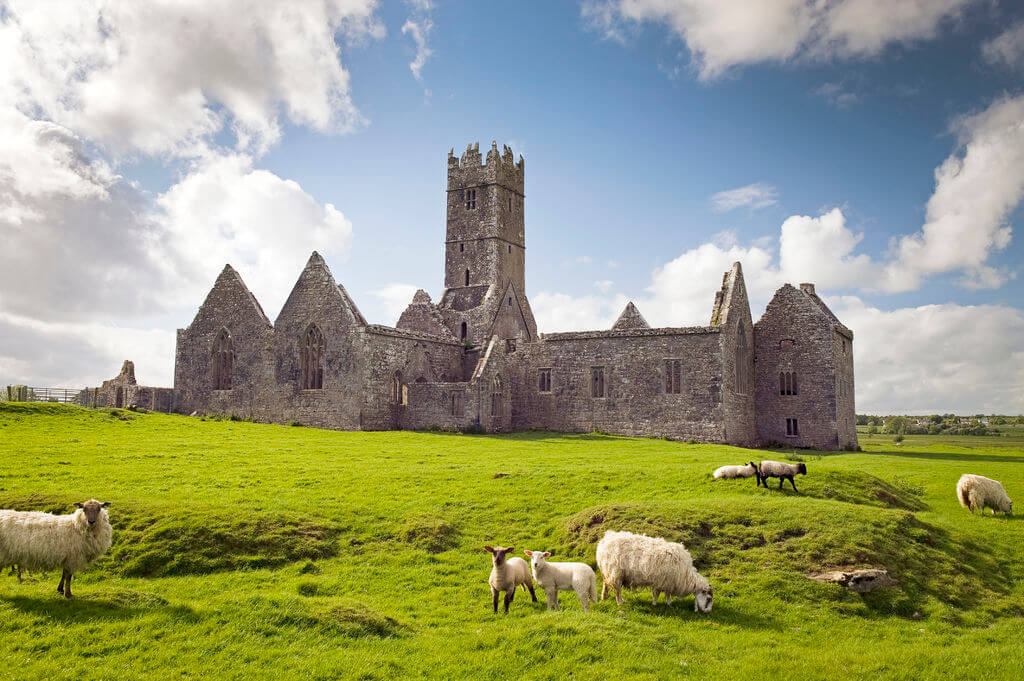
May is probably one of the best months of the year in Ireland. You can expect plenty of daylight and have a reasonable chance of decent weather. In fact, May and June are on average the sunniest months. As the temperature in Ireland in May is a bit warmer, you won’t need to wear as many layers of clothing.
Kids are still in school until around the end of June and the peak summer season does not start until mid-June so you are not likely to experience the large crowds at attractions that are more typical of the summer season.
Although visiting Ireland in May is not during the peak season, the costs of air travel and accommodation are somewhat similar to what you will find in high season.
Do you want to visit a unique festival in Ireland in May? Why not take part in the May the 4th Be With You Festival along the Wild Atlantic Way?! Particularly Star Wars fans will have a blast. Do you want to find out more about Ireland Star Wars locations? You can find all the information you need here .
Weather in Ireland in May
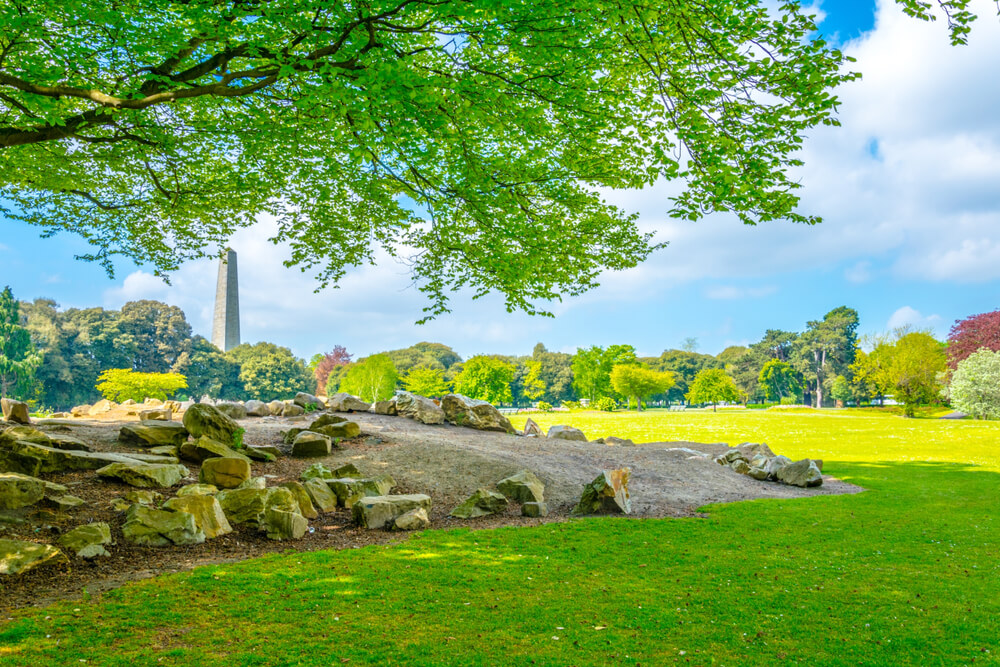
If you are planning to visit Ireland in May, then you are in with a chance of seeing Ireland at its best. The cool average temperatures ranging from about 7-15 °C (45-59 °F) are not likely to be too warm or too cold for most tastes. Generally speaking, you can experience settled weather and if you are lucky, some decent amounts of sunshine and perhaps even blue skies!
During the late spring season, precipitation levels are not particularly high and showers are more typical of this time of year than days of constant rainfall. Wind is less likely to be an issue than in the winter and early spring months. You can pack some lighter layers if you plan to travel to Ireland during this month.
Many travel guides highlight the summer months of June, July and August for their weather in Ireland, but if weather is your only consideration, May can be an alternative and slightly cheaper option to visit Ireland.
Weather in Dublin Ireland in May
The weather in Dublin during the month of May can be very pleasant. The average temperature of 10 °C (50 °F) makes it perfect for exploring the city while escaping the hot summer or cold winter weather.
Visitors to the city can hope for not too much rain (usually) and generally a few days of settled weather during this month, as well as plenty of hours of daylight.
May is the time of year that I recommend people to visit Dublin and the rest of Ireland. You can enjoy Dublin’s parks with sunshine and avoid the crowds more typical of the high summer season.
Ireland in June
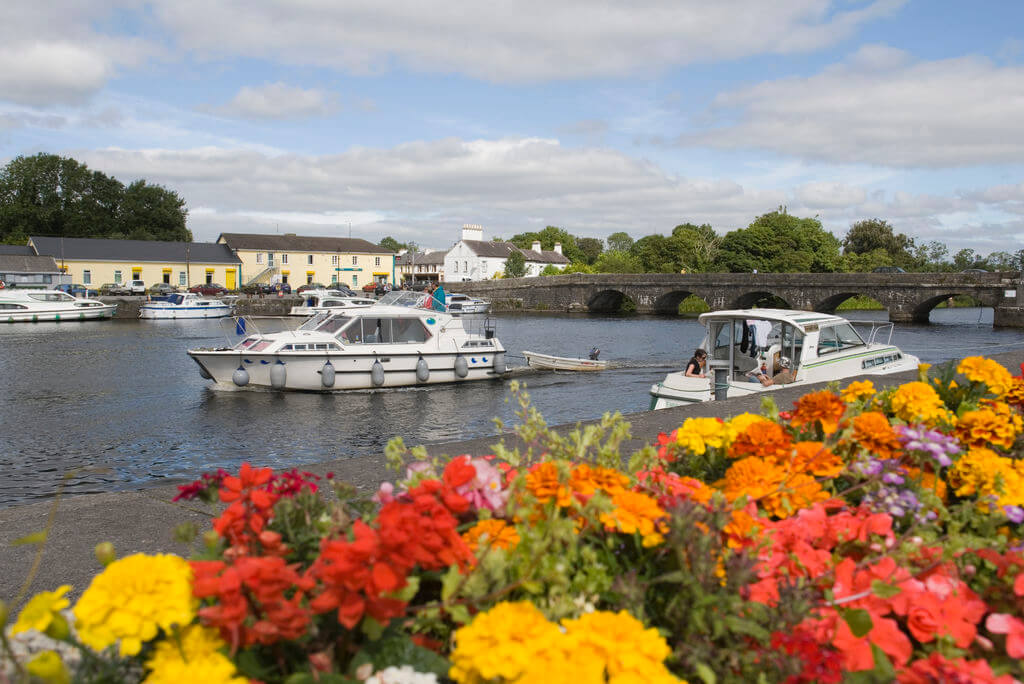
The very long summer evenings with dusk extending to about 10.00 p.m. or even later are definitely one of the main highlights of visiting Ireland and Northern Ireland in June. It is an ideal time to plan a road trip by car, motorhome or motorcycle around the Emerald Isle.
Temperatures at this time of year are now warmer, reaching about 14 °C (57 °F) on average and there is less likelihood of rain and windy weather.
From about mid-June, the high tourist summer season starts with crowds increasing over the next two months.
Summer is a great time to travel to Ireland with Irish people organising festivals and events of all kinds throughout the country. Some of the most enjoyable music festivals are held in June, such as the Sea Sessions (the surf music festival takes place in Bundoran, County Donegal) and the alternative Body and Soul Music and Arts Festival in County Westmeath.
Weather in Ireland in June
June heralds the start of the high summer season in Ireland along with the warmer average temperatures of 10-18 °C (50-64 °F). Rainfall in June is a reality in Ireland and unlikely to be completely avoided during your trip. Once you keep this in mind and are well prepared, rain is not going to hinder your Ireland travel plans too much.
The long hours of daylight in June is one the distinct advantages of visiting Ireland during this month. As most travel guides suggest, road trips and outdoor activity holidays are definitely better suited to this time of year for these reasons.
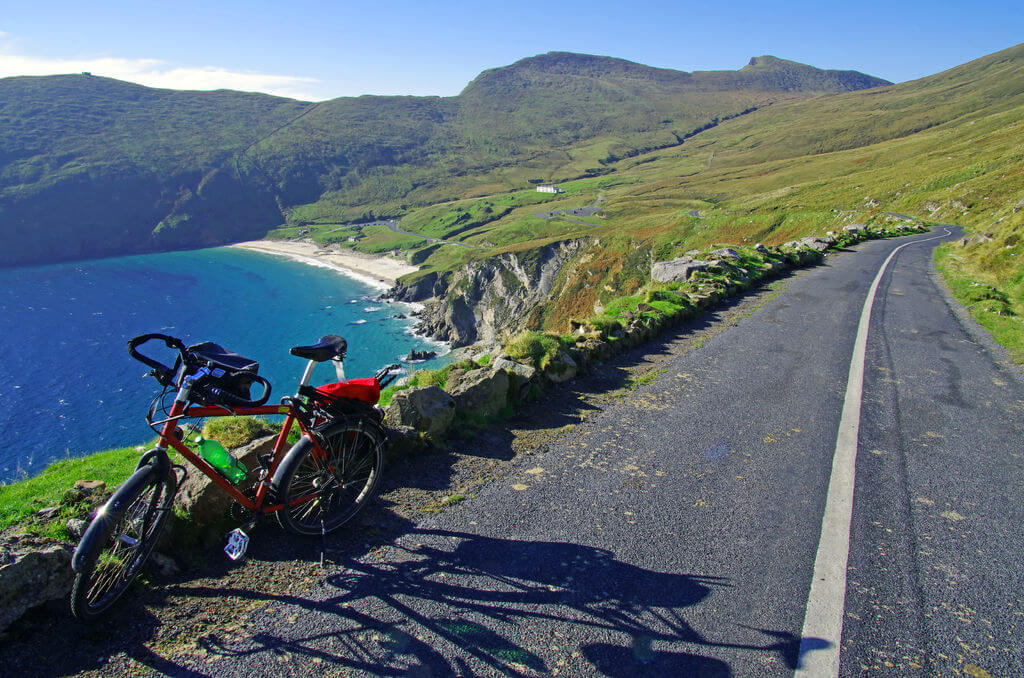
Outdoor food and music festivals are also more frequent during the summer months and bring the cities of Dublin, Galway and Cork to life with plenty of leafy beer gardens to enjoy a relaxing drink well into the long evenings.
Weather in Dublin Ireland in June
June is an exciting month to visit Ireland and especially Dublin city, as the James Joyce Bloomsday festivities take over on June 16th. The pleasant monthly average temperature of about 14 °C (57 °F) in Dublin, ensures that it is not too chilly to take part in the outdoor Bloomsday festivities (many take place indoors as well!).
As the high tourist season starts in June, there will be more visitors around the capital. On days where the weather is good, many people flock to the lovely parks scattered around the city to relax, soak up the atmosphere and enjoy the warmer summer temperatures.
There are more than enough indoor attractions (many of them free) to keep you entertained if the weather forecast for a day is rainy or windy.
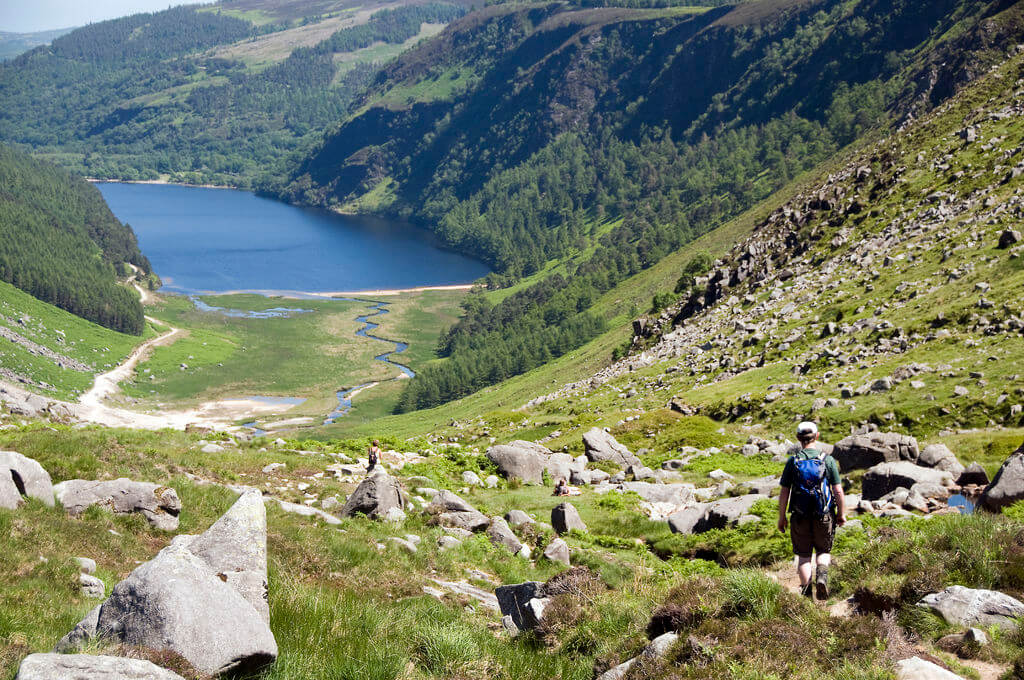
If you plan a day trip from Dublin to Glendalough, the Cliff of Moher and the Burren or to Northern Ireland, you are more likely to benefit more from the trip at this time of the year than during winter or spring when the daylight hours are shorter.
Ireland in July
July in Ireland is a popular time to visit Ireland with long daylight hours and generally decent weather. Schools are closed for summer holidays, meaning that there are more domestic tourists, as well as overseas visitors during this peak season period. Keep this in mind when planning your budget, accommodation and what top attractions to visit.
It is a great time to check out a national park or two, with Connemara National Park being one of my personal favorites. There is a small visitor information center in Letterfrack where you can find highly enjoyable hiking trail options for the nearby Diamond Hill.
While in the general vicinity, two other tips you should consider are to a night in the luxurious Ballynahinch Castle Hotel and check out the Galway International Arts Festival if you have the chance.
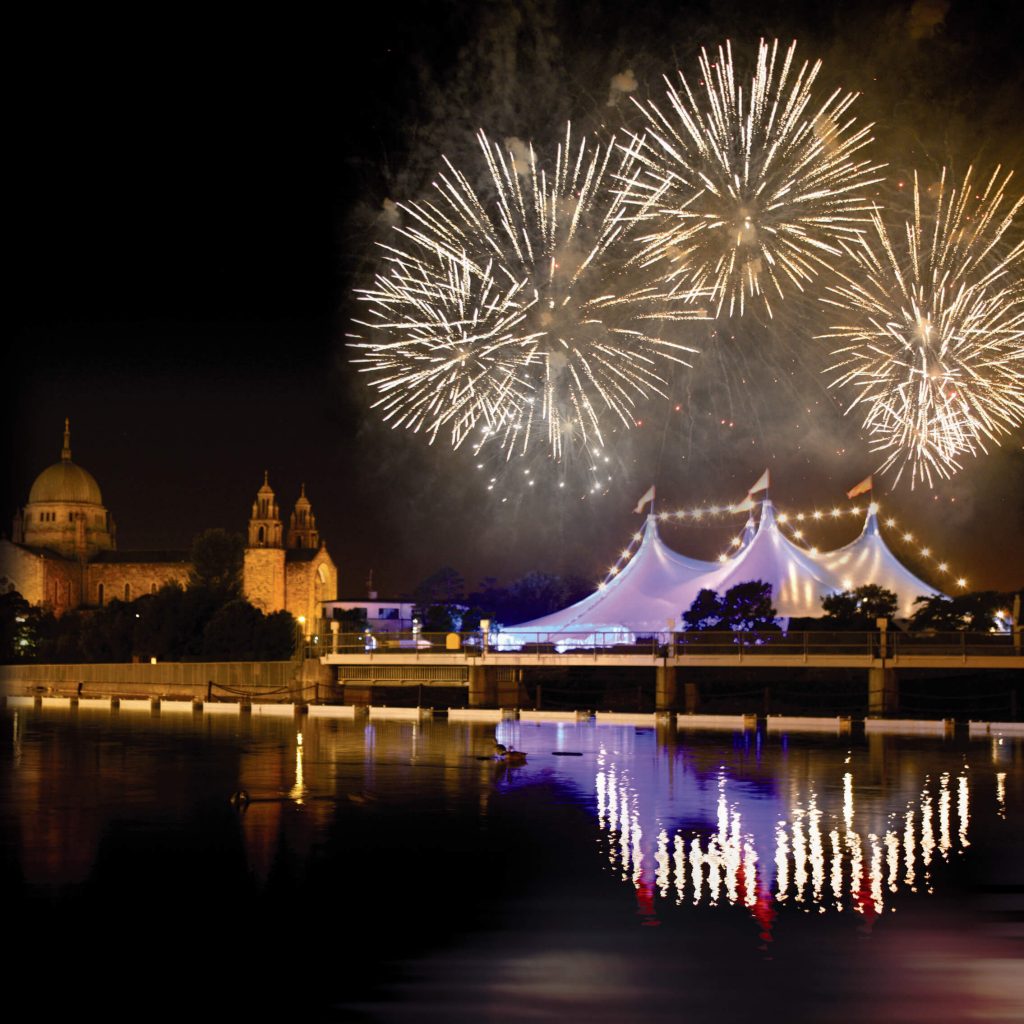
Weather in Ireland in July
Generally speaking, typical Irish weather for the month of July is reasonably warm with average temperatures between 12-20 °C (54-68 °F) and a similar number of rainfall days to the neighboring months of June and August. The long daylight hours that extend well into the late evening are a great bonus at this time of the year.
Road trips around Ireland and Northern Ireland are best suited to the long summer days, with July being a perfect time to plan such a trip. The weather forecast can still be quite changeable, so always take a look a few days in advance if you want to travel to a particular (outdoor) location on a particular day.
It might be a bit unrealistic to expect bright, blue skies and sunshine every day, but with any luck, the weather will be reasonably dry and will allow you to fit in lots of sightseeing.
In July average temperatures at night usually don’t dip too low, so this is also one of the best times to go camping. Alternatively if you plan on staying in hotel or bed and breakfast accommodation, book your stays in advance, as there may not be vacancies in high season as short notice.
Weather in Dublin Ireland in July
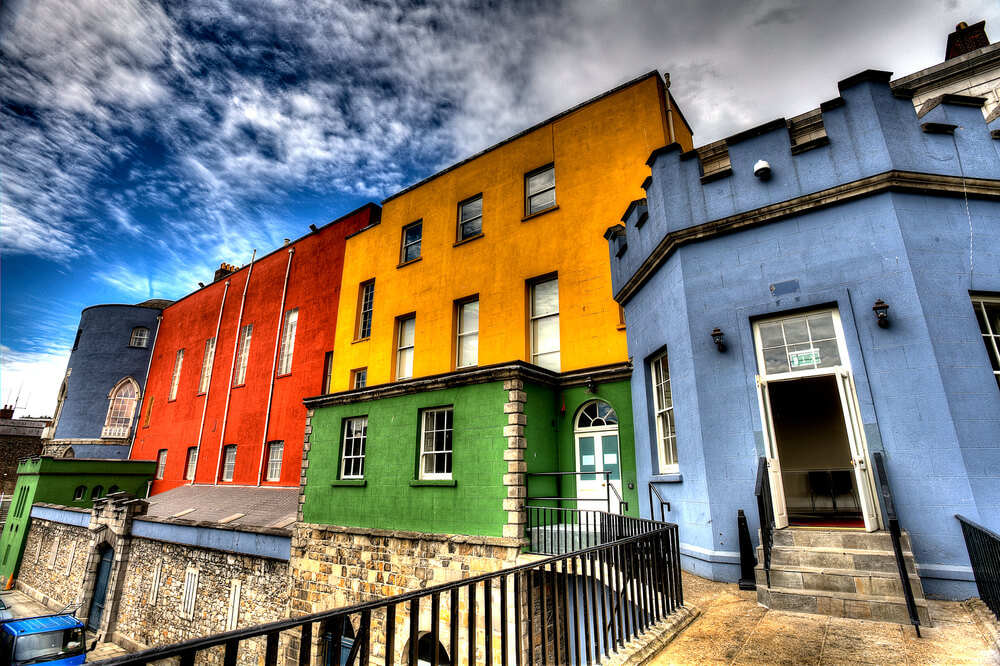
In July average temperatures are about 12-20 °C (54-68 °F) in Dublin city. You could expect to have rainfall on about 10 days, but this of course is just an average and each year can be different. As with every month in Ireland, bring layers and waterproof clothing to make sure that you are covered for all eventualities!
July is a popular time to visit Dublin, especially for visitors from the United States. The reasonably good weather, long summer days and wide variety of events and festivals make it a great time to visit Ireland’s capital city.
Hotels can be booked out well in advance, so book early to have the best selection.
Ireland in August
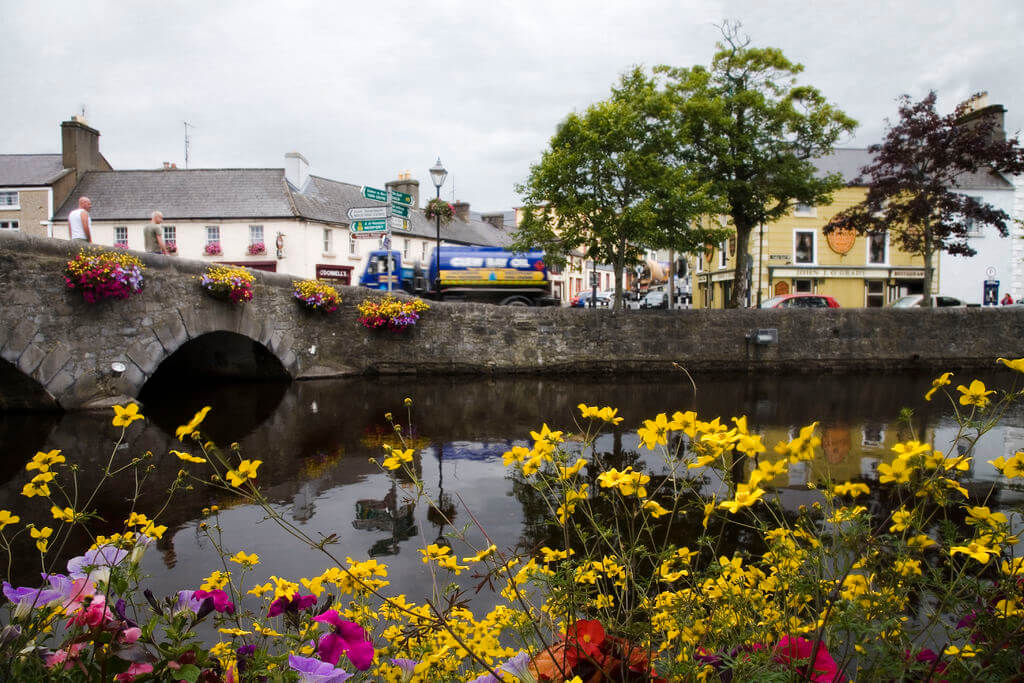
August tends to be the month in which most tourists arrive for their Ireland holidays. Visiting Ireland in August is a very pleasant time, with many different festivals, events and plenty of lively pub evenings with traditional music.
Towards the end of August, the nights start to feel a bit chillier and the long stretch in the evenings is noticeably shorter than the previous two months.
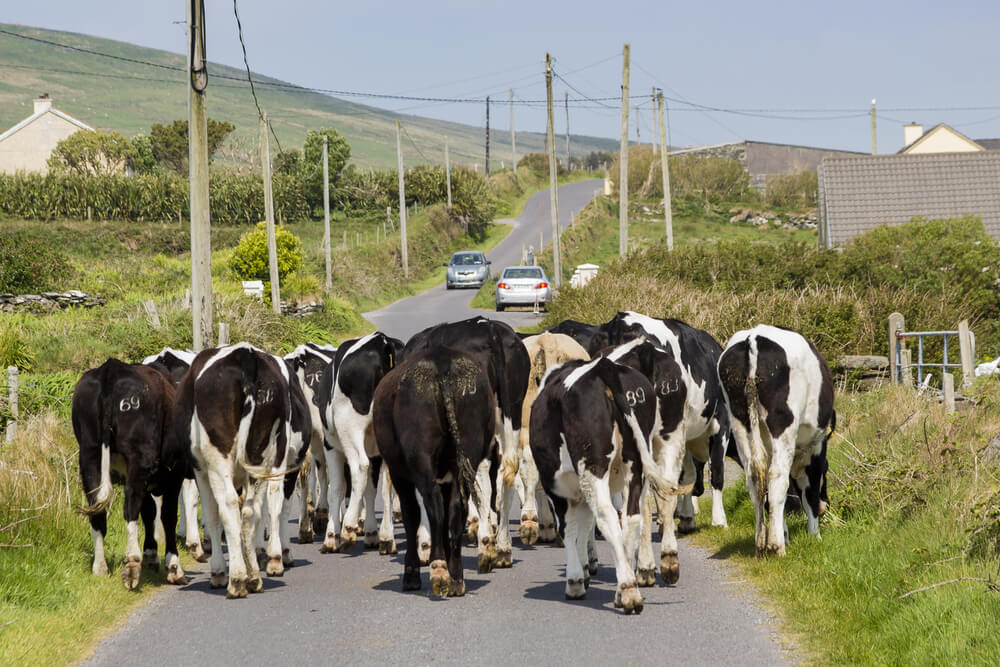
Peak tourist season results in increased traffic with many large and small group tour busses navigating the narrow, rural roads. The countryside roads often have view restrictions due to bends, hedges, farm machinery or occasionally farm animals. It is worth keeping this in mind when you are considering what type of vehicle to rent. Don’t forget that in Ireland you have to drive on the left.
Weather in Ireland in August
August is high season in Ireland and the warmer temperatures combined with long days attract lots of visitors worldwide. The average temperatures are between about 12-20 °C (54-68 °F) and by now the water temperature is also starting to rise (14-16 °C or 57-61 °F). Perfect for a refreshing dip in the sea!
The average rainfall increases a bit for the month of August in comparison to July, but this fluctuates each year.
The summer is a great time to travel along the Wild Atlantic Way or the Causeway Coastal Route in Northern Ireland. The popular stops along the routes tend to get busy at peak times of the day, regardless of the weather.
While the evenings do start to get noticeably shorter and cooler towards the end of August, there is still daylight well into the evening allowing you to maximise your Irish holiday.
Weather in Dublin Ireland in August
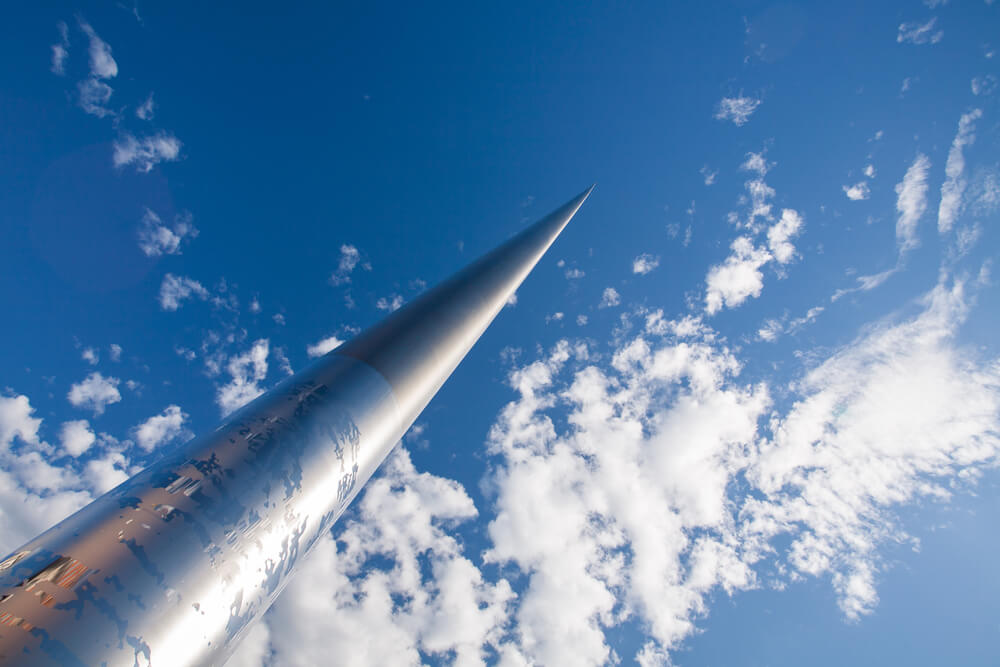
In Dublin, the weather in August tends to be pleasant. Average temperatures this month are about 11-19 °C (52-66 °F), which makes it an ideal time for a city break. Perhaps take a walking tour or just enjoy exploring the city without feeling too hot or cold, or hopefully wet!
On average, you can expect to encounter at least some rain on about 11 days during August, but this is just an estimate! You can never go wrong with layers and waterproofs when it comes to Irish weather, whatever time of the year.
Although Ireland is not particularly known for its sunshine, don’t forget to wear sunscreen when you are out and about on sunny days! For a pretty accurate weather forecast, you can check Yr .
Ireland in September
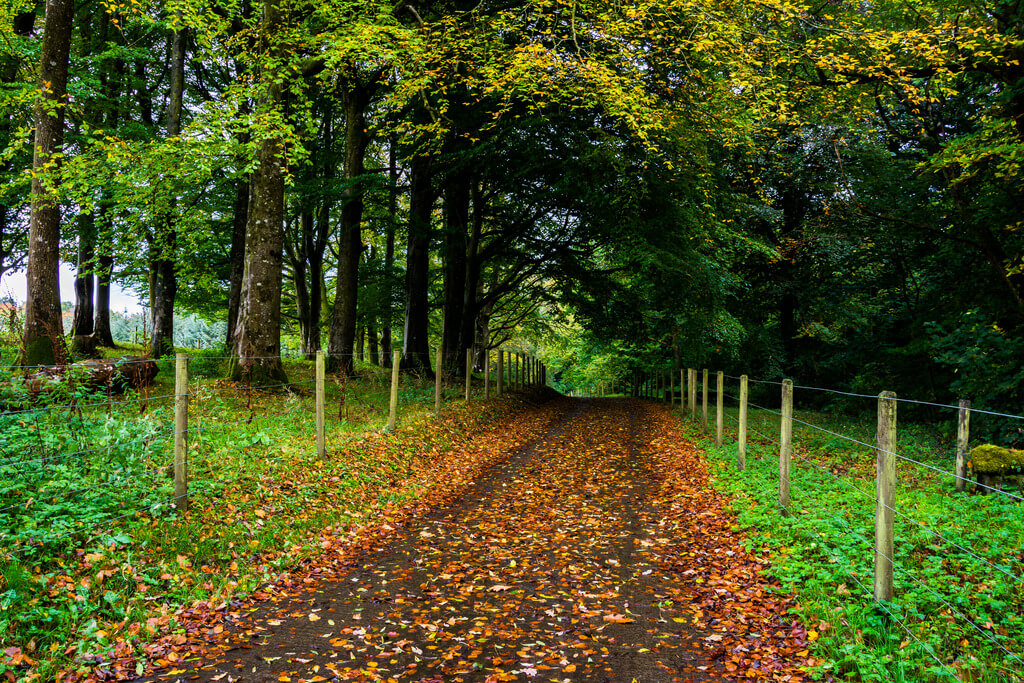
Visiting Ireland in September is an ideal vacation time. Fall has definitely started, but many of the benefits of the summer, such as warmer weather and longer evenings still linger to a degree. The evenings can be chilly, so make sure you bring some layers of clothing. There are fewer tourists, although it is still considered peak season.
Fall, or autumn as it is known in Ireland, is a great time to explore the landscape and take part in outdoor activities. Hiking in Ireland in September is particularly enjoyable with subtle changes in color visible on the landscape.
Key events to mark on your calendar for September the world renowned Lisdoonvarna Matchmaking Festival in County Clare and the 10-Day Waterford Harvest Food Festival .
Weather in Ireland in September
There is a noticeable change in the weather from August, but generally September can be a very agreeable month weatherwise. It is often not too hot or too cold, there are fewer tourists and the long daylight hours in the evening until about 8.00 p.m. means that you can get a lot out of the day.
The average temperature for September is about 13 °C (55 °F) and while the likelihood of rain (and wind) does increase slightly in comparison to the summer months, this time of the year can be a very enjoyable time for a trip to Ireland. Sea temperatures are also similar to August around max 16 °C (61 °F).
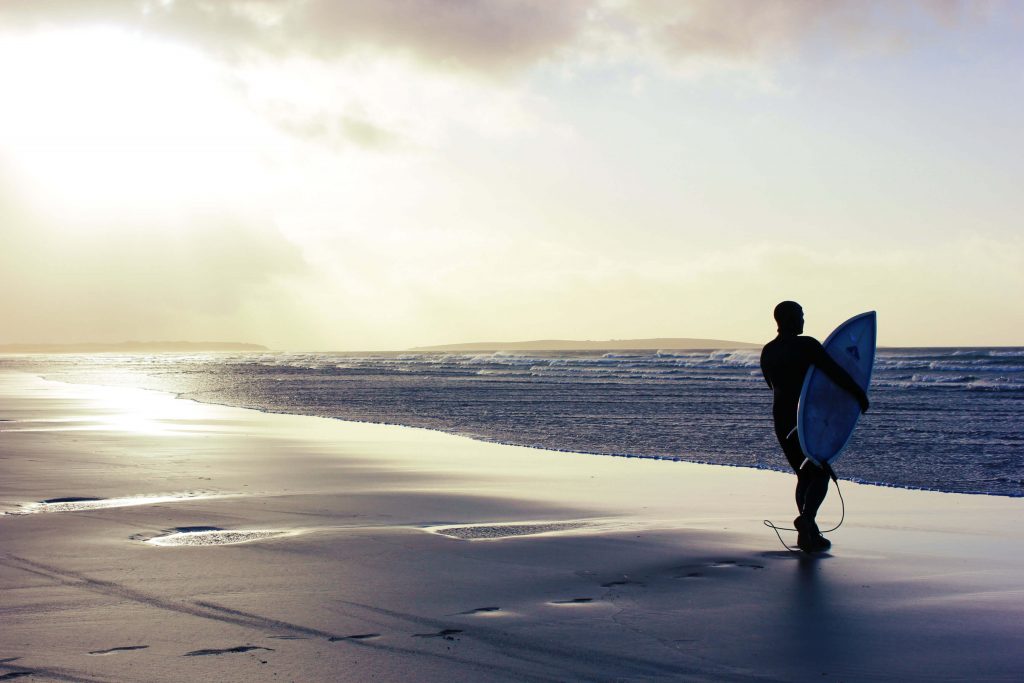
The leaves begin to change color and towards the end of the month you might encounter crisp autumnal days. The evening light around this time can be very beautiful. So watching an Irish western sunset along the Wild Atlantic way can be a memorable experience with the right conditions.
Weather in Dublin Ireland in September
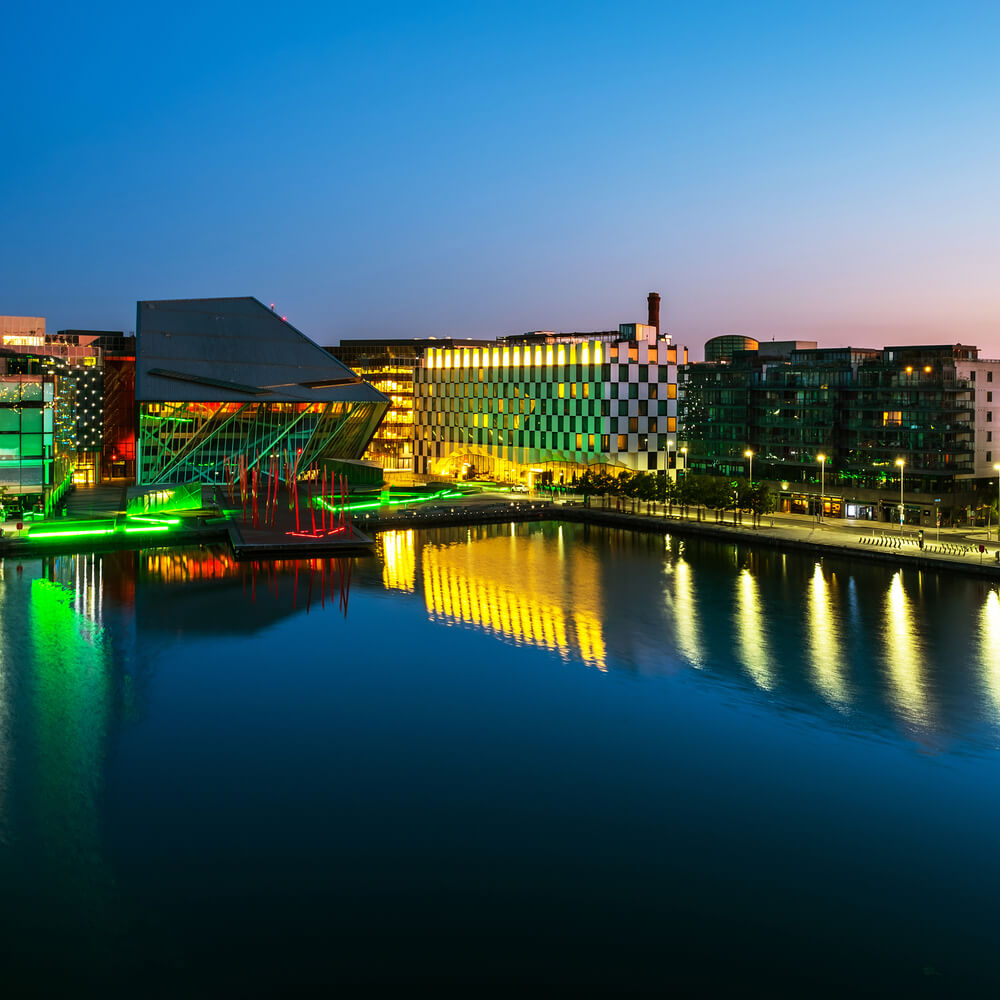
Dublin City is a lively tourist destination in September, as it is still a very popular time to visit and explore the city’s top sights including The Guinness Storehouse, Trinity College and Temple Bar (for itinerary ideas check out our 3-day itinerary for Dublin ).
The average temperature is about 13 °C (55 °F), so as well as your layers, it might be necessary to bring a jacket for the evenings if you plan on being outside a lot.
Some amount of rain is to be expected this month, so pack your umbrella and check out some of the many great indoor attractions on the wet days.
Longer day trips to parts of the Wild Atlantic Way or other further away destinations in Ireland and Northern Ireland are still possible this month. I would be less keen to do such trips later in the year due to the more limited daylight levels, generally poorer weather and the amount of time spent traveling.
On the other hand… you can always strike it lucky with a tour on a fine, sunny day in October, November or even December!
Ireland in October
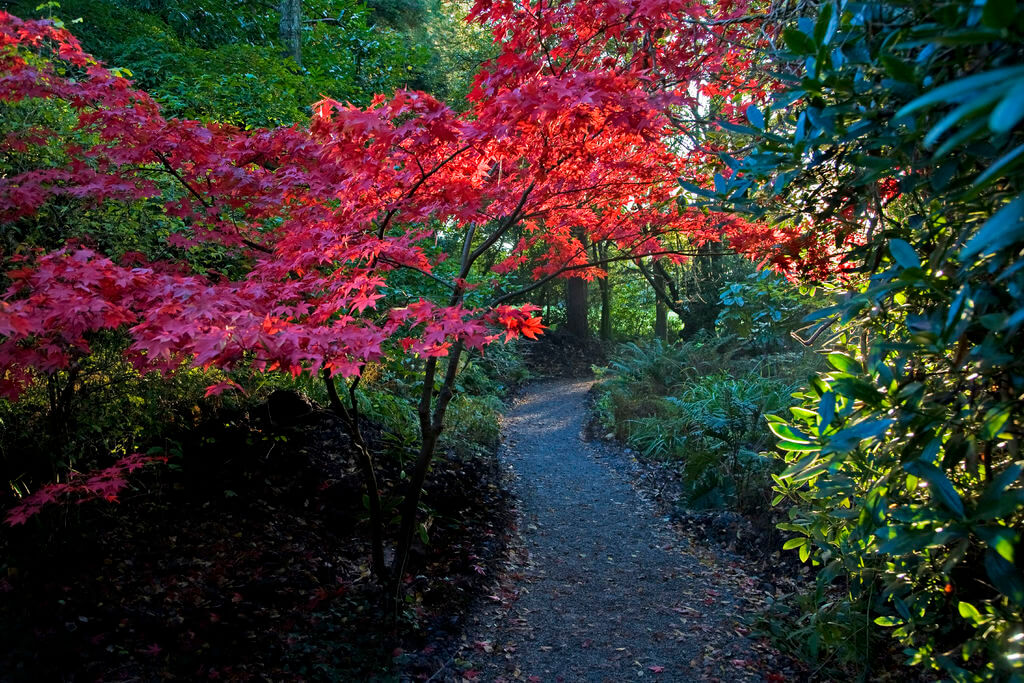
October is a nice time to travel to Ireland and is a good alternative for anyone planning a budget trip or wanting to avoid crowds. The weather can be more mixed, and you should pack warmer layers and a waterproof jacket is an absolute must. In the best case, you will encounter settled weather with crisp autumnal days, in the worst case, at least you will have a waterproof jacket!
Visiting Ireland in October is considered to be the “shoulder season”, which may mean you get better deals on hotels and car rental during your trip. There are still dozens of festivals taking place across the country, including the Dingle Food Festival .
Why not get in the mood for Halloween (an ancient Celtic festival of Samhain thought to originate in Ireland) and explore where Bram Stoker got his inspiration for Dracula in St. Michan’s Crypt among other weird things in Dublin? (Our post on unusual sites in Dublin covers it all!)
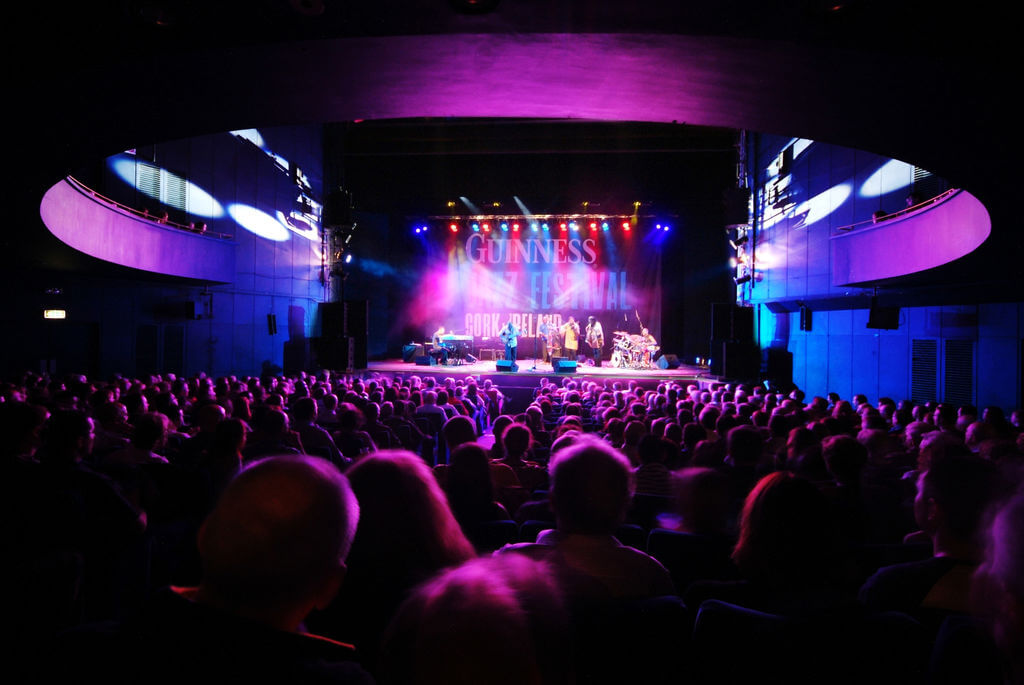
Weather in Ireland in October
Ireland around this time of year begins to experience a dip in the average temperatures with most days ranging between 7-14 °C (45-57 °F). Rainfall also increases around October, as do the number of days where you can expect rainfall.
Planning an Ireland travel trip during October can be a good idea, if you don’t mind the shorter daylight hours and more mixed weather forecast. On the plus side, you will encounter less queues and may get better deals than earlier in the season.
Travel tips: There is a public holiday (bank holiday) on the last Monday of October, when banks and other services will close. Winter time also starts on the last Sunday of the month, which means you technically gain an hour. However, it gets dark in the evenings around 5.00 p.m.
Weather in Dublin Ireland in October
With a slight chill in the air this time of year, October is the perfect time to start discovering the many great museums, galleries and other superb indoor attractions that Dublin has to offer.
With an average temperature of about 11° C, you should find sightseeing on such days quite manageable, once you wrap up a little. Some potential visitors to Ireland are discouraged by the thought of rainy, windy weather in October. However, it is worth noting that we do occasionally have really glorious sunny days, particularly towards the start of the month.
Sometimes the weather in October could be better than June or July. It all comes down to luck and being well prepared with the right clothes for the season!
Why not try an early morning walk on one of the crisp autumnal days and enjoy the colorful leaves along the Grand Canal or spend some time in one of the many parks? It can be a magical part of any holiday!
Ireland in November
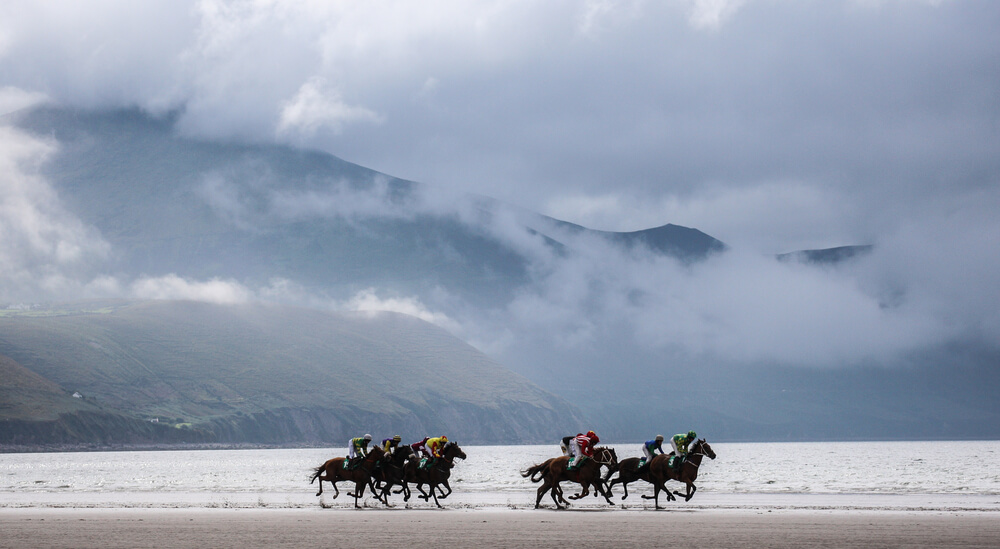
Generally speaking, the weather in November tends to be a bit wintery. It is certainly colder than the previous months and rainfall also increases. However, glorious cold calm days in November are also a possibility. It is best to prepare for all eventualities with multiple layers and waterproof clothes.
The main tourist attractions remain open throughout the year, but some of the smaller attractions may have restricted opening hours or may even close for the winter.
The thought of colder or wetter weather should not discourage visiting Ireland in November. There are multiple other great ways to spend your time indoors, such as great museums, shops, theaters, events and pubs that will make any Ireland family itinerary worthwhile.

Weather in Ireland in November
November in Ireland is chilly with average temperatures falling between about 4-10° C (39-50 °F). The days are reasonably short with long evenings, perfect to settle down beside a roaring fire perhaps with an Irish stew and a pint of Guinness to warm you up!
In terms of tourism, November is a quiet month. The colder, wetter and generally windier weather deters many tourists from planning a holiday at this time. However, those who are willing to travel are likely to experience better hotel and airfare deals on their trip and can even experience some of the early Christmas season events towards the end of the month.
Storm swells and crashing waves along the Wild Atlantic Way coastline can be absolutely mesmerizing at this time of year.
Weather in Dublin Ireland in November
The weather in November may not entice you to do too much exploring outside with average temperatures between 5-10 °C (41-50 °F). The low temperature, general wintery weather and greater rainfall makes this month ideal for indoor attractions, cosy cafés and lively pubs. Luckily Dublin is known for having all of these things!
Visiting Ireland in November for a few days can be great fun, especially later in the month when the Christmas festivities, markets, decorations and shopping really start. That is when the atmosphere in the city begins to take on a special seasonal buzz.
For an extra special trip and a way to spend the long evenings, why not try a luxury stay in a castle hotel, such as the 5-star Luttrellstown Castle Resort or the 4-star Clontarf Castle hotel (not far from Dublin Airport)?
Longer day trips from Dublin city at this time of year would only be advisable if the weather forecast is expected to be really good .
Ireland in December
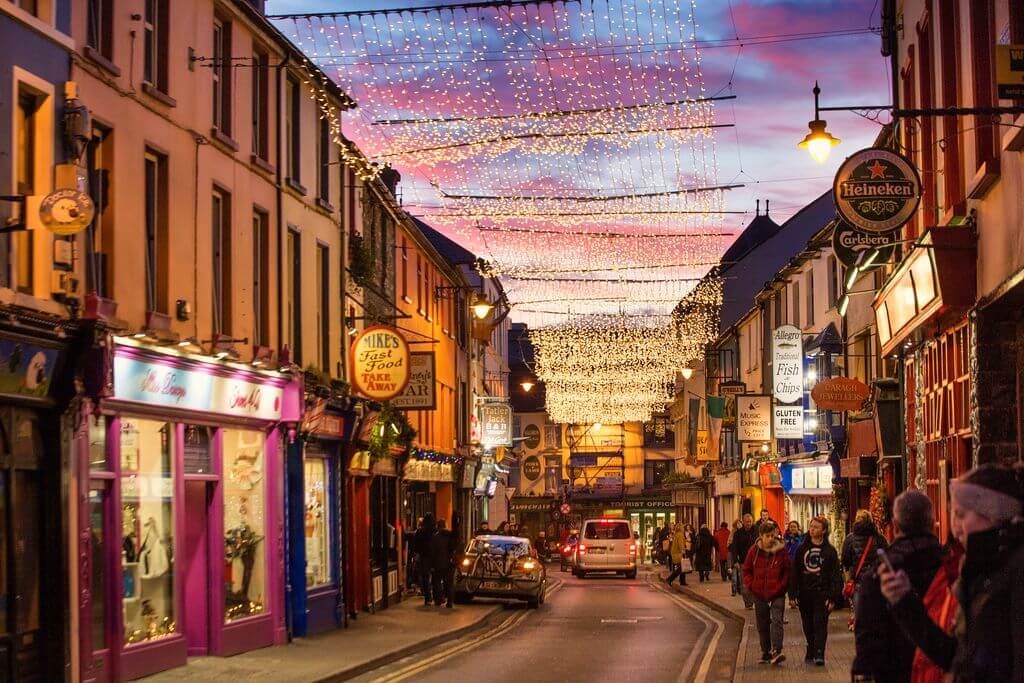
December in Ireland is perfect for anyone who enjoys the Christmas ambiance without the snow (usually!). While the average temperature in December is 6 °C (43 °F), it only occasionally snows and when it does, it usually doesn’t stay on the ground for too long.
Although Ireland in winter does not usually boast of the snowy winter wonderland of other European countries, that is not to say that the Christmas markets are any less festive and fun than anywhere else!
The Cliffs of Moher in December, as well as many other of the magnificent destinations along the Wild Atlantic Way, can be particularly haunting and memorable in December.
Weather in Ireland in December
How cold is Ireland in December? Ireland is chilly, but not extremely cold in December with an average temperature of about 6 °C (43 °F). There can be some cold spells that might bring some snow, but more often than not Ireland does not experience a white Christmas.
December is a month where you should expect plenty of cloud cover and the usual wintery rain and wind. The occasional winter storm will also blow through. If you strike it lucky with the weather you might see the northern lights! (Find out more about the northern lights in Ireland here.)
At this time of year, most people are so enchanted by Christmas, city light displays and festive markets that they are not too concerned with the weather forecast. If you encounter dry days, you can count yourself lucky. Otherwise just wrap up well and enjoy the atmosphere.
Weather in Dublin Ireland in December
In December the weather in Dublin is quite typical for Ireland in winter. You should expect a few wet days and need to wrap up, as the average temperatures are about 3-8 °C (37-46 °F). Overcast days with plenty of cloud cover are the norm, but sunny days exceptions do also occur from time to time.
Even if it is cold, wet and windy outside, it is still worth donning your layers and waterproof clothes and visiting the Christmas lights and the Christmas markets that Dublin city has to offer this month.
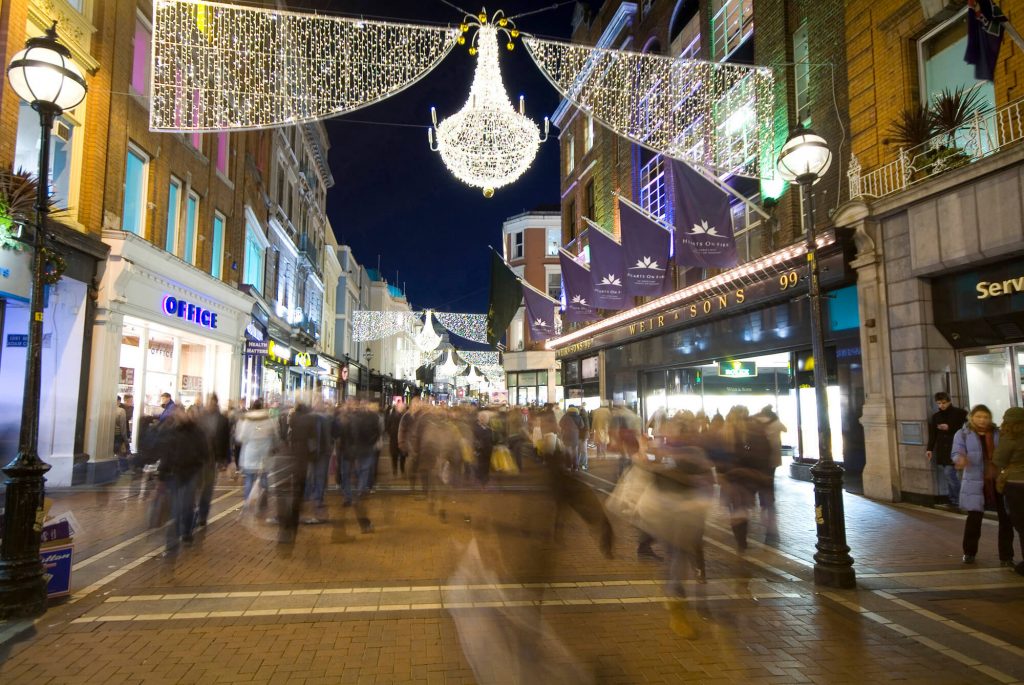
Christmas and New Year are popular times for tourists to travel to Ireland and also many expats living abroad try to make it home for the celebrations. This means that Dublin Airport and the nearby hotels can be very busy. If the weather forecast does take a turn for the worse, plan ahead and make sure that you are in plenty of time for your departure, as it can sometimes get a bit chaotic.
Our Day Trips from Cork and Best Things to do in Cobh might give you some ideas for your planning your itinerary and films buffs, check out our Harry Potter and Star Wars filming location posts.
The Best Time to Visit Ireland for Weather, Safety, & Tourism
The best times to visit Ireland for ideal weather are
June 11th to September 30th
based on average temperature and humidity from NOAA (the National Oceanic and Atmospheric Administration). Read below for more weather and travel details.
Ireland Travel Guide
Temperature.
- Perceived Temperature
- Rain and snow
- Humidity and wind
- The busiest and least popular months
- Overall travel experience by time of year
Other Ireland Travel Info
Weather in ireland.
Average temperatures in Ireland vary somewhat. Considering humidity, temperatures feel cold for about half of the year and otherwise nice with a chance of rain or snow throughout most of the year. The area is less temperate than some — in the 20th percentile for pleasant weather — compared to tourist destinations worldwide. Weeks with ideal weather are listed above . If you’re looking for the very warmest time to visit Ireland, the hottest months are July, August, and then June. See average monthly temperatures below. The warmest time of year is generally late July where highs are regularly around 65.3°F (18.5°C) with temperatures rarely dropping below 54.3°F (12.4°C) at night.
Ireland Temperatures (Fahrenheit)
Ireland temperatures (celsius), “feels-like” temperatures.
The way we experience weather isn’t all about temperature. Higher temperatures affect us much more at higher humidity, and colder temperatures feel piercing with high winds. Our perceived temperatures factor in humidity and wind chill to better represent how hot or cold the day feels to a person.
Ireland Perceived Temperature (F)
Ireland perceived temperature (c), average ireland temperatures by month.
Daily highs (averaged for the month) usually give the best indication of the weather. A significantly lower mean and low generally just means it gets colder at night.
Show Fahrenheit
Show celsius, precipitation (rain or snow).
If dry weather is what you’re after, the months with the lowest chance of significant precipitation in Ireland are April, September, and then March. Note that we define “significant precipitation” as .1 inches or more in this section. The lowest chance of rain or snow occurs around mid April. For example, on the week of April 16th there is 1 day of precipitation on average. By contrast, it’s most likely to rain or snow in mid January with an average of 3 days of significant precipitation the week of January 15th.
Chance of Precipitation
The graph below shows the % chance of rainy and snowy days in Ireland.
Snow on the Ground
The graph below shows the average snow on the ground in Ireland (in).
Average Rain and Snow by Month
Show inches, show centimeters, humidity and wind.
Ireland has some extremely humid months, and high humidity throughout the year. The least humid month is April (72.6% relative humidity), and the most humid month is November (81.7%).
Wind in Ireland is usually moderate . The windiest month is January, followed by December and November. January’s average wind speed of around 12.2 knots (14.1 MPH or 22.6 KPH) is considered “a moderate breeze.” Maximum sustained winds (the highest speed for the day lasting more than a few moments) are at their highest in early to mid January where average top sustained speeds reach 20.3 knots, which is considered a fresh breeze.
Relative Humidity (%)
The graph below shows the average % humidity by month in Ireland.
The graph below shows wind speed (max and average) in knots.
Average Wind Speeds
Show wind speeds.
All wind speeds are in knots. 1 knot = 1.15 MPH or 1.85 KPH.
Show Relative Humidity by Month
Is it safe to travel to ireland.
Our best data indicates this area is generally safe. As of Dec 04, 2023 there are no travel advisories or warnings for Ireland; exercise normal security precautions. Check this page for any recent changes or regions to avoid: Travel Advice and Advisories . This advisory was last updated on Nov 28, 2023.
The Busiest and Least Crowded Months
The busiest month for tourism in Ireland is July, followed by August and January. Prices for hotels and flights will be most expensive during these months, though you can save if you purchase well in advance. Tourists are unlikely to visit Ireland in November. Those willing to visit at these times will likely find it the least expensive month.
Estimated Tourism by Month
Most popular months to visit, overall ireland travel experience by season, spring (march through may).
Humidity and temperatures combine to make this season feel moderately cold. Highs range from 61°F (16.1°C) and 48.9°F (9.4°C) with warmer temperatures in the later months. Rain is somewhat common with 6 to 8 days of significant precipitation per month. Spring is the second busiest for tourism, which makes it a good time for those looking for things to do.
Summer (June through August)
The middle-year months have comfortably cool weather with high temperatures that are brisk. These months see moderate precipitation with 7 to 10 days of precipitation per month. June – August is the busiest season for tourism in Ireland, so lodging and other accommodations may cost more than usual.
Fall (September through November)
Fall daily highs range from 62.8°F (17.1°C) and 48.1°F (8.9°C), which will feel chilly given the humidity and wind. It rains or snows a significant amount: 6 to 10 days per month. Tourism is the slowest during these months due to the weather, so hotels may be affordably priced.
Winter (December through February)
Weather is too cold this time of year in Ireland to be enjoyable for warm weather travelers. The average high during this season is between 49°F (9.4°C) and 46.4°F (8°C). On average, it rains or snows a great amount: 8 to 11 times per month. These times of year are fairly slow with tourists.
Best Times to Travel › Ireland
Similar Destinations
- Birr, Ireland
- Portumna, Ireland
- Ballinasloe, Ireland
- Athlone, Ireland
- Nenagh, Ireland
- Roscrea, Ireland
- Kinnitty, Ireland
- Moate, Ireland
- Roscommon, Ireland
- Loughrea, Ireland
Popular Destinations
- William F Hayden Green Mountain Park, the United States
- Kyoto, Japan
- Johor Bahru, Malaysia
Best time to visit

Ireland is a land full of extraordinary landscapes from the Ring of Kerry in Southern Ireland to the historic and electric hub that is Dublin, and because of this, the best time to explore them is when the weather is at its warmest and driest. This usually means that the months of summer (June, July, and August) are considered the best time to travel to Ireland. While you might enjoy nice weather, summer is also recognized as the peak season so you can expect crowds of travelers at popular destinations and increased accommodation/activity prices.
If you want to avoid the crowds, try traveling in 'shoulder' seasons such as spring (March, May, and April) or autumn (September, October, and November). Yes, the weather might not be as good (you should always be prepared for rainfall) but at least there won't be as many travelers exploring the same landscapes and cities as you are.
Best for: St Patrick's Day Celebrations, hiking, cycling, and exploring natural landscapes.
Spring in Ireland is one of the more magical seasons to visit as the rolling, green fields and scenic valleys come alive with the light showers and warm sunshine that spring brings. Every color is heightened during this season, so expect lots of emerald greens and vibrant reds, blues, and yellows as wildflowers bloom and wilderness areas soak up the rain. You'll even get to spot lambs and baby cows as they frolic in the fields to make your journey through the Irish countryside that much more special.
As summer is considered to be the peak season, spring sees a lesser number of travelers, meaning popular cities and natural landmarks remain quiet until the month of June. But, the weather is similar to that experienced in summer with slightly cooler temperatures and long daylight hours so it's still a perfect time to travel to Ireland if you plan on spending the majority of your time outdoors.
Best for: enjoying traditional Irish meals, exploring World Heritage-listed sites, going to the beach, and general sightseeing.
Summer is the peak season to travel to Ireland for one main reason: the weather during the months of June, July, and August is the best it will be all year. With around 16 - 18 hours of sunlight every day and temperatures that hover around 68°F, there is no better season for exploring all the natural beauty Ireland has to offer. If you're traveling to Ireland in summer, the only downside is that thousands of travelers worldwide are doing the same so you can expect crowds in popular cities and queues at famous landmarks. During this time, accommodation prices will increase, and activities will start to book out so make sure you plan in advance to avoid disappointment.
Whether you feel like digging into a heaping bowl of hearty lamb stew, visiting unbelievable sites such as the Cliffs of Moher and Wicklow Way , or trying to catch as much sun as you can by laying out on a beach in Brittas Bay, summer in Ireland has a little something for everyone.
Best for: whale watching, Halloween celebrations, harvest festivals, and going on countryside walks.
Similar to spring, fall is considered to be one of the best seasons to visit Ireland (after summer) because it's relatively crowd-free and enjoys reasonably pleasant and mild weather. There are also many festivities during this time with the celebration of Halloween, as well as various harvest, food and other entertainment festivals. Fall also brings the ability to change the countryside's color, with leaves turning red, orange, and brown, making for some pretty stunning walks through national parks, forests, and other wilderness areas.
You will need to rug up though (think thermal clothing) as temperatures can lower to 41°F but generally sit at around 54°F. However, November is generally the wettest month out of the year so be sure to pack waterproof or resistant clothing and even a collapsible, travel-sized umbrella.
Best for: Christmas markets, wandering through cities, stargazing, and watching the Northern Lights.
While winter doesn't experience the best weather, it's still a really magical and breathtaking time to travel to the Emerald Isle. From the festive Christmas markets full of decorative trinkets in December and wandering through snowy landscapes throughout January and February to staring up at the star-filled sky and catching a glimpse of the colored curtains of light known as Aurora borealis, there's no shortage of incredible things to do and spectacular things to see.
Even though the days are shorter, the longer nights mean magnificent sunrises and sunsets, as well as the best chance to see the Northern Lights if you're visiting the northern end of Ireland. Clear skies in winter also make for perfect stargazing conditions but make sure you rug up because temperatures can drop to 39°F. You'll also experience fewer crowds in winter and more reasonable accommodation and activity prices.
Let's create an exclusive trip for your group.
England or Ireland? Where to go on your next trip
Scotland or Ireland: which country should you travel to next?

The Best Time To Visit Ireland: A Guide For Travellers

- March 19, 2020
- Category: Ireland
Ireland is a country worth visiting all year round so trying to narrow down the best time to visit Ireland will often depend on your itinerary and budget.
Regardless of whether you are interested in dramatic landscapes, traditional music , fantastic outdoor activities, vibrant cities or picturesque little villages, Ireland has something to offer you whenever you travel!
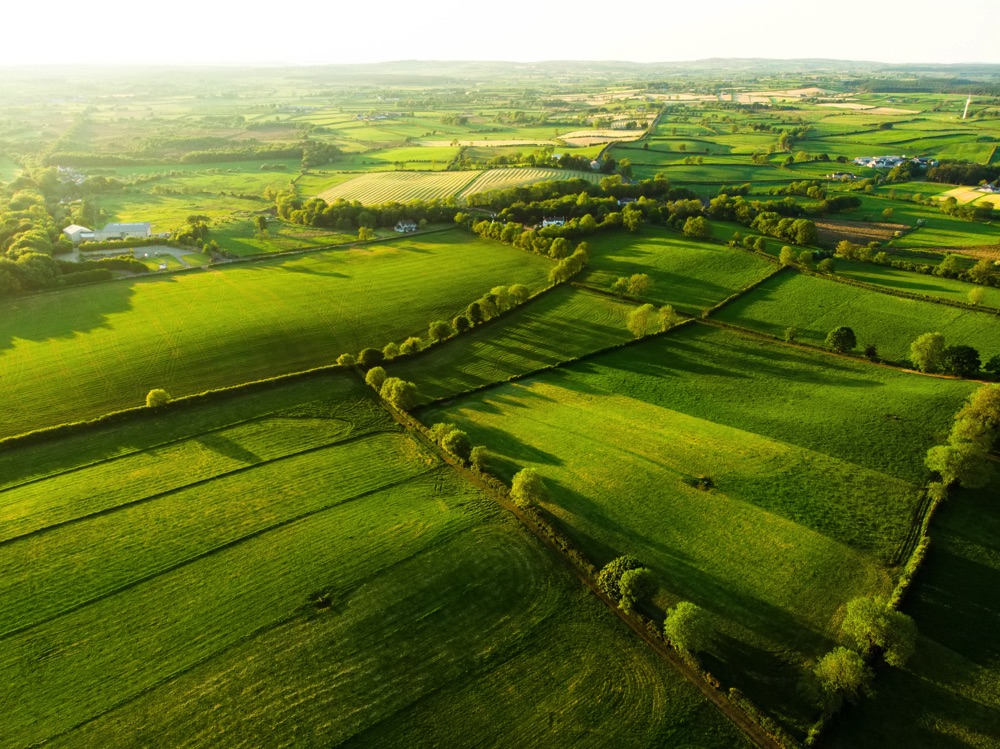
As a native of Ireland who has explored this fabulous country in all seasons, I can give you an insider’s view of when to go to Ireland.
Here it goes. The best time to visit Ireland!
In This Post:
Peak Season (June – August)
Shoulder season (april – may, september – october), off-season (november – march), best time to visit ireland for beaches, best time to travel to ireland for cities, best time to go to ireland for cheap prices, the overall best time to visit ireland, ireland by month, now you know when to visit ireland.
In Ireland, the peak season is during the summer months of June, July and August.
While Ireland is not particularly known for its good weather, during these months the weather generally tends to be settled and not too wet.
The long summer days are also a great advantage at this time of year.
From about mid-June, the tourist season starts to get quite busy. Roughly 11 million tourists travel to Ireland each year, with the majority of them visiting between June and early September.
Ireland is a popular destination not only for overseas travellers, but domestic tourists as well. Keep this in mind when you are planning your accommodation and itinerary.
Prices for airfares and accommodation are usually highest during this season.
Even though it is a small island, there is plenty of room for everyone!
One general travel tip for these busier months is to visit popular tourist attractions, such as the Cliffs of Moher in County Clare or Glendalough in County Wicklow, as early or as late in the day as possible. This way, you avoid the majority of the crowds.
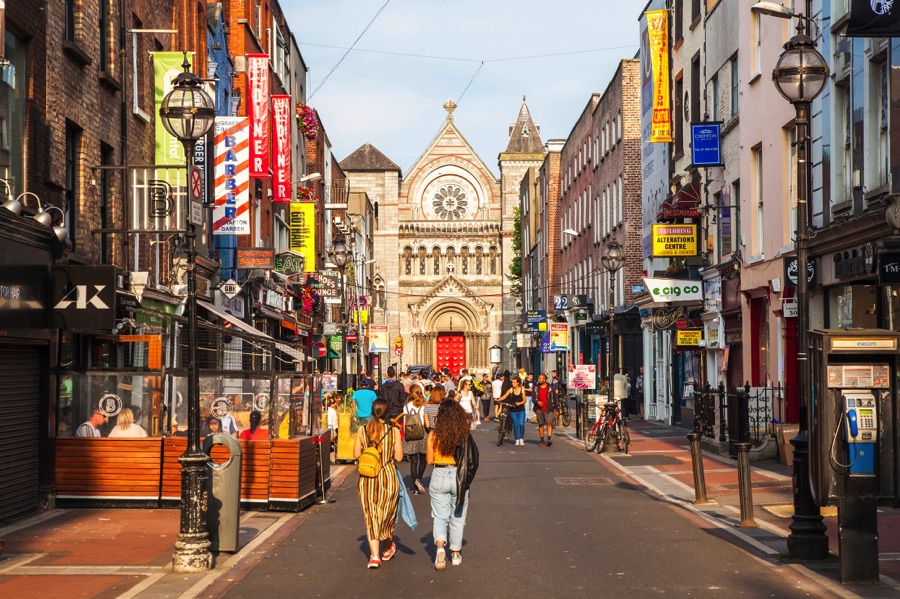
In my opinion, this is definitely the best time to go to Ireland and I recommend travelling to the Emerald Isle during either April, May, September to about mid-October.
The weather during these months is often pleasant, although not as warm as during the summer months.
There is also plenty of daylight at this time of year, which is a major plus for sightseeing and activities.
When to travel to Ireland during shoulder season depends largely on personal preference, but I would recommend May as being all-round the best month to travel to Ireland.
Many tourists travel to Ireland during the peak season and miss out on the benefits of the shoulder season.
Not only are the prices at this time of year usually lower than during the peak season, but there are also fewer tourists, shorter queues for the bigger attractions and less traffic on the narrow country roads.
During the shoulder season months, there are several big festivals that draw visitors to the cities and small towns around Ireland including Fleadh Nua , the traditional music and dance festival in Ennis at the end of May, and the Galway Races in September.
An off-season holiday in Ireland during the months of November through to about March certainly has financial benefits . There is a good likelihood of bargains on airfare and accommodation — if you’re on a budget, the offseason is the best time to visit Ireland for sure.
One thing to keep in mind is that the days are short with only 7.5 hours of daylight in December and the weather is often very mixed and wintery.
There are benefits of travelling during the winter months though: One highlight is seeing the Nort hern Lights in Ireland . This can be a memorable and beautiful spectacle.
When the weather is poor, there are many excellent indoor attractions on offer that will keep all kinds of tourists entertained.
In Dublin there are many things to do when it’s raining , including the Guinness Storehouse , EPIC The Irish Emigration Museum and the National Gallery of Ireland, just to mention a few.
The numerous museums, castles and distilleries spread around the rest of the country are also very worth visiting, each giving unique insights into Irish culture and heritage.
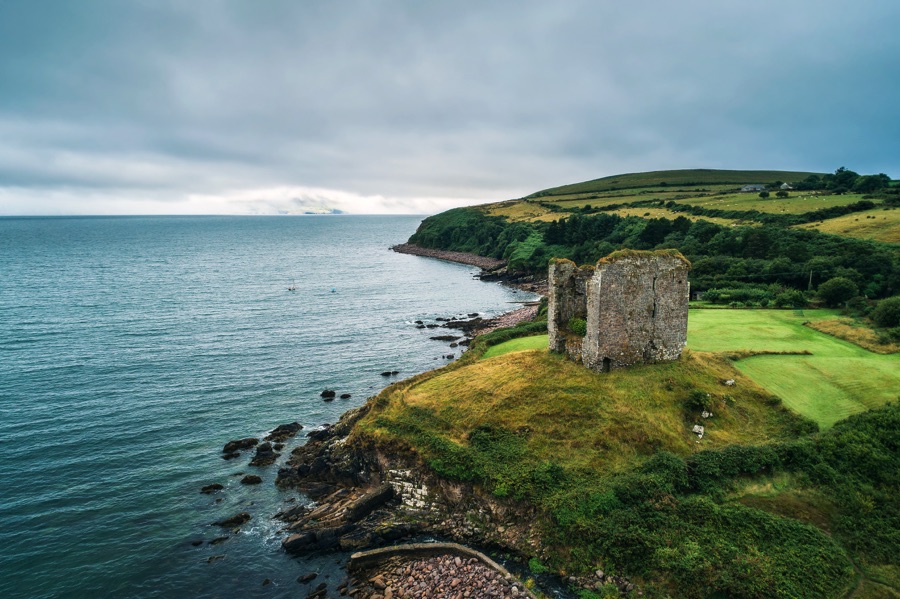
If you are trying to plan when to visit Ireland, it is worth mentioning that the days around Christmas, New Year and St. Patrick’s Day (March 17th) are not considered to be offseason.
Prices and demand for flights and hotels rise accordingly during these times.
The best time to go to Ireland for beaches is in the summer if you want to take part in any water activities.
In Ireland the water temperature reaches a maximum of about 18 °C (64 °F) during the summer months. Be prepared to feel cold in the water all year round!
Personally, I love to walk on Irish beaches during winter. The wild rugged landscape, crashing waves and usually empty beaches are stunningly beautiful.
Stradbally beach on the Dingle Peninsula or Inchydoney Beach in County Cork are perfect for a winter saunter!
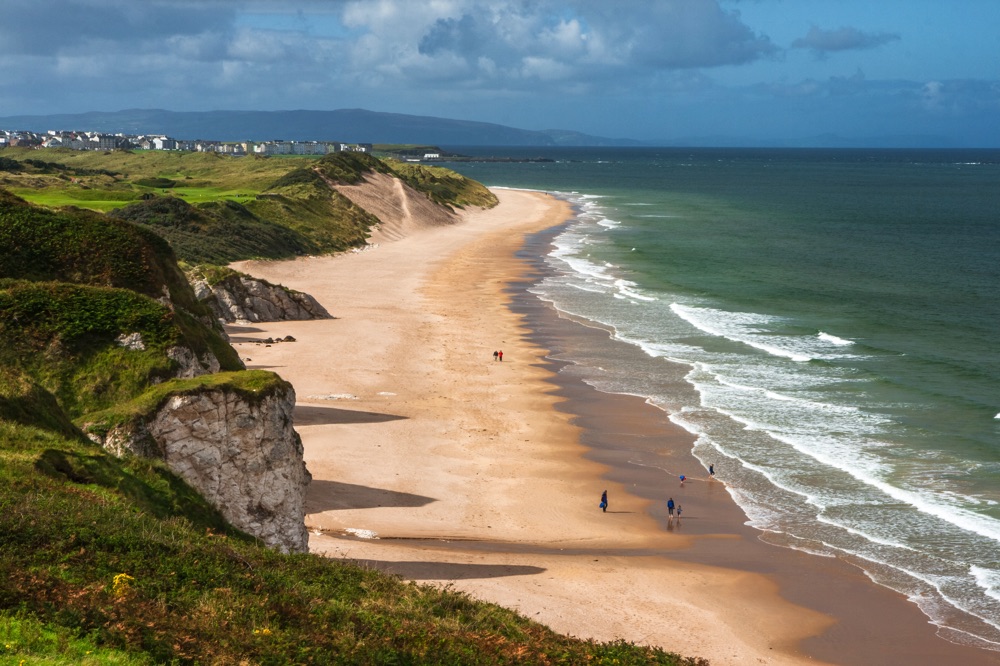
If you are planning a city break, then the best time to visit Ireland is during the shoulder season of April, May, September and early October.
In spring, the parks in the cities burst into life. In autumn, these parks filled with colourful foliage are the perfect escape from a bustling city!
Fewer tourists, shorter queues, better prices and often good weather are the main advantages of visiting Irish cities during this time.
If you are trying to decide when to go to Ireland based on your budget, then off-season is definitely the best option. January and February are probably the best months to avail of cheap holidays in Ireland.
If you plan on spending most of your holiday sightseeing and visiting indoor attractions, then this time of year might be best for you. The lively music in the pubs will keep any boredom at bay!
The weather in January and February is generally wet and wintery and the days are still quite short, so outdoor activities in your itinerary should be kept to a minimum during this time.
May is the best time to visit Ireland.
This month experiences many of the advantages of summer months, such as warmer weather and the days are longer.
You are also likely to encounter slightly cheaper prices, better availability of accommodation and of course, fewer tourists. This makes visiting major attractions much more enjoyable.
For those of you interested in hiking , May is also the best time to travel to Ireland. There are many scenic walks and strenuous hikes around Glendalough in Wicklow National Park, which are well worth checking out at this time of year.
It is possible to visit Glendalough as a day trip from Dublin , making it the perfect short escape from the capital city.
One special area to visit during the month of May is the Burren in County Clare. This unusual limestone landscape is a UNESCO GEO Site and is well known for its biodiversity, especially its superb spring flowering species.
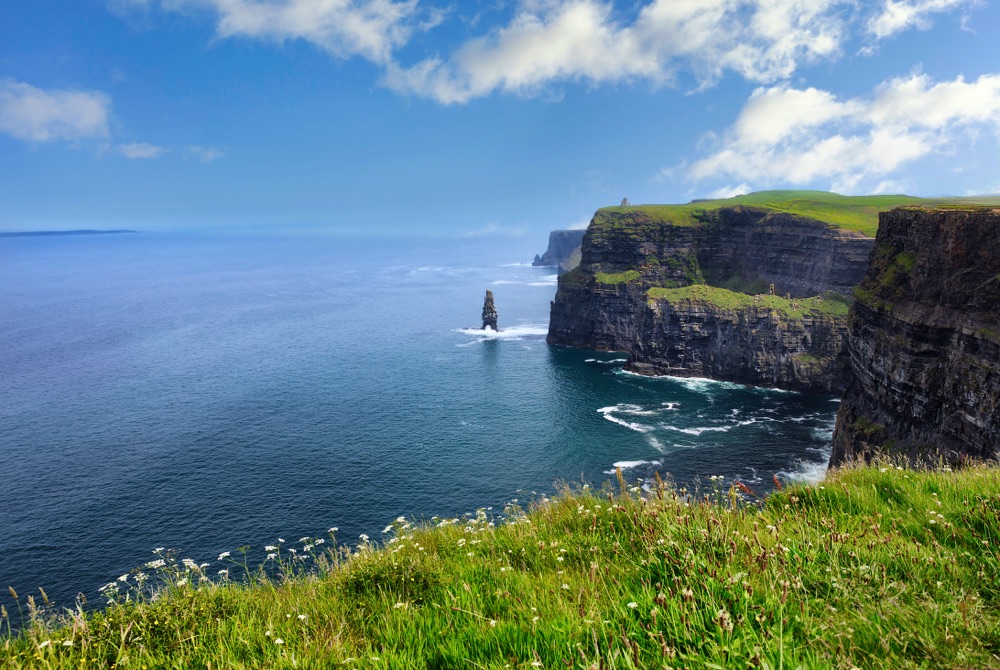
Ireland in January
You can expect wintery weather in Ireland in January. The temperatures are low, about 2-8 °C (36-46 °F) so make sure you wrap up warm with plenty of layers.
Plan city breaks and indoor attractions for your holiday in Ireland in January.
Ireland in February
Ireland in February is quite similar to January weatherwise with plenty of rain and wind. Occasionally, there might be some snow during this month, but it is usually just a light sprinkling that does not stay on the ground for very long.
As it is off-season, there might be some good discounts in Ireland in February regarding hotels and car rentals.
Ireland in March
Temperatures tend to rise slightly in Ireland in March, but the weather can be very unpredictable. Generally, the weather improves a bit later in the month.
Around March 17th, the St. Patrick’s Day celebrations take place all over the country. People travel to Ireland in March from all over the world to attend these festivities.
Ireland in April
Spring is in the air in Ireland in April. The weather is still mixed but tends to consist of showers rather than constant rain. Temperatures are also continuing to increase with the average temperatures of about 4-12 °C (39-54 °F).
Ireland in April is a lovely time of year to explore nature with many spring flowers to be seen in the parks.
Ireland in May
May is probably the best time to visit the country. The temperatures are cool, but pleasant 7-15 °C (45-59 °F) and the number of daylight hours is still increasing.
Several festivals take place in Ireland in May such as the Burren Slow Food Festival , which focuses on sustainability.
Ireland in June
Long summer evenings and warm temperatures 10-18 °C (50-64 °F) characterise Ireland in June. It is the perfect month for outdoor activities and road trips, so try to plan your itinerary accordingly.
Don’t miss out on the highly entertaining James Joyce Bloomsday Celebrations in Dublin around June 16th! It is one of the main events in Ireland in June.
Ireland in July
The peak tourist season is well underway in Ireland in July. The weather is generally good with average temperatures of about 12-20 °C (54-68 °F) to be expected.
School children have holidays in Ireland in July, so be aware of more domestic tourists and book your accommodation in advance.
Ireland in August
The temperatures in Ireland in August are still considered warm, but the light in the evenings fades noticeably earlier by about mid-August.
Ireland in August is a popular time for road trips and there can be busy tourist traffic on some of the smaller country roads, such as the on the Ring of Kerry .
Ireland in September
Ireland in September heralds the real start of autumn. The days are a little cooler, but generally still very pleasant 10-17 °C (50-63 °F). The evenings can be chilly, so pack an extra layer or two if you plan on being outside.
Road trips in Ireland in September can be especially rewarding as the landscape starts to change to more autumn colours.
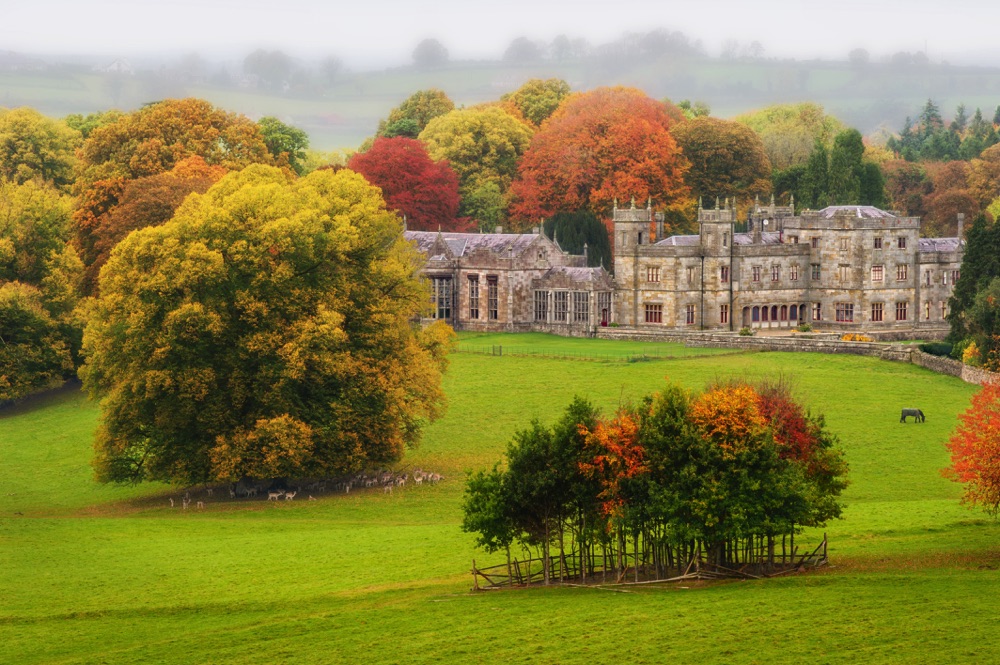
Ireland in October
Ireland in October can be hit or miss. Early October can still have nice weather, but generally, the temperatures drop 7-14 °C (45-57 °F) and the amount of rain increases across the country during this month.
Halloween is a popular celebration in Ireland in October. The origins of the festival date back to the Celtic festival of “Samhain”, which means the end of summer and the beginning of harvest season. Learn more about the weather in October in our post here .
Ireland in November
Ireland in November is cool 4-10° C (39-50 °F), often quite wet and the days are reasonably short.
You can sample the beginning of the Christmas atmosphere in Ireland in November. Towards the end of the month, Christmas markets and decorations can be seen throughout the country. Plus, there are some great festivals this month. Learn more about the weather in November in our post here .
Ireland in December
The short days and cool weather (3-8 °C or 37-46 °F) in Ireland in December are perfect for exploring the pub and restaurant scene.
Rarely will you experience a white Christmas in Ireland in December, but it is not beyond the realms of possibility. Enjoy the many Christmas and New Year celebrations that take place in all of the main cities in Ireland around this time. Learn more about the weather in December in our post here .
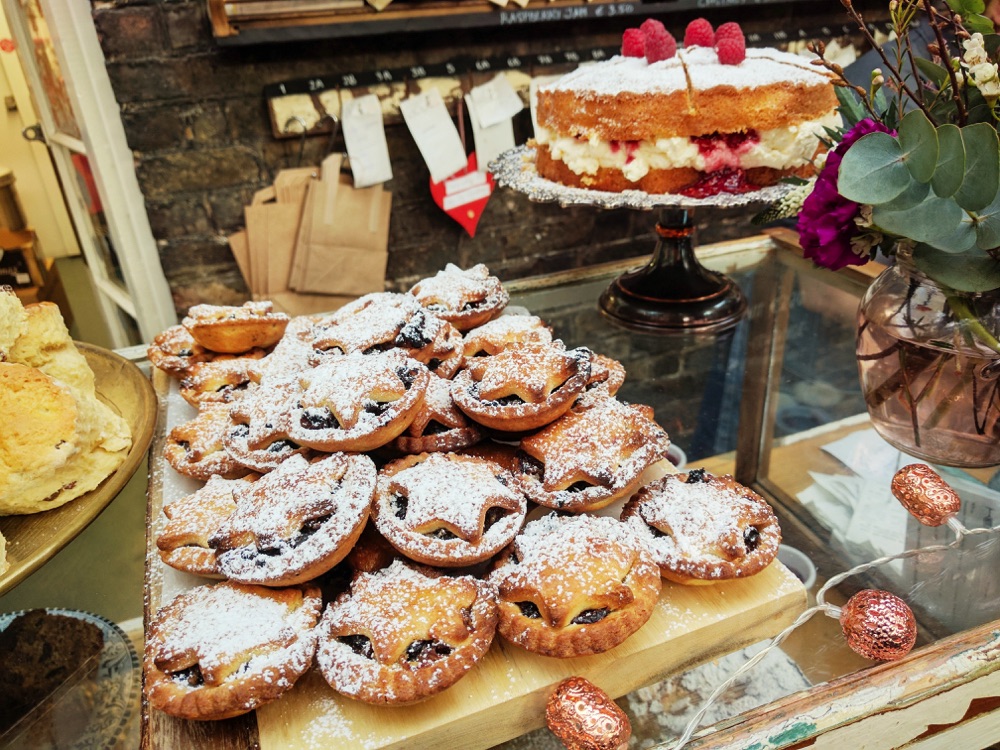
Ireland has unpredictable weather and the chances are that you may well encounter rain at some point during your holiday. Plan ahead and bring suitable waterproof clothes with you.
This will make your holiday a lot more enjoyable!
Depending on your itinerary, you can pick the best time to go to Ireland that will suit you. If you plan on being inside most of the time, then the weather is not going to impact your plans all that much.
However, if you plan a lot of outdoor activities, such as hiking and surfing, then you should be a bit more selective regarding the time of year that you travel.
Ireland provides tourists with a diverse variety of attractions, sights, festivals and activities all year round. One of the main challenges is trying to limit what can fit into your holiday! Either way, I am sure that you will have a fabulous time in Ireland!
Photos in this article are courtesy of Shutterstock.com , a website for sourcing royalty-free images and video clips.
Like This Article? Pin it!
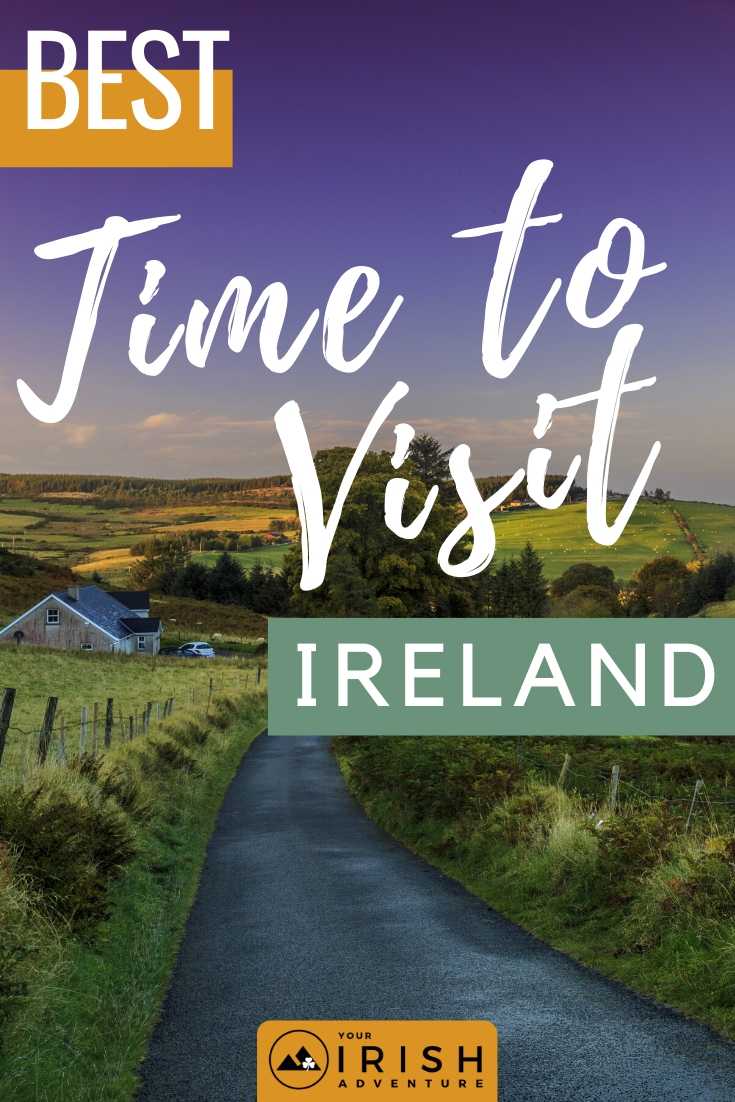
SHARE THIS POST
About The Author
Emer is an Ireland enthusiast and thoroughly enjoys advising people about the country she grew up in. She has a PhD in ecology and particularly loves exploring the Irish landscape and its nature. Emer blogs at Let’s Go Ireland .
YOU MAY ALSO LIKE
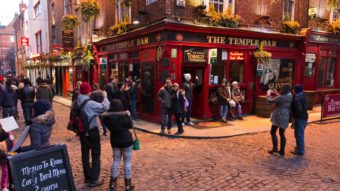
A Weekend in Dublin, Ireland: The Perfect 2 Day Itinerary
With a weekend in Dublin, you’ll be able to listen to trad music, explore historical sites, dine on tasty food, and meet friendly people. Read

Sleeping in Dublin Airport: Showers, Sleep Pods and Opening Times
Be it a dreaded early morning flight or arriving late at night, sleeping in Dublin Airport is often an easy option to save a few

Howth Cliff Walk: Complete Howth Hiking Guide
There’s no better way to explore the picturesque seaside town of Howth than by hiking along one of its many trails. And lucky for you,
Keep In Touch

21 Ireland Travel Tips I Give Every First Time Visitor
By Author Keith O'Hara
Posted on Last updated: May 1, 2024

This guide contains Ireland travel tips that I’ve been passing on to first time visitors for 10+ years.
Many guides with tips for traveling to Ireland consist of telling you to ‘Ah, be sure to have the craic’ ….
However, in reality, the most useful travel tips for Ireland are the likes of:
- VAT refunds: Those visiting Ireland from a non-EU country are eligible
- Logical itineraries: A realistic and logical itinerary will save you time, stress and money
- Pack light layers: Ireland can get 4 seasons in 1 day. Layers are your friend
Useful Ireland travel trips

Click to enlarge
Below, you’ll find some handy Ireland travel tips that I put together based on the thousands of emails from tourists that I reply to each year.
I strongly believe that, if you take note of the below, you’ll place yourself in a better position to have a more enjoyable trip when visiting Ireland.
1. Visiting Ireland at any time comes with pros and cons, so choose wisely
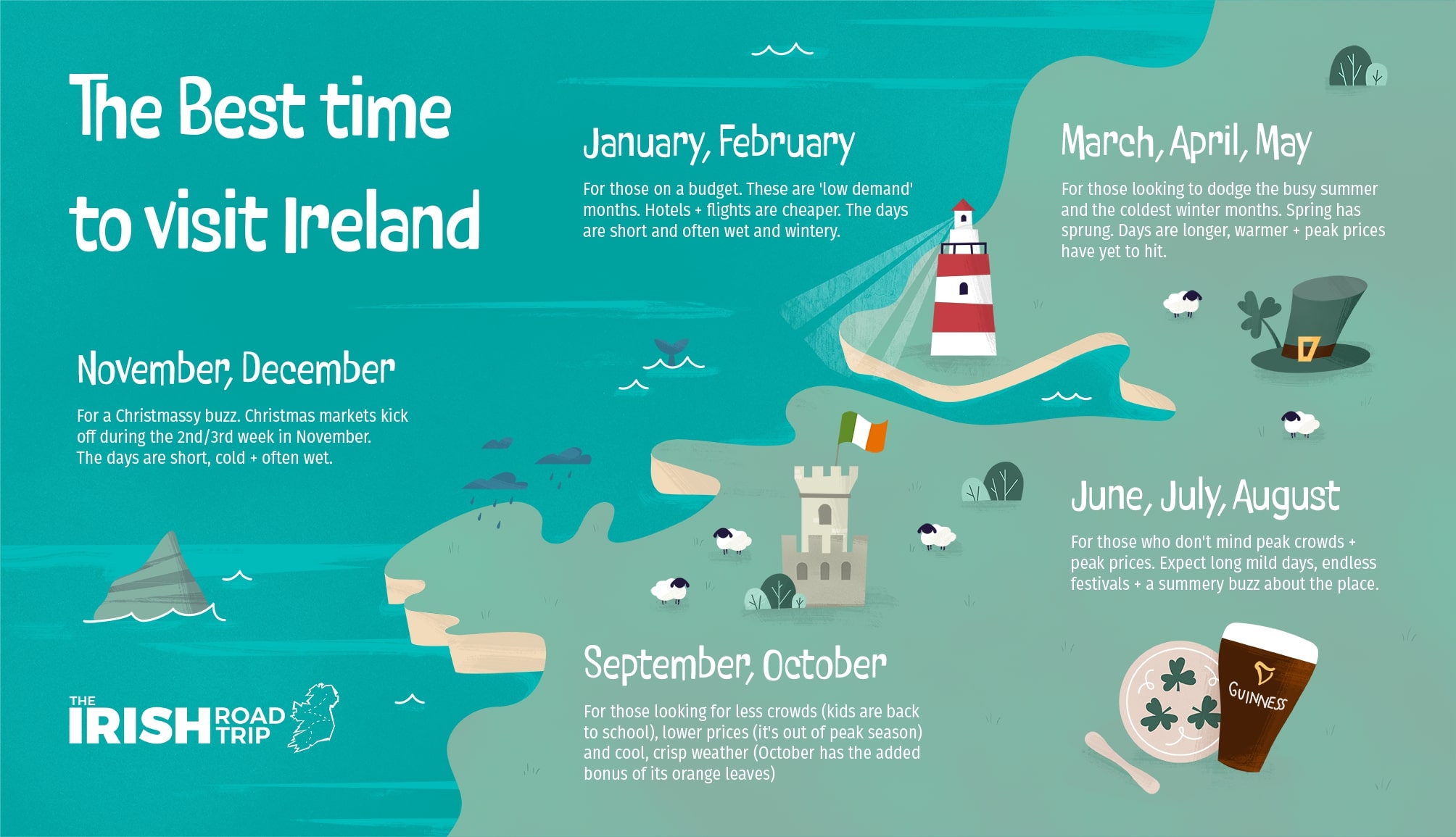
If you only take note of one of my tips for traveling to Ireland, let it be this one, as when you visit Ireland will have a massive impact on your overall experience.
The trickiest part of planning a trip to Ireland is often deciding on the best time to visit Ireland – each month has its pros and cons.
Personally, I like traveling during the ‘shoulder season’ – September, October, April and May, as its quieter and you generally get better deals on accommodation and flights.
However, you need to weigh up the pros and cons and determine the best time for you :
- Example 1: If you’re on a tight budget, the winter months (Jan in particular) will be best
- Example 2: If you’re looking for the best chance of good weather, June, July and August will be best
- Example 3: If you’re looking for long ish days, less crowds and mild temperatures, October will be best
2. Time spent mapping out your Irish road trip is worth its weight in gold
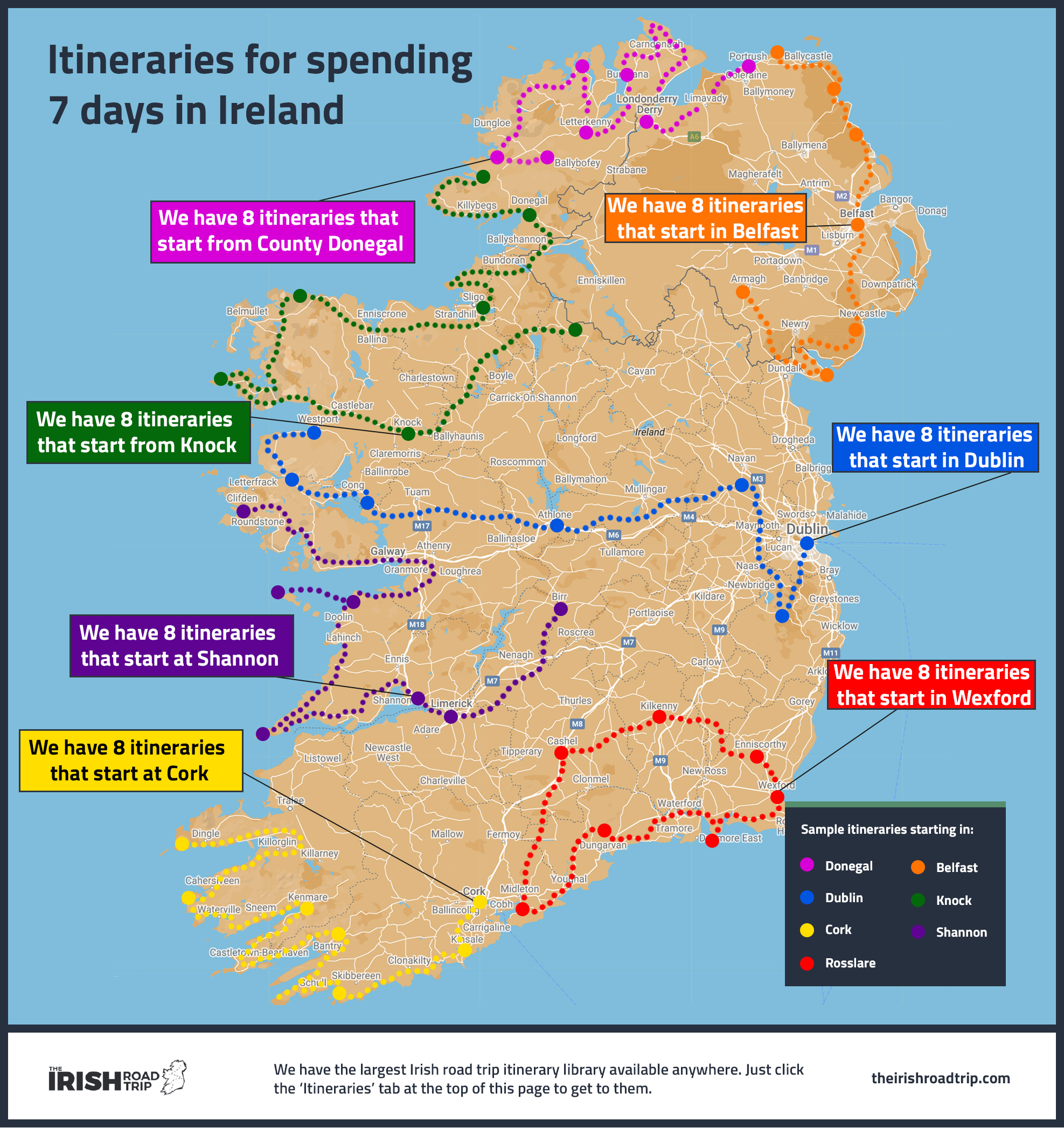
Click to enlarge map
One of the more overlooked tips for traveling to Ireland for the first time revolves around your road trip route.
It’s why, last year, I published the world’s largest Irish road trip library (you can choose your trip length, start point and much more).
Your Ireland itinerary , without exception, needs to be one:
- That you have confidence in: Before you start booking flights/hotels, you need to be comfortable and confident in your route
- That follows a logical route: It needs to follow a route that makes sense (e.g. you opt to fly into Shannon as you only plan on seeing the west)
- That is realistic: People often underestimate how long it takes to get around Ireland. The result? They pack far too much into their visit
3. You don’t have to use a car to get around Ireland

Yes, getting around Ireland without a car is very possible (in fact, I have lots of Irish road trip itineraries that only use public transport).
You can easily combine buses, trains and day tours to get around Ireland , you just need to be a bit more astute with your planning.
- The advantage: It’s cheaper than renting a car
- The disadvantage : You don’t have as much flexibility.
Note: Public transportation in Ireland is notoriously bad in places like Donegal
4. If you do rent a car, read (and re-read) the fine print
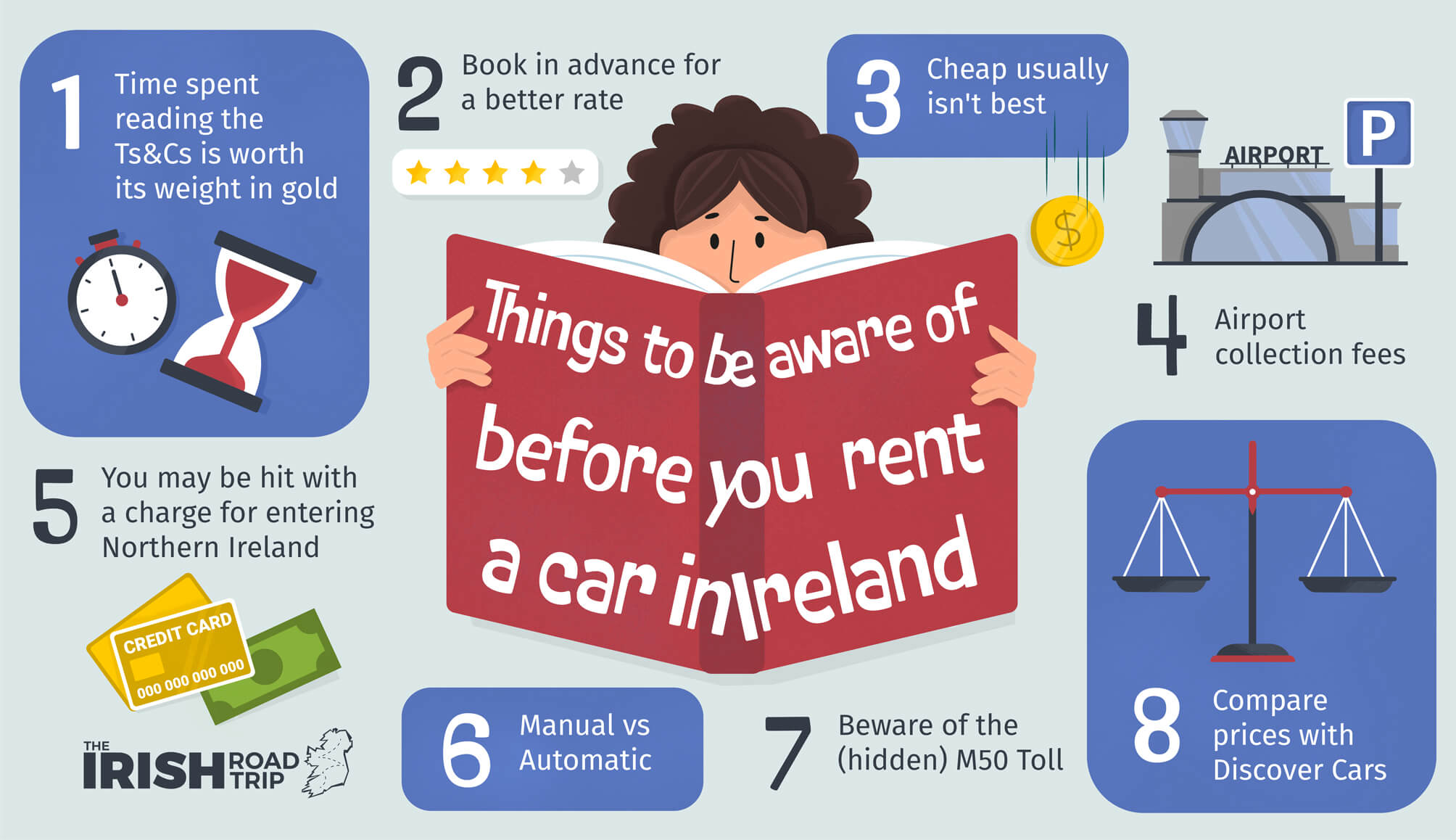
This is one of the Ireland travel tips I tend to pass on most frequently.
If you’ve rent my guide on renting a car in Ireland , you’ll see me rant… quite a bit.
Personally, I believe that the car rental industry makes renting a car as confusing as possible.
I’m not the only one to think this, either. There has been a number of consumer reports outlining the shady practices of the car rental industry in Ireland.
So, one of the things to know before traveling to Ireland that’ll save you a lot of stress is to understand what you’re agreeing to with car rental (particularly what you’ve paid and what’s left to pay).
5. Understand the differences between Ireland and Northern Ireland

One of the more confusing tips for traveling to Ireland relates to the differences between the Republic of Ireland vs Northern Ireland .
In a nutshell, the 6 counties of Northern Ireland are part of the United Kingdom.
The remaining 26 are part of the Republic of Ireland.
Now, there’s no ‘hard’ border between Ireland and Northern Ireland – you can drive from one to the other without noticing.
The main thing you need to be aware of are that the currency in Ireland is Euro and the currency in Northern Ireland is Pound Sterling.
6. Avoid talking politics

Photo by Fribbler on Wiki (CC BY-SA 3.0)
Many people visiting Ireland for the first time will, at some point, end up chatting to a ‘local’.
And the vast majority of the time those conversations will be enjoyable for both parties.
Now, what you talk about is entirely up to you , however, I’d recommend that you avoid bringing up the likes of the Troubles .
For the most part, it won’t be a welcome topic of conversation and it will, at times, stop it in its tracks.
Looking to spark an easy conversation? Talk about the weather. It’s an easy conversation starter and it’s one most Irish people will use for small talk!
7. Ireland frequently get four seasons in one day
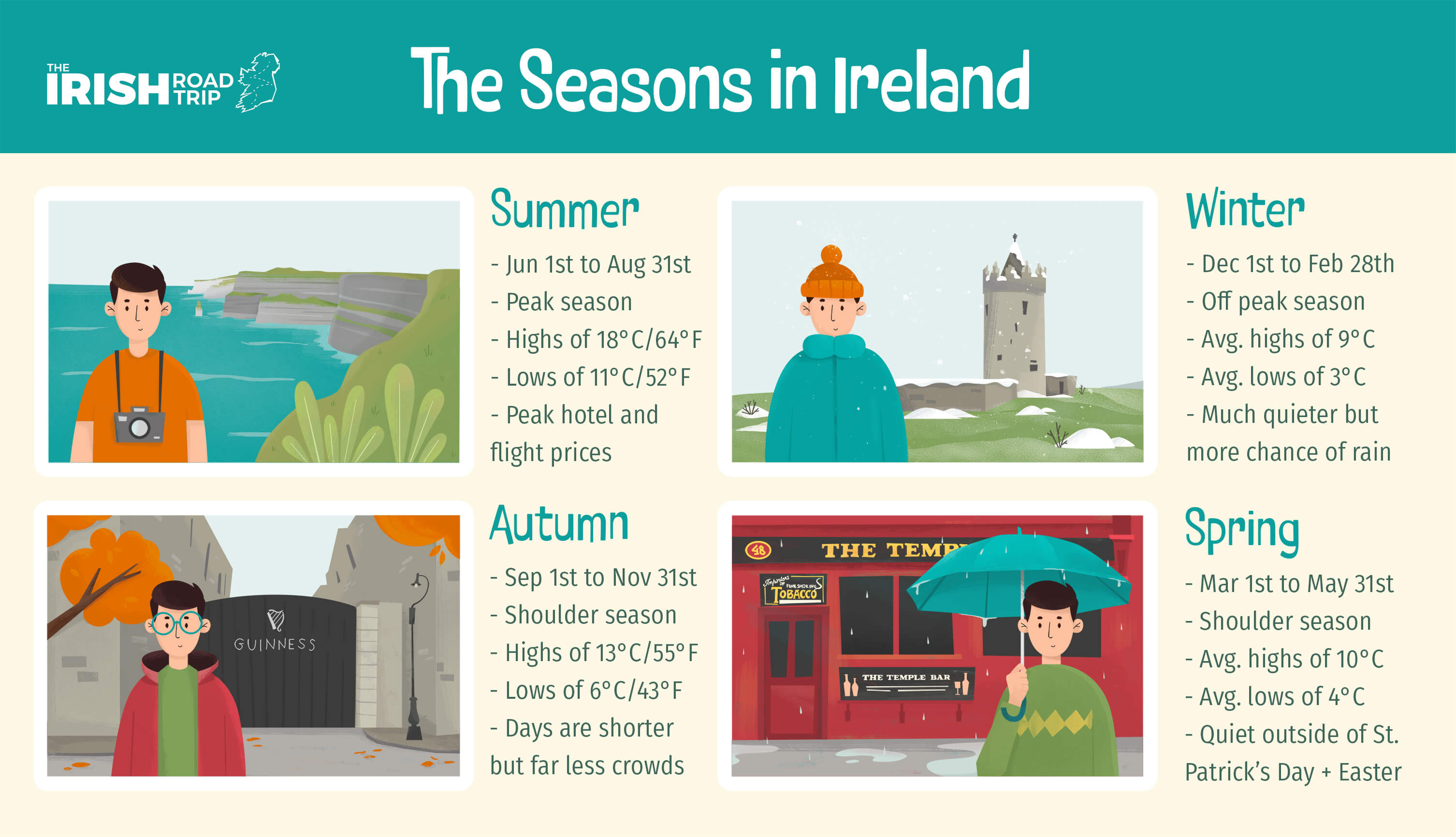
Click to enlarge image
Yes, you heard correctly – the weather in Ireland is a little bit nuts.
If you’re thinking, ‘Sure, I’m visiting in June – I’ll just pack shorts and t-shirts – it’ll be grand’ , think again.
Summer in Ireland can go from dry and toasty one minute to cold, wet and windy the next.
One of the best travel tips that I can give you if you’re visiting Ireland is to pack for every kind of weather.
If you’re traveling to Ireland during the summer months, make sure to bring summery clothes, but also pack a light rain jacket and a warm hoody or cardigan.
8. Layers are your friend
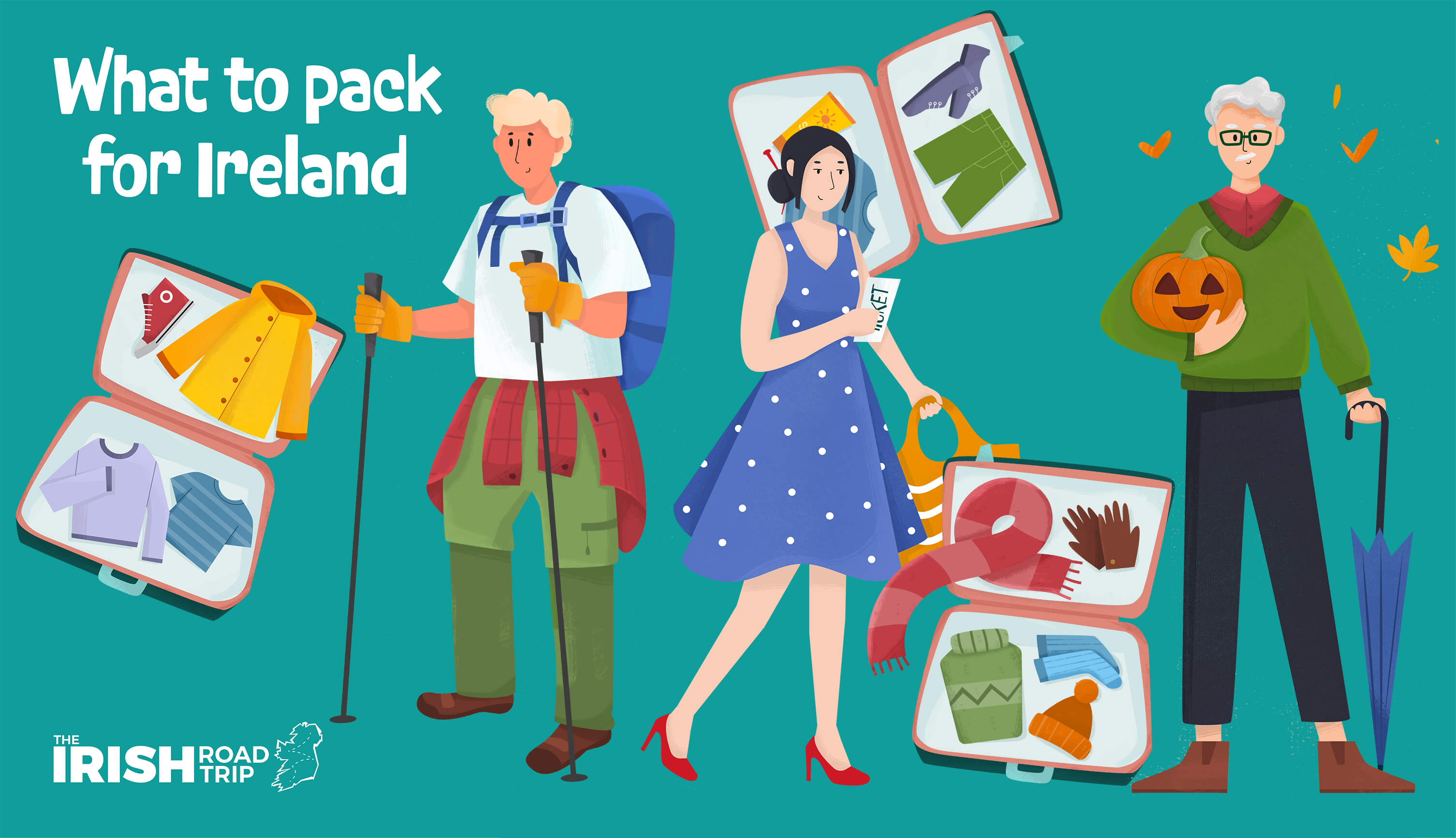
Many people visiting Ireland make the mistake of packing for the season, e.g. bringing only shorts and t-shirts during summer in Ireland .
One of the more useful what not to do in Ireland travel tips is to assumer that Irish seasons act as they should.
In our guide on what to wear in Ireland , you’ll find info on what you should bring for each season – in a nutshell, layers are always needed.
9. Some visitors can shop VAT-free

Bottom left: Massonstock. Top right: simarik. Left: Corelens (Canva)
If you’re traveling to Ireland from a non-EU country, you’re entitled to a VAT refund on eligible purchases made during your visit.
Now, it’s worth noting that this doesn’t apply to things like hotels, food or car hire.
In fact, it’s intended to only apply to items that you can carry home in your hand luggage.
In our guide to claiming a VAT refund after traveling to Ireland, you’ll find out everything you need to know.
10. Driving in Ireland requires adequate preparation
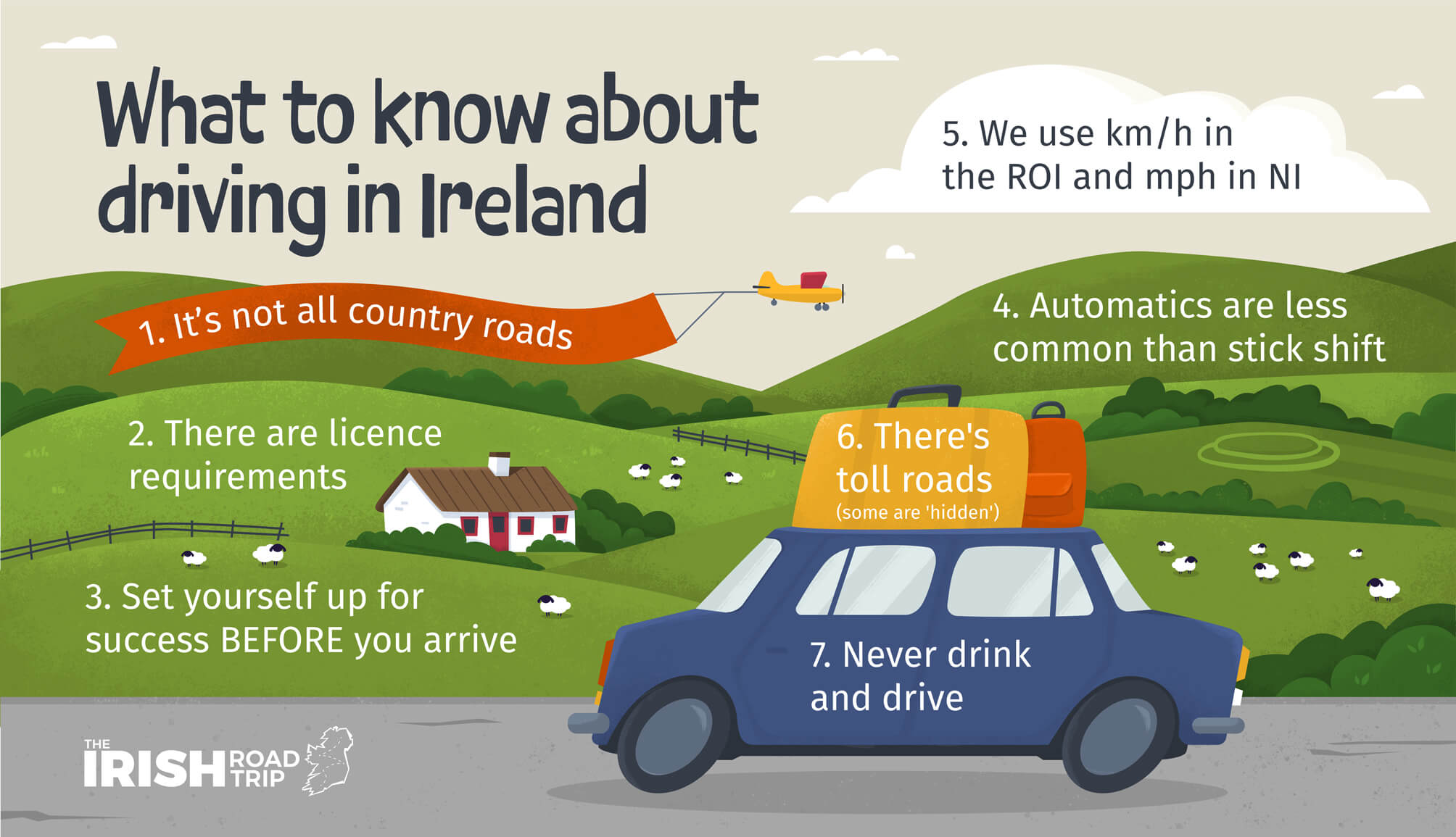
Many people driving in Ireland for the first time do absolutely zero preparation in advance of arriving.
Then they get here and panic.
Especially when they reach the likes of Conor Pass (a narrow mountain road on the Dingle Peninsula ) or sections of the Ring of Kerry .
I’d strongly recommend taking time to understand the rules of the road in Ireland along with how to navigate roundabouts.
Yes, it’s a boring task, but it’s only you’ll thank yourself for when you get behind the wheel. Few Ireland travel tips are as useful as this one.
11. Currency converting ‘stores’ generally have the worst rates
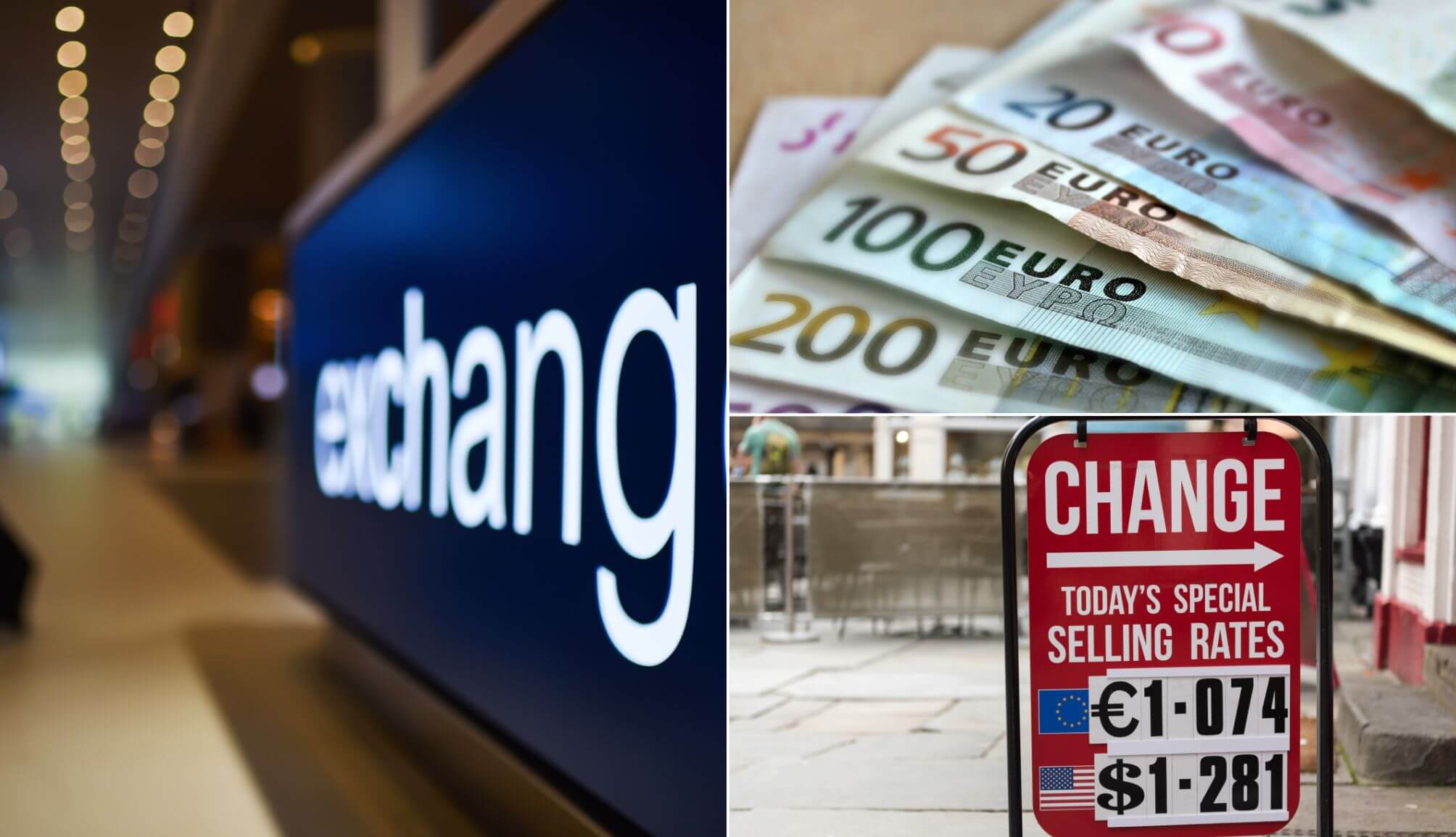
Left: Oleksandr Filon. Top right: martaposemuckel. Bottom right: 400tmax (Canva)
This is one of the more obvious visiting Ireland travel tips – if you convert money via currency exchange providers you’ll be hit with a hefty fee.
You’re generally better off just leaving the Dollars in your bank account and then withdrawing for an ATM when you arrive (there are plenty of them).
Or, if you’re using something like a Revolut or Wise credit/debit card, they tend to get you a good rate.
12. Don’t be fooled into thinking the only airport in Ireland is in Dublin
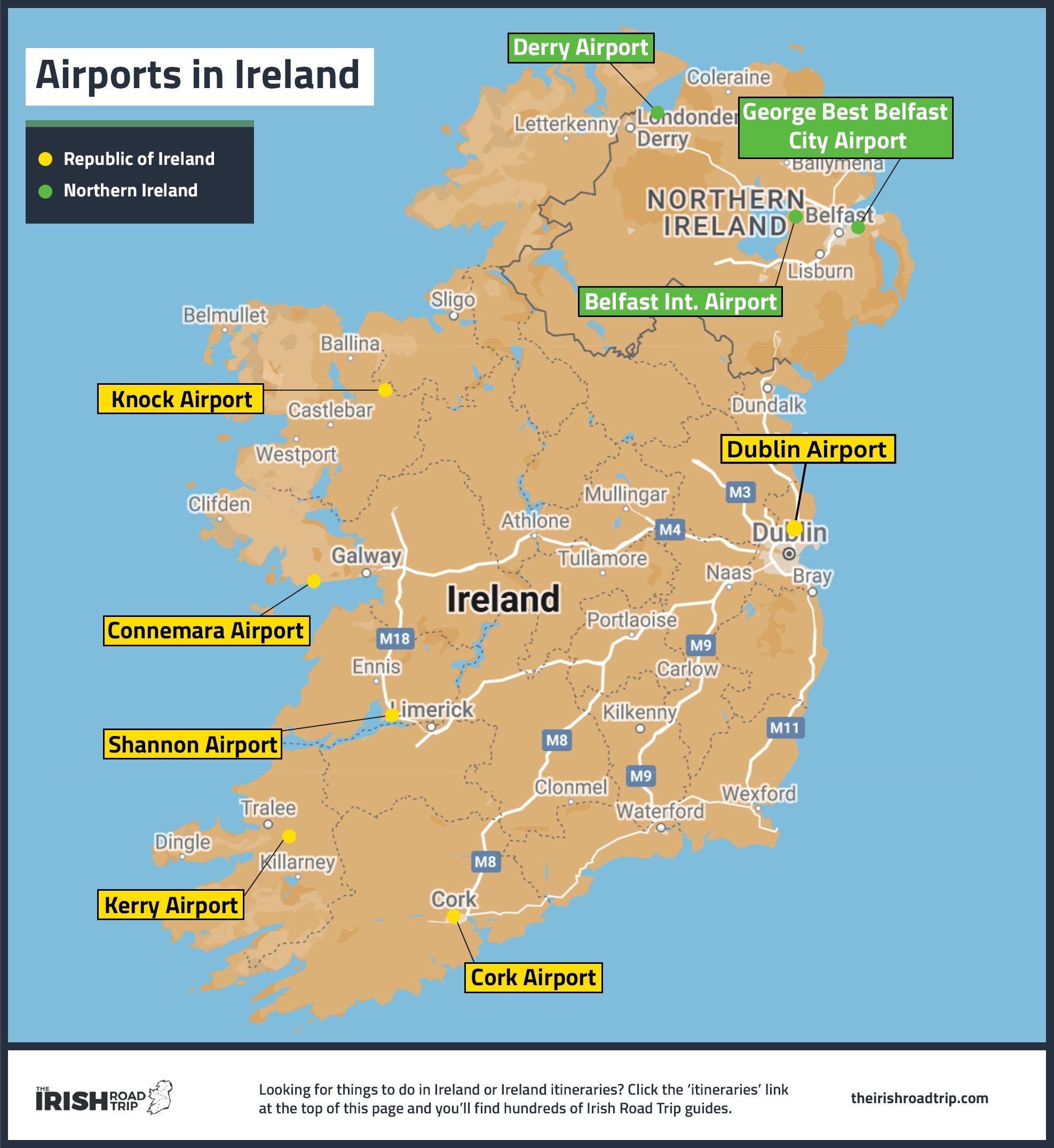
Yep, there are several airports in Ireland that you can fly into, depending on your departure point.
Now, you’ll remember that the first of our tips for traveling to Ireland was to plan your itinerary before booking anything .
One of the reasons for this is that picking what airport you fly into will have a massive effect on your itinerary.
For example, if you fly into Shannon (Clare) you’ll be finely placed to tackle the Wild Atlantic Way from the moment you leave arrivals.
If you land in Belfast, you can get onto the Antrim Coast Road in under an hour. This is another of the Ireland travel tips I find myself repeating over and over.
13. We don’t have a ‘US Style’ tipping culture in Ireland
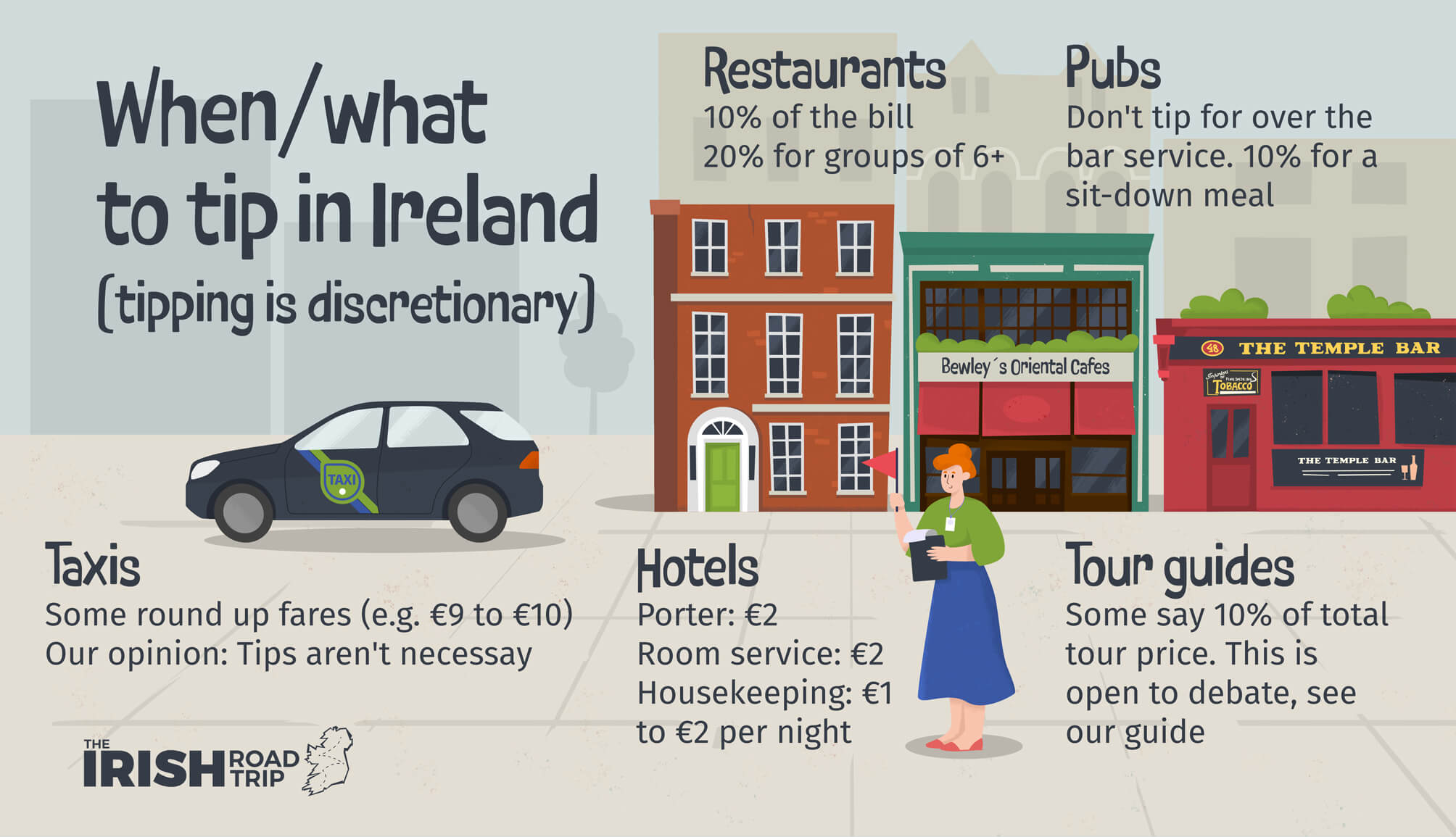
Many guides on Ireland travel tips spread wrong info about tipping in Ireland , stating that it’s seen as rude if you don’t tip everyone from the bartender to the staff in your hotel.
In Ireland, aside from in places that serve you food (table service only), tipping isn’t customary.
Is it appreciated? Sure!
However, there isn’t a tipping culture in Ireland like there is in the USA and Canada.
14. Be aware of the various laws in Ireland before you arrive
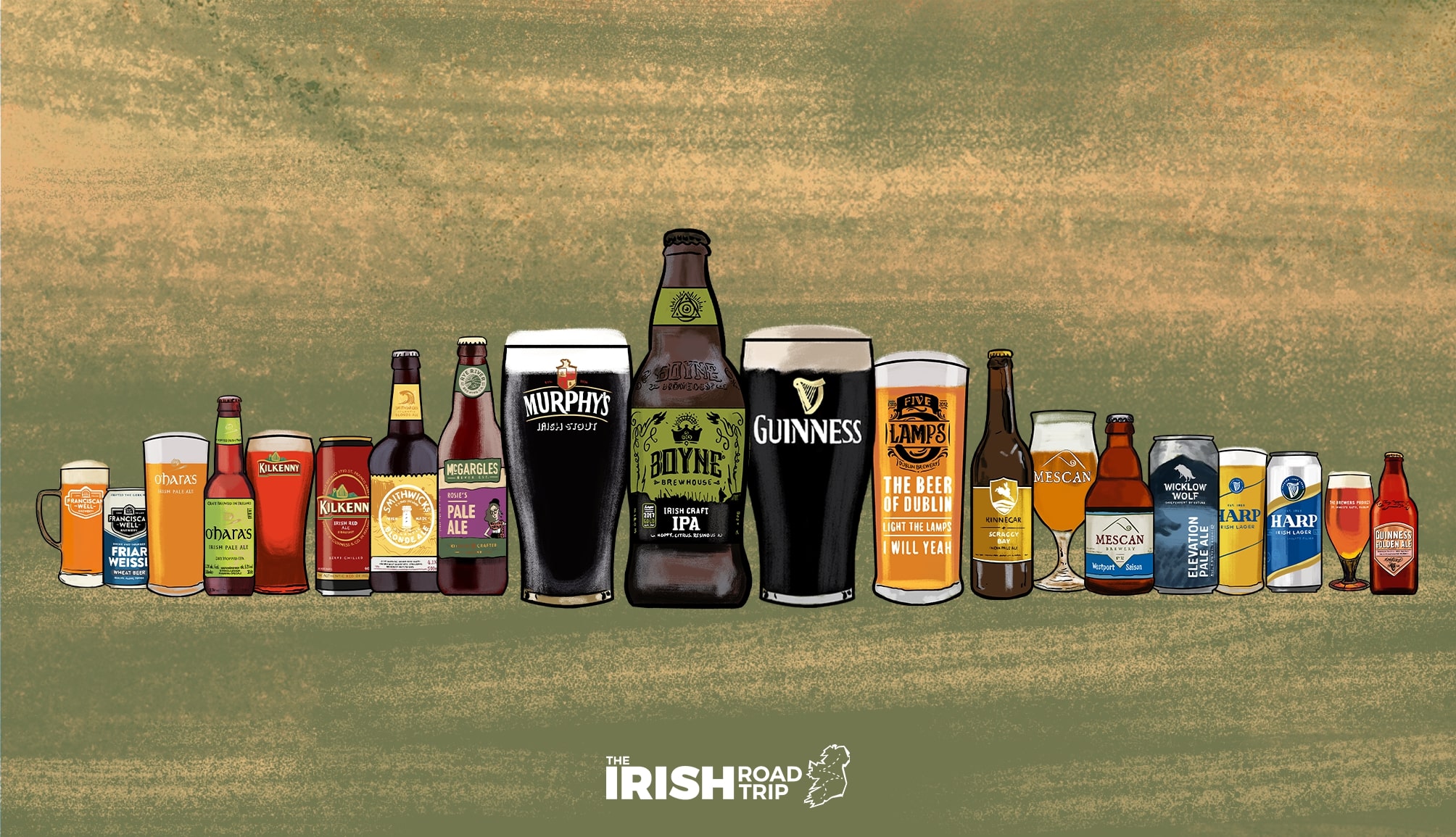
Unsurprisingly enough, there are numerous laws in Ireland that you need to be aware of in advance of your visit.
Now, most of them are common sense.
However, others, like the smoking ban, can catch people out.
That and the fact that there are many Irish drinking laws , from not drinking in public to the age that you can legally drink from.
Related read: We’ve published the world’s largest free collection of self guided driving tours of Ireland
15. It’s possible to do Ireland on a budget, but you may need to leave out certain places

The cost of a trip to Ireland has been going up-and-up in recent years.
However, doing Ireland on a budget is still possible – it just requires a lot of advanced planning.
One of the more useful tips for traveling to Ireland on a budget is to use the likes of Skyscanner to track the price of flights.
Then, when they reach a price you’re comfortable with, pounce!
You’ll also likely need to dodge some of the cities in Ireland , like Dublin, as that’s where accommodation prices have reached unreasonable levels.
16. Make a copy of your passport and bring it with you
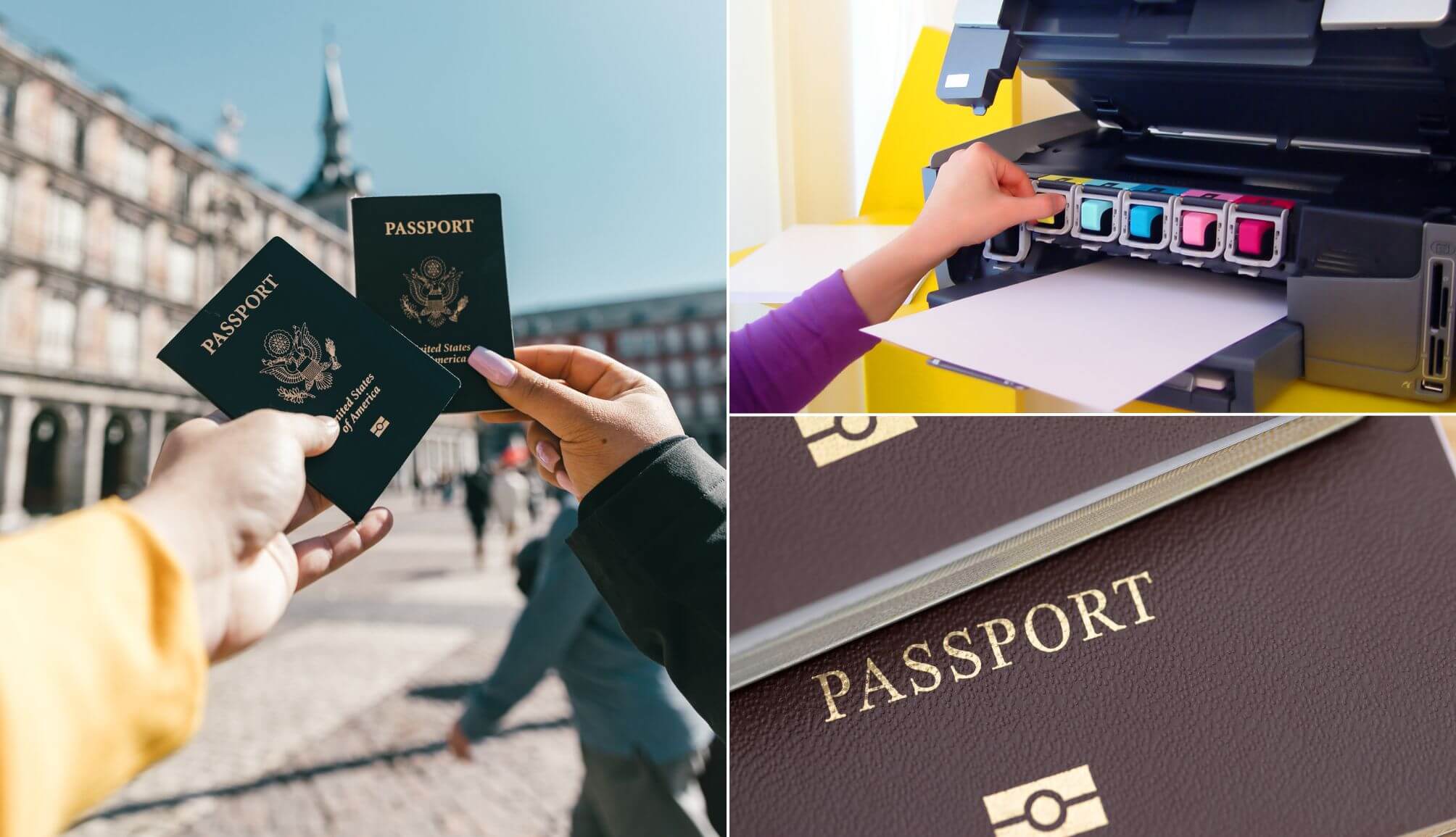
Photo left: Spencer Davis. Top right: by_nicholas (Canva)
This is one of the more basic Ireland travel tips, and you likely won’t need to use it.
However, if you ever do, you’ll thank yourself for it.
Personally, I have a digital copy of my passport stored on my phone and I have a folder with three copies of my passport that I leave in my backpack.
That way, if anything were to happen, you’ll make life an awful lot easier.
17. Irish slang and humour can be tricky to get your head around
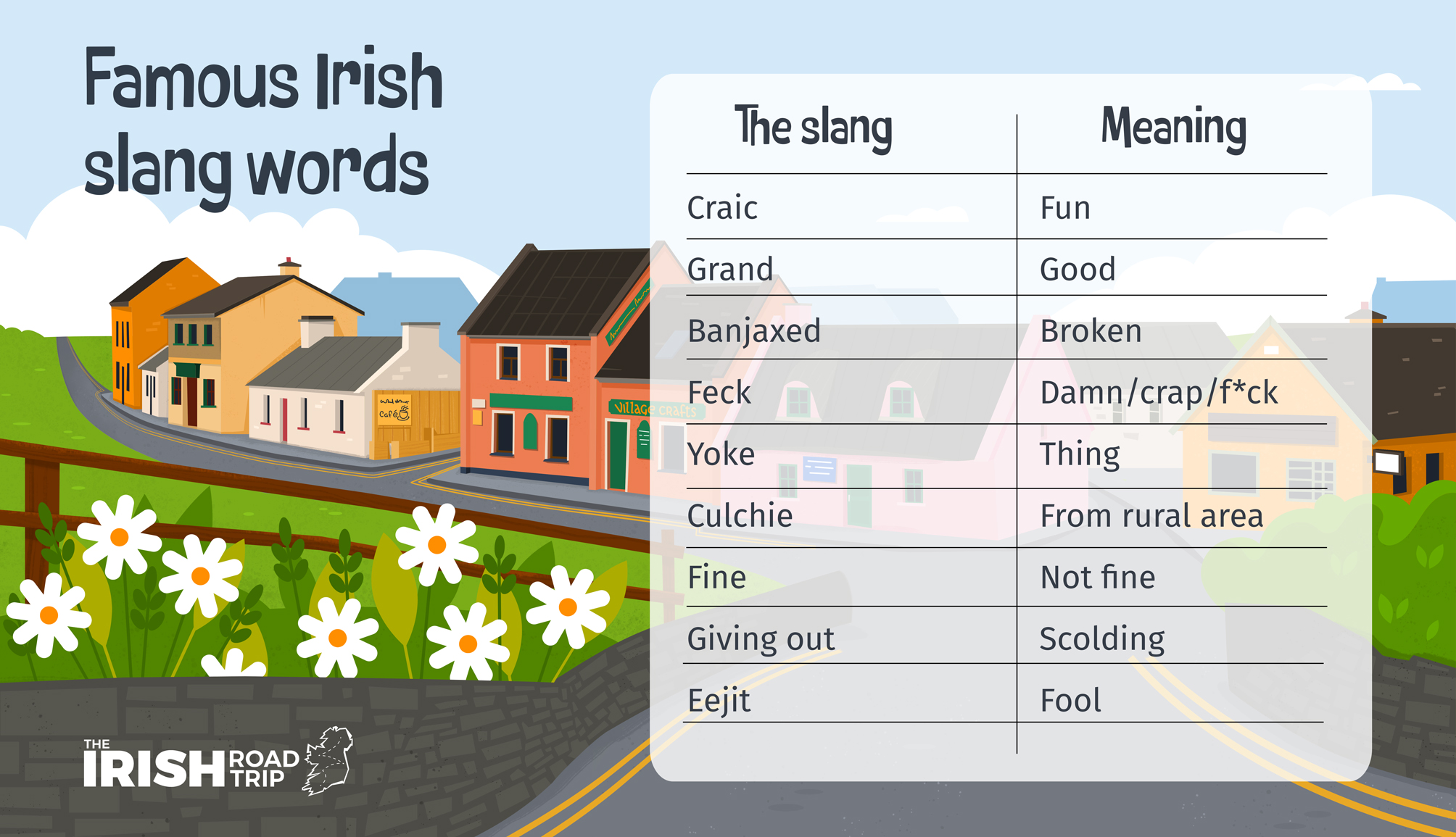
Irish slang words and Irish curses are part of everyday life in Ireland.
The tricky thing is, however, that different parts of the country have different slang terms.
There’s obvious ones, like ‘the Craic’ (i.e. ‘fun’) but there’s less obvious terms, like referring to ‘Yer one’ and ‘Yer man’.
If you’re confused during a conversation, ask the person to clarify what it is they said – it’s rare you’ll meet someone that won’t help you understand a bit of slang.
Related read: In need of a giggle? See our guide to the funniest Irish jokes
18. Always opt to visit traditional-style pubs over modern cafe bars
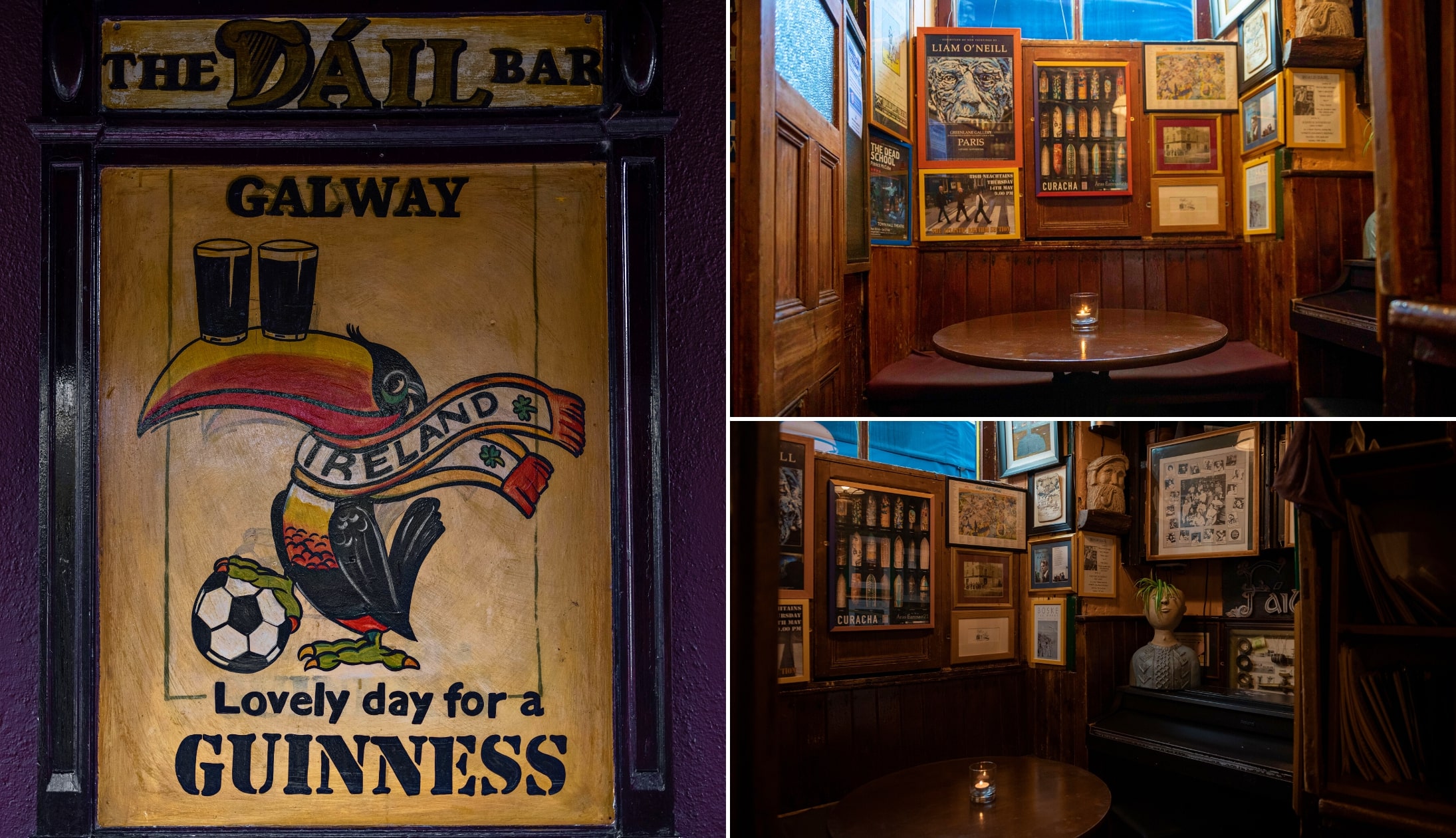
Photos courtesy Failte Ireland
There’s endless pubs in Ireland , however, not all are equal.
There’s traditional pubs and there are modern pubs and you’ll always, in our opinion, want to opt for traditional.
Traditional Irish pubs are ones that have stood the test of time and that boast a charm and character that you won’t encounter anywhere else in the world.
19. Limit the time you spend in Dublin to 2-3 days max
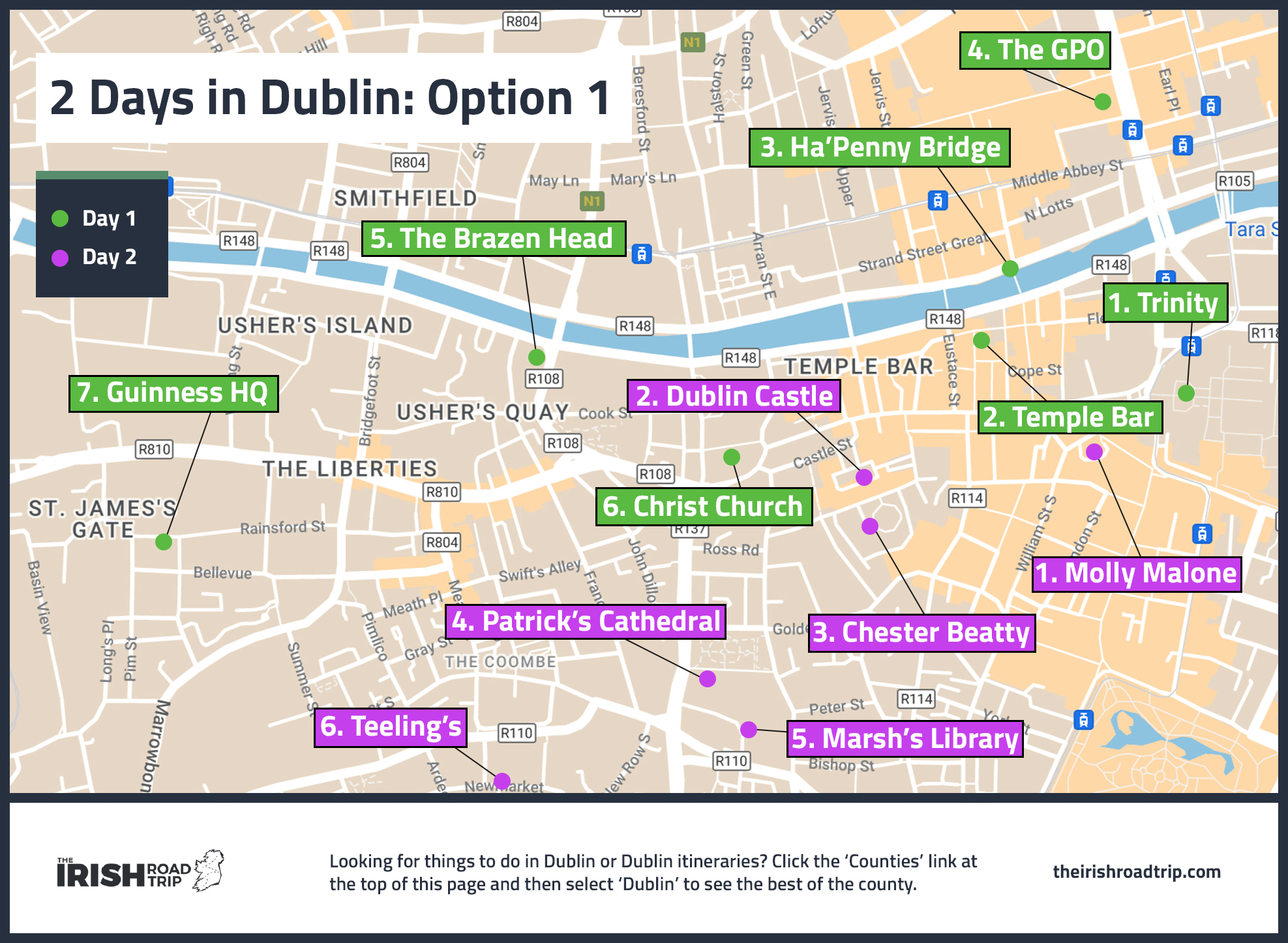
Although there’s plenty of things to do in Dublin , don’t spend more than 2-3 days max there (see our guides to 2 days in Dublin and 24 hours in Dublin ).
Many people fly into Dublin and then spend 5 days to a week there, but it’s far too much (unless you’re doing day trips to Wicklow, Meath and Kilkenny).
When visiting Dublin it’s worth using the likes of the Dublin Pass , which will save you cash if you’re visiting the main attractions, like the Guinness Storehouse and the Jameson Distillery.
Related Ireland travel tips: The Heritage Card is similar to the Dublin Pass in that it’ll get you into multiple fee-paying attractions for a single fee
20. Don’t just stick to the main tourist track

Photos via Shutterstock
Go and visit the Cliffs of Moher , the Giant’s Causeway and all of the other tourist favourites (if you want to, that is) – but make a conscious effort to step off the beaten path.
It’s only when you do this that you really start to discover how mighty our little island really is.
Places like the Beara Peninsula in Cork, the North Mayo coast and the Mourne Mountains in Down tend to get left off of many Ireland itineraries.
Which is a shame. As it’s in these lesser-known/visited corners of Ireland that you’ll discover how powerful the combination of natural beauty and peace and quiet can be.
21. There’s more to Irish culture than drink (and there’s more to tradition than Paddy’s Day)
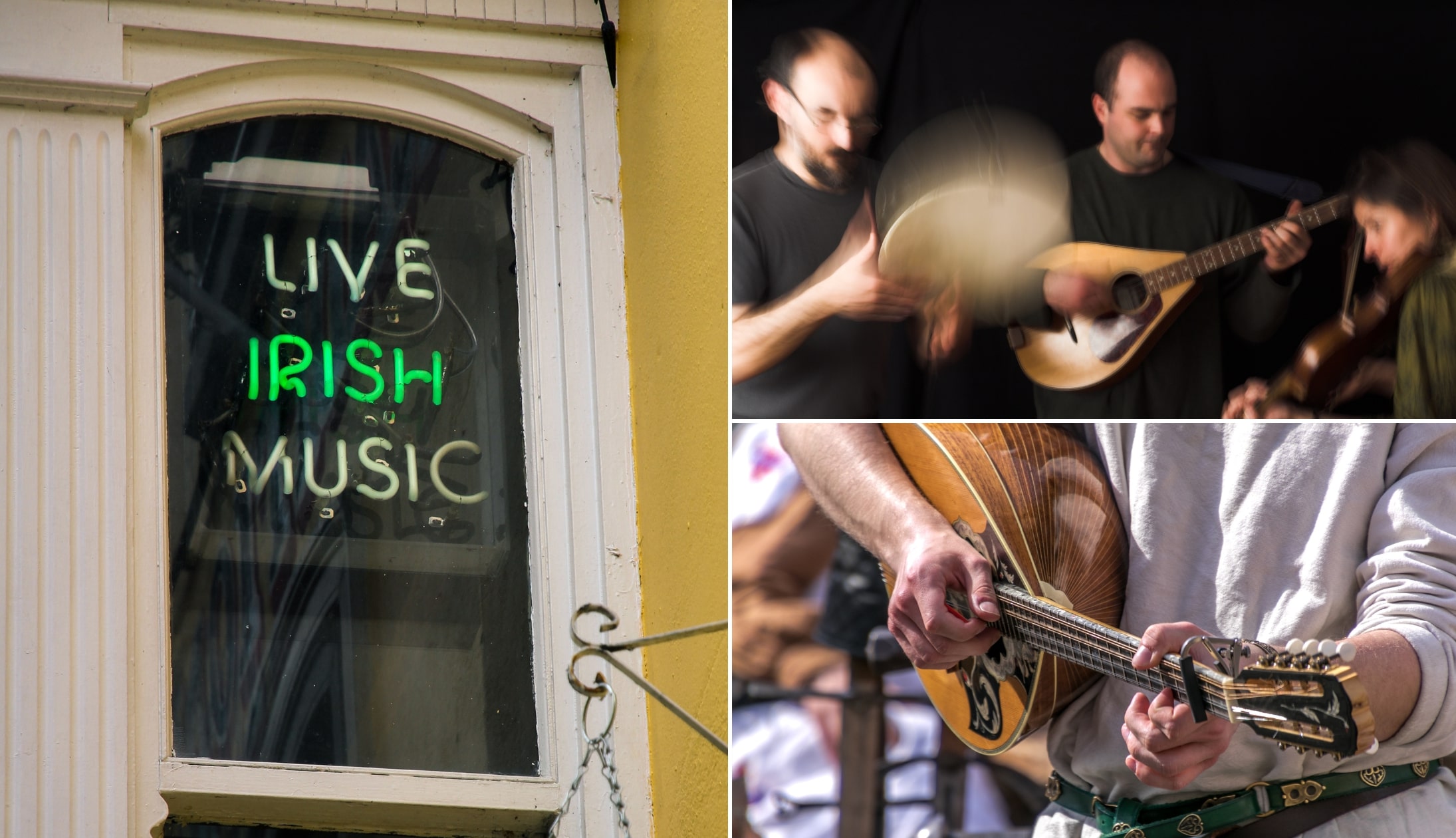
Many people looking for tips for traveling to Ireland never really ask about Irish culture or Irish traditions .
Ireland’s culture has benefited from sport, music, literature, art, language, storytelling (see our section on Irish mythology ), farming and food and you should try and experience as much of it as you can during your visit.
Similarly, traditions stem far beyond St. Patrick’s Day – there’s countless ancient festivals in Ireland , many of which take place outside of the busy summer months, that are worth a visit.
Frequently asked questions
We’ve had a lot of questions over the years asking about everything from ‘Do I need cash?’ to ‘What are no-go areas?’.
In the section below, we’ve popped in the most FAQs that we’ve received. If you have a question that we haven’t tackled, ask away in the comments section below.
What do I need to know before traveling to Ireland?
Northern Ireland and the Republic of Ireland are two separate countries on the one island (and thus have differences), the weather is a little bit crazy and a well-planned trip itinerary is worth its weight in gold.
What are some essential Ireland travel tips?
Plan your itinerary before you book anything, prepare for 4 seasons in one day, choose the right time to visit based on how you like to travel/your budget and determine what mode of transport suits your travel style.
How do I not stick out in Ireland?
Although we’d argue that there’s no fun in just ‘blending in’, if you’re looking to avoid standing out, how you dress and how you conduct yourself in public places are key.
Keith O’Hara has lived in Ireland for 35 years and has spent most of the last 10 creating what is now The Irish Road Trip guide. Over the years, the website has published thousands of meticulously researched Ireland travel guides, welcoming 30 million+ visitors along the way. In 2022, the Irish Road Trip team published the world’s largest collection of Irish Road Trip itineraries . Keith lives in Dublin with his dog Toby and finds writing in the 3rd person minus craic altogether.
This site uses Akismet to reduce spam. Learn how your comment data is processed .
Top 10 things to know before traveling to Ireland
Mar 27, 2024 • 9 min read

From pub etiquette to catching public transport – here's what you need to know before you go to Ireland © Atlantide Phototravel / Getty Images
A lifetime of living in Ireland has given me some insight into the vagaries of my home country, beginning with the number one rule: never assume anything. This is a country that delights in confounding even your most comfortable expectations about pretty much everything, from the weather to the quality of the wifi.
Here are 10 tips that I’m pretty comfortable giving anyone who plans a visit, whether for the first time or the fifth. I’ve got some practical tips around VAT refunds and the most efficient ways to get around, but then there’s a bunch of suggestions on how to crack the mightiest nut of all – the Irish themselves. Because be in no doubt, while Ireland has gorgeous landscapes, a rich history and the best pubs in the world, your visit will only be truly memorable if you get to know the people – friendly and welcoming but often contradictory and inscrutable.
1. Plan on at least seven days to start making sense of the country
Ireland is small, but there’s an awful lot to it. Luckily, distances in Ireland aren’t huge so you can get most anywhere in a few hours, but the list of where to go can get very long, very quickly.
It’ll take you a couple of days to even begin to make a dent in Dublin , but once you go beyond the capital you’ll need at least five days to make a lightening stop tour of the major highlights of the west: Galway and Connemara, Clare (where you’ll find the Cliffs of Moher and the most authentic traditional music in the country), Kerry (you’ll need a whole day just for the Ring of Kerry and another for the Dingle Peninsula ) and Cork , only it’s time to go home so you can only make enough time for Cork City .
Clearly the only solution is to plan for a month; at the end of it, you’ll be wanting to stay a year.

2. Keep it to casual wear
The Irish aren’t big on formal wear and only pull it out for very specific occasions (a wedding, a ball, the opening of a parliamentary session). Which means you can wear pretty much whatever you want: smart casual is the most you'll need for fancy dinners, the theatre or the concert hall.
Irish summers are warm but rarely hot, so you'll want something extra when the temperatures cool, especially in the evening. Ultimately the ever-changeable weather will determine your outfits, but a light waterproof jacket should never be beyond reach for the almost-inevitable rain. If you’re planning on doing a lot of walking – in cities or on hills – a good pair of walking shoes, preferably waterproof, will do the trick.
Add these top beaches around Ireland to your travel itinerary.
3. The land of a 100,000 welcomes
Céad míle fáilte – literally, 100,000 welcomes. The famous Irish greeting suggests a country that is big on displays of affection, but nothing could be further from the truth. A firm handshake – with eye contact – is the appropriate greeting when meeting men, women and older children for the first time. Once a friendship is made, then all bets are off and anything goes, from a hug and a kiss on the cheek (primarily amongst female friends) to an air nod and a casual "hey".
Younger Irish are less formal than their older counterparts, but even they generally eschew effusive greetings: more often than not, a quick handshake and a casual nod is the best way to say hello for the first time.
4. The Irish love to talk, until they don’t
The Irish are renowned for their chat, but with people they don’t know particularly well they generally like to keep it to topics that are light and not likely to embarrass. Despite their gregarious nature, the Irish tend to be reserved when it comes to life’s more serious issues and are very mistrustful of "oversharers".
The old adage that the Irish will talk about anything except sex, religion and politics is something of an over-simplification, but if you do find yourself steering into deeper waters around sensitive topics it’s always better to listen: locals aren’t shy about getting into heated discussion amongst themselves about all kinds of topics but take a dim view of outsiders who express (even legitimate) criticisms of Ireland or the Irish.
5. You’d better learn about the rounds system
It’s a firm rule of drinking with locals. If someone buys you a drink, you’re obliged to buy them one back – this is the bedrock of Irish pub culture. Nothing will hasten your fall from social grace here like the failure to uphold this pub law.
The time to repay the drink you’re drinking? It’s when the person you’re drinking with is just about to finish theirs. It doesn’t matter if you’re halfway through your own drink at that moment: you can’t let your drinking buddy sit in front of an empty glass. Your greatest challenge will probably be trying to keep up with your fellow drinkers, who may keep buying you drinks in every round even when you've still got a collection of unfinished pints in front of you and you're sliding face first down the bar.

6. The best way to visit cities is on foot or by public transport
Driving and parking in Irish cities is a nightmare. There’s no free parking anywhere; the unrelenting traffic will test even the most patient of drivers; and the one-way systems in major urban centres will confound you to the point of madness (although map apps are pretty good at pointing you in the right direction).
The good news is you don’t need a car to visit any Irish city. Dublin, the biggest by far, has a pretty decent system of public transport, but even then most of the major sights are within walking distance of each other. Same goes for Cork, Belfast, Limerick and Galway, which are more easily explored without a car.
Save this guide to the best road trips in Ireland.
7. The easiest way to explore Ireland is by car
If cities are best experienced without a car, the most effective way to explore the rest of the country is with one. The bus network, made up of a mix of public and private operators, is extensive and generally quite competitive, though journey times can be slow and lots of the points of interest outside towns are not served. The rail network is quicker but more limited, serving only some major towns and cities. Both buses and trains get busy during peak times; you'll need to book in advance to be guaranteed a seat.
Cars can be hired in every major town and city. The Irish drive on the left hand side; distances and speed limits in the Republic are measured in kilometres, but once you cross the invisible border into Northern Ireland everything switches to miles.
8. Ireland is good cycling country
Ireland's compact size and scenic landscapes make it a good cycling destination, albeit one you need to prepare for. The weather is unreliable, roads can be very narrow and Irish drivers tend to drive quickly, even on those narrow roads. A growing network of greenways, such as the 42km Great Western Greenway in County Mayo and the Royal Canal Greenway that runs through the midlands, are a great and hassle-free way to see the country from two wheels. A good tip for cyclists in the west is that the prevailing winds make it easier to cycle from south to north.
Buses will carry bikes, but only if there’s room. Intercity trains will also carry bikes, but you’ll need to book a space in advance as there’s limited capacity. Suburban rail services in Dublin won’t take bikes during rush hour (7am to 10am and 4pm to 7pm). A number of Irish companies arrange cycle tours, including Go Visit Ireland and Cycling Safaris .

9. Pick the right season to travel in Ireland
June to mid-September is high season: the weather is at its best and the most popular parts of the country – Dublin , Kerry and the southern and western coasts – are at their busiest. The downside is big crowds and the highest rates for accommodation and car hire.
Rates drop off from mid-September as the crowds start to thin, but most tourist spots are still open to take advantage of the last weeks of the season. Although weather can never be predicted with any degree of accuracy, the weather can be surprisingly lovely right up to mid-October.
Low season runs from November to the middle of March; Irish winter days are short, damp and cold, but the upside is fewer visitors and some terrific accommodation deals. A lot of the west coast goes into winter hibernation, though, with a lot of attractions and hotels closing down; if you’re planning to visit during this time you should check what’s open before you travel.
Ready to head to Ireland? These are the best times to visit.
10. Claim your VAT back if you’re visiting from outside the EU
Most goods come with value-added tax (VAT) of 23%, which non-EU residents can claim back as part of the Retail Export Scheme, so long as the purchase was made with a credit card. Visitors from the UK can also benefit from this, but not visitors from Northern Ireland.
Before making a purchase, check with the retailer that they operate the scheme. If they do, you will be issued an export voucher for the purchase, which you need to get certified by customs when you leave Ireland. The voucher is sent back to the retailer who then refunds you the VAT (minus any processing fee).
Rather than operate the scheme themselves, many retailers use VAT-refunding agencies, whereby you go through the same process of presenting the agency’s own certificate at customs. Some agencies, though, operate a scheme where you don’t pay any VAT upfront, but if you don’t file the paperwork correctly (either sending it back to the agency or presenting it to customs) your card will be charged later. Some goods such as books, children's clothing and educational items are excluded from VAT.
Explore related stories

Tips & Advice
Jun 12, 2024 • 12 min read
There is simply no way to tour Europe and not be awestruck by its natural beauty, epic history and dazzling artistic and culinary diversity.

May 3, 2024 • 14 min read

Apr 14, 2024 • 6 min read
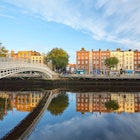
Apr 2, 2024 • 9 min read

Mar 31, 2024 • 6 min read

Mar 30, 2024 • 4 min read

Mar 28, 2024 • 6 min read

Mar 13, 2024 • 6 min read

Mar 11, 2024 • 7 min read

Mar 5, 2024 • 3 min read

You are here
Seasons in ireland.
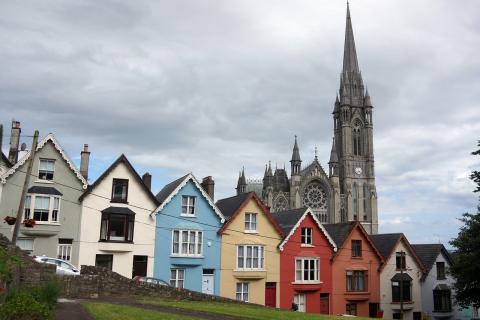
Ireland is a wonderful world of green meadows, rocky "lunar" landscapes, deep lakes and fast flowing rivers. There is a lot of tundra and sub-tropical greenery, plenty of pubs (its total number in the country is more than 11 thousand!) and perfect environment.
This is a land where the grass is green all the year round, and cool Irish guys still threaten not only local girls, but the world cinema. Emerald Isle with evergreen grass and excellent environment, where sheep, but not cars, are the culprits of traffic jams, attracts many tourists every year.
It’s a place where the tender edelweiss peacefully coexists with tropical palm trees. Ireland is a country of pacifying rural landscapes, where lots of surprises await for you at every step.
Spring in Ireland
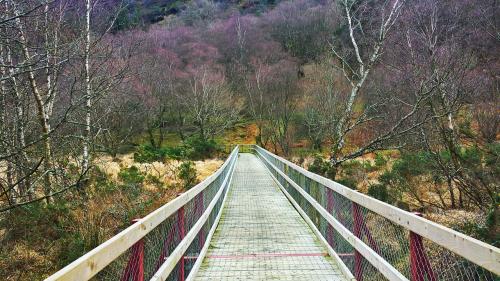
Ireland in spring is as pretty as a marriageable girl. It is the most favorite time of the year among locals. Lots of spring holidays prove this opinion. St. Patrick's Day is one of the most important holidays for Irish. They celebrate in on the 17 th of March.
Fortunately, the holiday has lost its religious roots, and is celebrated by all the country's inhabitants regardless of religion.
In spring meadows, swampy plains and valleys are covered with the emerald greenery. Heavy rains rather quickly replaced by the sun with a rainbow. The Irish have learned to enjoy short spring moments, because the warm sunny day could be broken by cold wind and rain at any moment. It is a character of the local climate, and unfortunately nobody can change it.
Climate of the Spring Months

Spring Holidays
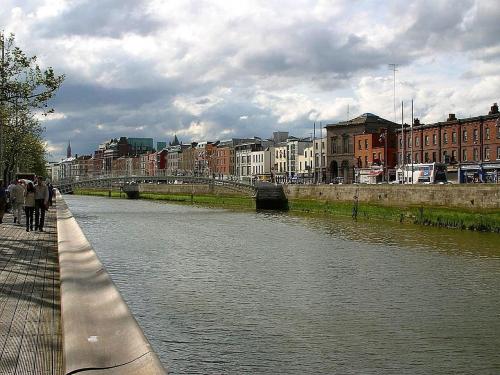
Easter Monday belongs to the national spring holidays. It is celebrated on the first Monday after Easter.
March 8th is an International Women's Day.
March equinox is an unusual holiday which is celebrated on 20th of March.
People celebrate May Holiday on the first Monday of May.
They also celebrate Good Friday on the last Friday before Easter. It is a national holiday, that’s why the Irish don’t work and spend all the day with their families.
Easter is also a spring religious holiday which is usually celebrated in April or May.
Summer in Ireland
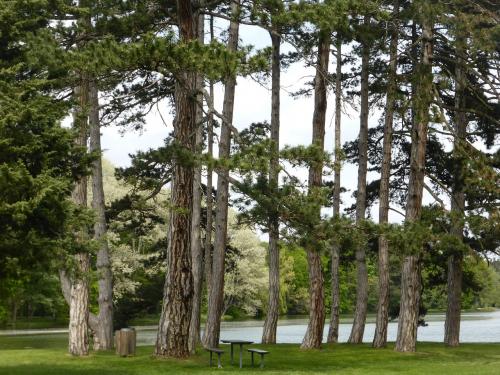
Ireland is an ideal place for people who don’t like hot summer, because the average temperature in July doesn’t exceed +20 °C (68 °F). Cool summer is the main feature of this area. Plants and flowers are blooming luxuriantly in six national parks of the country during this period. Gardens and trees are also blossoming on the territory of the old castles in the remote provinces of Ireland. Even Paul McCartney got married in one of them in his time. He has celebrated the wedding in this beautiful country.
Flora and fauna are extremely rich in Ireland. The blackbird, the chaffinch, the blue tit, the kestrel, the swift, the wren, the zarnyaka ... When was the last time you saw these birds, for example, in Moscow or its suburbs? If you want to behold them, you should go to the foothills of Kerry.
Climate of the Summer Months
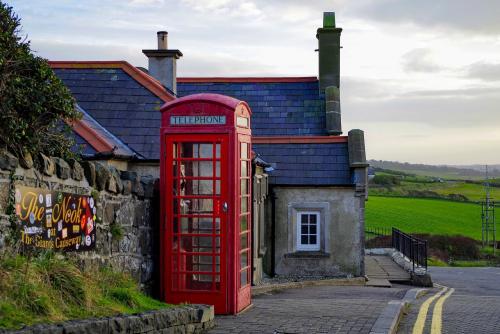
Summer Holidays
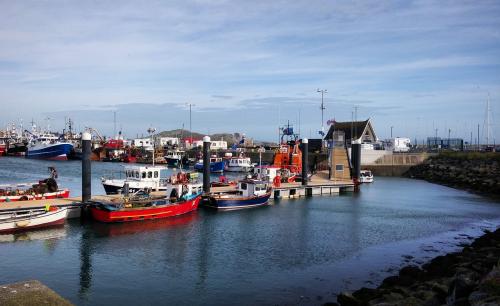
Just hurry up, because any sunny day can end with drizzling rain even in the summer.
June Bank Holiday is celebrated on the first Monday of June.
June Solstice is a season holiday. The Irish celebrate it on the 20th of June.
The anniversary of Cath na Bóinne is on the 12 th of July (Northern Ireland).
La Lunassa is on the 1 st of August.
The Irish celebrate August Bank Holiday on the first Monday of August.
Notting Hill Carnival is on the last Sunday of August.
Autumn in Ireland
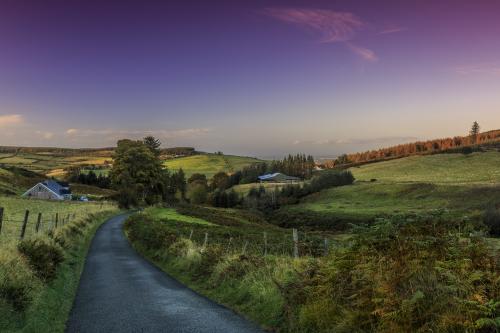
Autumn in Ireland is the harvest time. But also you can take a break from work, numerous events and festivals. Every year plenty of tourists from different countries visit the Oyster Festival, the Jazz Festival and Blues Festival in Ireland.
Perfect environment of the country is characterized by its evergreen emerald of meadows and lawns in front of the government offices even in late autumn. You can also see this color on all planes of the national airline, public buses and school uniforms of local pupils. Most of the houses in respectable parts of Dublin are ivy-covered even in January.
But that's not all ... Even if you leave the capital of the country and go to any province, emerald Ireland will remind of itself by a green uniform of postal workers, echoes with the color of pastures, where many herds of sheep and cows usually graze.
Climate of the Autumn Months
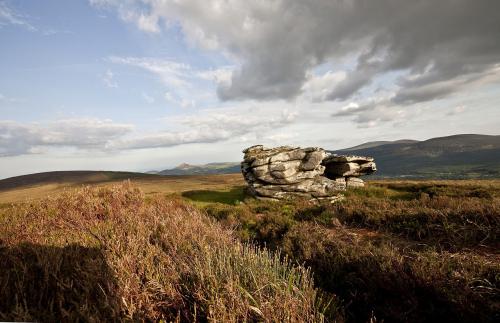
Autumn Holidays

September equinox is a season holiday. The Irish celebrate it on the 22nd of September.
October Bank Holiday is usually celebrated on the first Monday of October.
Samhain (Halloween) is on the 31 st of October.
The Irish usually celebrate Cracker Night on the 5 th of November.
Winter in Ireland
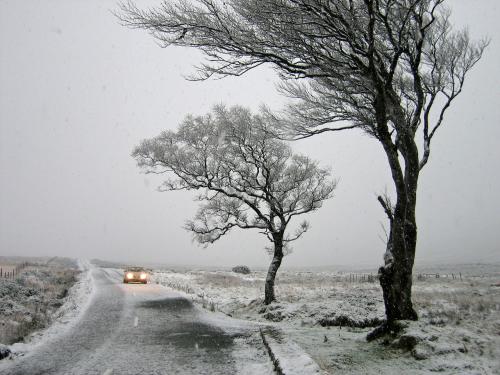
Strange and yet very true, winter is the driest period of the year in Ireland. It’s an ideal time for those people, who want to get acquainted with Ireland without umbrellas or hoods, which obscure eyes of the curious travelers.
Snow rarely falls. It doesn’t stays for long time, because winter in Ireland isn’t as cold. The lowest temperature (-19 °C) was registered almost 150 years ago and it has not been repeated since then.
The Irish love their winter and know how to celebrate New Year’s Day. They celebrate it on the 1 st of January. It is one of the most popular national holidays among ordinary people. Streets and squares of the cities and towns are crowded with people. They open the doors of their houses to all passers-by and everybody can drink a cup of hot mulled wine, hear plenty of sincere wishes and spend a few minutes talking with a hospitable owner of the house.
Climate of the Winter Months
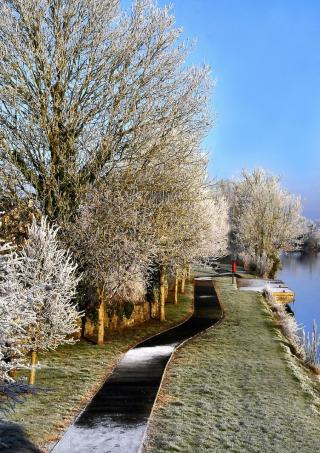
Winter Holidays
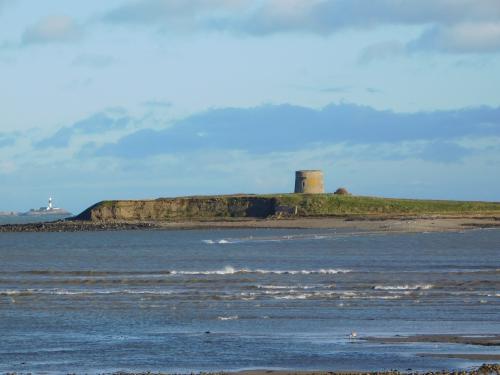
St. Nicholas Day is on the 6 th of December.
December Solstice is a season holiday which is usually celebrated on the 21st of December.
Christmas Eve belongs to the religious holidays. The Irish celebrate it at night before Christmas.
Christmas Day is one of the most popular winter holidays. They celebrate it on the 25th of December. Oh the next day St. Stephen’s Day is celebrated.
New Year's Eve is a celebrated on the 31st of December.
St. Brigit is on the 1 st of February.
Our project

Stay connected

Seasons of the Year
- About the Project
- Terms of Use
- Copyright & Permissions

FSU Football Set to Travel Third-Most Miles in ACC This Season
C ollege football is right around the corner, with Florida State set to kick off the year with a Week ‘0’ matchup against Georgia Tech in Dublin, Ireland, on August 24. With three newcomers joining the Atlantic Coast Conference, travel will increase as the ACC expands westward, adding Cal, Stanford, and SMU to boost revenue.
So, which team in the ACC will travel the most this season? Bill Speros of bookies.com did the math , and it turns out the Cal Bears will be the most travel-savvy when all is said and done, with Stanford taking the No. 2 spot.
Although FSU and Georgia Tech will take to the skies for an 8,174-mile round trip to start the year, The Seminoles will still be cashing in their travel points, landing at No. 3. Cal travels a total of 20,660.7 miles across 26 time zones, Stanford is at 14,017.59 miles across 16 time zones, and FSU will total 13,028.14 miles across 14 time zones.
READ MORE: FSU Football's 2024 Schedule Ranked As One Of The Nation's Toughest By CFB Analyst
Florida State will face two of the new ACC teams out west, SMU and Cal. However, the Bears travel to Tallahassee, FL, on September 21, making the Seminoles’ trip to Texas their only irregular conference away game outside their usual geographic area, aside from the trip to Ireland. The furthest away game in the United States for FSU will be its November 9 trip to Notre Dame, totaling 1,840 miles traveled. SMU (1,666 miles) and Duke (1,279 miles) are the next two runners-up.
FSU fans are known for their strong travel support, as seen over the past two seasons. Both ‘home and home’ games against LSU appeared like true home games for Florida State, even though neither took place in their respective home stadiums.
Coming off an ACC title season and a playoff snub that left fans feeling bittersweet, it wouldn’t be surprising to see even more garnet and gold in opposing teams’ stands this year.
WATCH: Sneak-Peak Of FSU Football's Entrance To Doak Campbell Stadium In College Football 25
Stick with NoleGameday for more e FREE coverage of Florida State football throughout the offseason
Follow NoleGameday on and Twitter , Facebook , Instagram , and TikTok
More Florida State News
• Four-Star Wide Receiver CJ Wiley Chooses FSU Football Over Georgia Bulldogs
• Lengthy Blue-Chip Wide Receiver Commits To Florida Gators Over FSU Football
• Doak Campbell Stadium Ranked Among Top 10 Toughest Places to Play in College Football 25
• FSU Football Tight End Named Among 'Must-Watch' True Freshmen For 2024 Season
This article was originally published on www.si.com/college/fsu as FSU Football Set to Travel Third-Most Miles in ACC This Season .

Mikel Arteta: '114 points wins the league next season, we'll go from there'

Arsenal manager Mikel Arteta
Arsenal manager Mikel Arteta isn't wasting any time in his mission to claim next season's Premier League title with a pre-season trip to Marbella where he has taken nine players not involved in international competitions.
The Gunners will travel to the US for pre-season and will play Premier League rivals Manchester United and Liverpool in Los Angeles and Philadelphia, respectively.
Speaking with ESPN, Arteta reflected on last season's title race with Pep Guardiola's Manchester City. Arsenal amassed 89 points along with having the league's best defensive record but still fell short. He predicted that his side would need (or at least aim for) 114 points to win the league next season.
"One-hundred-and-fourteen [the maximum points available] wins it and then you start from there. You know that the margins are really, really small and tight and the competition is going to be even harder than the previous season.
"You go game-by-game, earn the right to win every game, that's all we can think of, and try to improve our players. And make them believe they can do it because now they are good enough to do it."
The Spaniard, however, admitted he didn't want to get over last year's disappointing title loss to City.
"I don't want to get over it. I am really satisfied with the way the team is performing, the way the players are evolving, what the team transmits, the momentum we have as a football club.
"There is a lot of planning to do, a lot of reflection and analysis to do to understand what we did really well in the season, where are the areas we can improve and develop and we are right on it. We are really excited and looking forward to a new season.
"When you are analytical and you gather all the stats and everything the team has done over the past 11 months in the Premier League, we should have won it. That's what the stats say. The reality is that we didn't so there is something that is there that we haven't managed as well as Man City or other clubs in the past. I think we understand where those margins are.
"I think we have come very far. We have been really consistent now in the past 24 months in terms of performance and the levels that we want to hit. But those margins are super small. One thing is to get the 90% that we want and actually the 10%, 5%, 1% is what defines success and winning major trophies. Now we have to continue to do all the right things that we are doing and just make those small margins that are going to be able to win the tournaments."
Arsenal will play Manchester United at SoFi Stadium in Los Angeles on July 27 before travelling to Philadelphia's Lincoln Financial Field to face Liverpool on July 31.
More in this section

Late Larkin goal gives Rams crucial victory
Sport Newsletter
Get the latest news from the world of sport along with the best opinion from our outstanding team of sport writers, direct to your inbox every Friday
Please click here for our privacy statement.
FOLLOW IRISH EXAMINER
By clicking on 'Sign Up' you will be the first to know about our latest and best sporting content on this browser.
You have accepted push notifications for this content. If you would like to manage your push notification preferences, you can do so here .
Latest news from the world of sport, along with the best in opinion from our outstanding team of sports writers

Friday, July 5, 2024 - 9:00 AM

Thursday, July 4, 2024 - 11:00 PM

Thursday, July 4, 2024 - 10:00 PM

Family Notices

Select your favourite newsletters and get the best of Irish Examiner delivered to your inbox
© Examiner Echo Group Limited
Press Herald
Account Subscription: ACTIVE
Questions about your account? Our customer service team can be reached at [email protected] during business hours at (207) 791-6000 .
- Local & State
- Arts & Entertainment
Spirited ‘Funny Girl’ captures excitement of early musical theater
The show that made Barbra Streisand famous is playing at Maine State Music Theatre through July 13.

You are able to gift 5 more articles this month.
Anyone can access the link you share with no account required. Learn more .
With a Press Herald subscription, you can gift 5 articles each month.
It looks like you do not have any active subscriptions. To get one, go to the subscriptions page .
Loading....
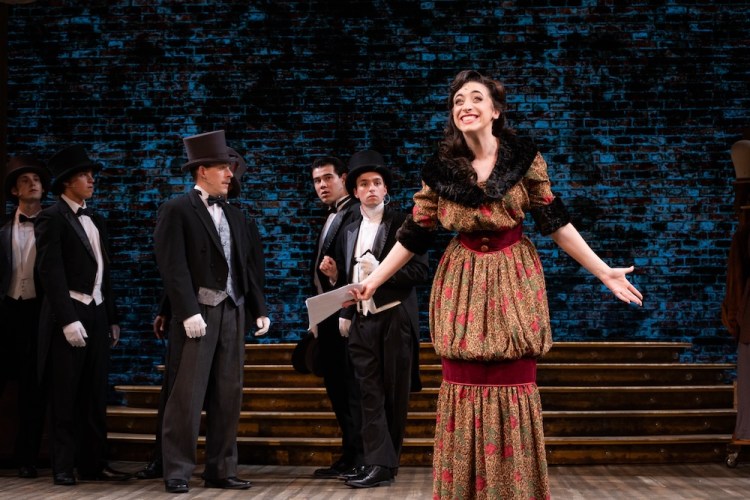
Jenna Lea Rosen as Fanny Brice with the cast of “Funny Girl” at Maine State Music Theatre. Photo by MSMT/Jared Morneau Photography
Who are the luckiest people in the world? At least for theater fans, the answer is “people who need people,” a line made famous well over half a century ago by Barbra Streisand in the original production of the musical “Funny Girl.”
THEATER REVIEW
WHAT: “Funny Girl: the Musical” by Maine State Music Theatre
WHERE: Pickard Theater, Bowdoin College Campus, Brunswick
REVIEWED: June 28 (matinee); continues through July 13
TICKETS: Starting at $93
CONTACT: 207-725-8769, msmt.org
On the heels of the show’s recent Broadway revival, the Maine State Music Theatre has opened a spirited production of the classic musical on its home stage at the Pickard Theater on the campus of Bowdoin College in Brunswick.
The show primarily captures the rousing excitement of early musical theater while unavoidably making us think about how it launched the career of Streisand. At a lengthy but enjoyable two-and-one-half hours, plus intermission, it’s a show that still charms with its memorable songs, old-style comedy and bittersweet love story.
The impressive production, directed and choreographed by Kenny Ingram and with the time-honored music of Jule Styne, lyrics by Bob Merrill and book by Isobel Lennart, tells the semi-fictionalized story of Fanny Brice, a real-life figure who rose from humble origins to showbiz stardom as a give-it-everything-you’ve-got performer in the early 20th century.
At first socially awkward and vulnerable, but with a unique talent and an admirable determination to succeed, Fanny gained the attention of famed impresario Florenz Ziegfeld, Jr. and went on to star in many of his glitzy stage shows. At the same time, Fanny’s personal life was a bit of a rollercoaster ride.
Jenna Lea Rosen takes the lead role and scores comedically with her initially wide-eyed approach to Fanny’s personal and professional challenges. Armed with a feisty “New Yawk” accent, the actress easily takes charge of backstage, front stage and offstage scenes. Her vocals are compelling on both comic numbers (“Sadie, Sadie” and “Rat-Tat-Tat-Tat”) and in more intimate moments (“People” and “Don’t Rain On My Parade”). Advertisement
Douglas Raymond Williams plays Fanny’s handsome rogue of a love interest who brings her to a fuller life but fails her in the end. His opera-trained vocals alongside Rosen (“I Want to be Seen With You” and “You are Woman, I am Man”) establish both the heat and uncertainties within their relationship.
Among the many standout secondary actors and choristers, Tyler Johnson-Campion is a tap-dancing whiz. His work with Sue Cella, who plays Fanny’s mom, is a treat on “Who Taught Her Everything.” Cella also has some fun moments squabbling with a competitive friend played by Maine State favorite Charis Leos.
Tommy Betz shines as a Tenor and David Girolmo returns to the Pickard stage as the stern but supportive Mr. Ziegfeld. Jeremiah Valentino Porter gets to toot a hot horn on “Cornet Man.”
The Maine State Music Theatre Orchestra, led by Jason Wetzel, mixes up the period flavors with a newer Broadway expansiveness. The costumes designed by J. Theresa Bush and scenic design by Jeffrey D. Kmiec take the audience back to a distant era when musical theater and its early stars were on the rise.
Steve Feeney is a freelance writer who lives in Portland.
Modify your screen name
Join the Conversation
Please sign into your Press Herald account to participate in conversations below. If you do not have an account, you can register or subscribe . Questions? Please see our FAQs .
Your commenting screen name has been updated.
Send questions/comments to the editors.
U.K. election exit poll projects big win for Labour, end to 14 years of Conservative rule
As popularity of cliff house beach grows, cape elizabeth looks to limit parking, auburn psychologist killed in maine turnpike crash, rep. golden’s op-ed sends political shockwaves, but also fits campaign style, where to watch fourth of july fireworks, member log in.
Please enter your username and password below. Already a subscriber but don't have one? Click here .
Not a subscriber? Click here to see your options

IMAGES
COMMENTS
Visiting Ireland in February can also be risky weather wise, with average highs of 8°C/46.4°F and average lows of 2°C/35.6°F.. Spring is still far from the horizon and the days are short and chilly. In the past, we've had heavy snow fall, flooding and stormy weather in February. February is the best time of year to go to Ireland if you have a limited budget and you aren't too phased by ...
Here's a basic breakdown of what you can expect. High Season: June to August, plus the month of March. Shoulder Seasons: April to May and September to November. Low Season: December to February ...
April to June is the best time for golf, flowers and coastal drives. With temperatures an average high of 18°C (64°F) and prices that haven't maxed out yet, this is the best time to take a road trip along Ireland's magnificent Wild Atlantic Way.It's a 2600-km (1600 miles), signposted west coast route that connects west Cork in the south to Donegal in the north.
By Rick Steves and Pat O'Connor. Peak season (June through early September) is our favorite time to visit because of the longer days (with daylight from 4:30 until 22:30 — Dublin is as far north as Edmonton, Canada). Note, though, that summer crowds affect Dublin, the Cobh/Cork region, and Belfast, partly due to increasing cruise-ship traffic.. Travel during "shoulder season" (mid-April ...
Ireland is a magical place to travel for breathtaking natural beauty, fascinating history, and a vibrant culture of music and dance. ... Summer is peak tourist season in Ireland, due to warmer weather and outdoor activities. During these months, temperatures range from mild to warm, averaging around 15-20°C (59-68°F). The days are long, with ...
The best time to visit Ireland is between June to September for warm, drier weather and a full calendar of cultural festivals. Highs in the mid-to-upper 60s create ideal conditions for sightseeing in cities like Dublin, hiking the Dingle Peninsula and discovering its secluded beaches, exploring the countryside and medieval castles, and enjoying lush, green landscapes at scenic national parks ...
Ireland in November marks the beginning of the off-season in Ireland, and we tend to experience average temperatures between 11°C/52°F and 6°C/43°F across the island. ... Over the years, the website has published thousands of meticulously researched Ireland travel guides, welcoming 30 million+ visitors along the way.
Dingle Peninsula, Ireland. The best time to visit Ireland is between March and May, and September to November, when it's not as crowded as it is in summer, or as cold as it is in winter. That said, Ireland has a mild, temperate climate and although it's rainy at times, you can visit all year round. The changes in weather are not normally ...
May in Ireland. May is the best time to visit Ireland to beat the summer crowds. This is the start of the high season, but compared to June and July, May is comparatively quieter. The weather is great in May, although of course, you always need to be prepared for a rain shower. Head to popular spots along the Wild Atlantic Way, hike to ...
Best time to travel in Ireland - Seasons Guide. Tourist seasons can play a big role in deciding the best time to travel to Ireland. Peak or High season in Ireland is from June to September and the week surrounding St Patrick's Day (March 17 th). These are by far the busiest months with a huge influx of visitors.
Read our travel guide to find out when to go to Ireland, including tips on weather you can expect per season. Ireland is a great travel destination all year round. However, you can make your Ireland holiday more enjoyable if you pick the right time to explore this stunning European country. So, when
September, October, and November. Fall is one of the best times to visit Ireland. Weather in Ireland in October and the rest of autumn brings mild days that settle right around 50°F. Plus, the summer visitors will be home, the hills will still be green, and Ireland's top attractions will still be open.
June heralds the start of the high summer season in Ireland along with the warmer average temperatures of 10-18 °C (50-64 °F). Rainfall in June is a reality in Ireland and unlikely to be completely avoided during your trip. Once you keep this in mind and are well prepared, rain is not going to hinder your Ireland travel plans too much.
Weather is too cold this time of year in Ireland to be enjoyable for warm weather travelers. The average high during this season is between 49°F (9.4°C) and 46.4°F (8°C). On average, it rains or snows a great amount: 8 to 11 times per month. These times of year are fairly slow with tourists. Best Times to Travel › Ireland
Summer is Ireland's peak season, thanks to the temperate climate and gorgeous sights at every turn—which means prices will naturally be higher. For a deal, consider the colder winter months of the off-season, which see the least tourism. ... Susan Stephens is a scientist-turned-travel writer, with a passion for exploring new places and ...
Like most European places, Ireland's high season runs from July to mid-September. This is when you will find the best weather, as noted above, but also crowds. Days are longer, the weather is warmer, and hotel and car rental prices are at their highest. It's definitely the best time to visit Ireland for ideal weather.
Summer (June - August) Best for: enjoying traditional Irish meals, exploring World Heritage-listed sites, going to the beach, and general sightseeing. Summer is the peak season to travel to Ireland for one main reason: the weather during the months of June, July, and August is the best it will be all year. With around 16 - 18 hours of sunlight ...
Ireland in July. The peak tourist season is well underway in Ireland in July. The weather is generally good with average temperatures of about 12-20 °C (54-68 °F) to be expected. School children have holidays in Ireland in July, so be aware of more domestic tourists and book your accommodation in advance. Ireland in August
Summer (June - August) Hillsides of the Dingle Peninsula, County Kerry, Ireland. Summer is the the best time for visiting Ireland if you don't mind crowds at major attractions, as well as in smaller cities. This is the peak season for tourists, and students are out and about enjoying their summer holidays.
Ireland is located on island in northern part of the Atlantic Ocean with all implied features of weather. Western coasts of the island are warmed by air masses and waters of the North Atlantic current. But with warmth comes humidity so annual amount of precipitation in western Ireland reaches 1600 (63") mm while in eastern and central areas there is up 1000 mm (39.7 ").
Example 3: If you're looking for long ish days, less crowds and mild temperatures, October will be best. 2. Time spent mapping out your Irish road trip is worth its weight in gold. Click to enlarge map. One of the more overlooked tips for traveling to Ireland for the first time revolves around your road trip route.
9. Pick the right season to travel in Ireland. June to mid-September is high season: the weather is at its best and the most popular parts of the country - Dublin, Kerry and the southern and western coasts - are at their busiest. The downside is big crowds and the highest rates for accommodation and car hire.
June Solstice is a season holiday. The Irish celebrate it on the 20th of June. The anniversary of Cath na Bóinne is on the 12 th of July (Northern Ireland). La Lunassa is on the 1 st of August. The Irish celebrate August Bank Holiday on the first Monday of August. Notting Hill Carnival is on the last Sunday of August. Autumn in Ireland
C ollege football is right around the corner, with Florida State set to kick off the year with a Week '0' matchup against Georgia Tech in Dublin, Ireland, on August 24. With three newcomers ...
The Gunners will travel to the US for pre season and will play Premier League rivals Manchester United and Liverpool. ... Linn Dubh, Assumption Road, Blackpool, Cork. Registered in Ireland: 523712.
"With thousands of people arriving in Ireland for the general tourist season and huge events like Taylor Swift at the Aviva, we are set to see strong demand for taxi services," said Eoghan O'Mara ...
Orlando Pride goalkeeper Anna Moorhouse has been named in the England Women squad for the first time. The 29-year-old has made 15 appearances so far this season for the NWSL side, keeping seven ...
The show that made Barbra Streisand famous is playing at Maine State Music Theatre through July 13. Who are the luckiest people in the world? At least for theater fans, the answer is "people who ...